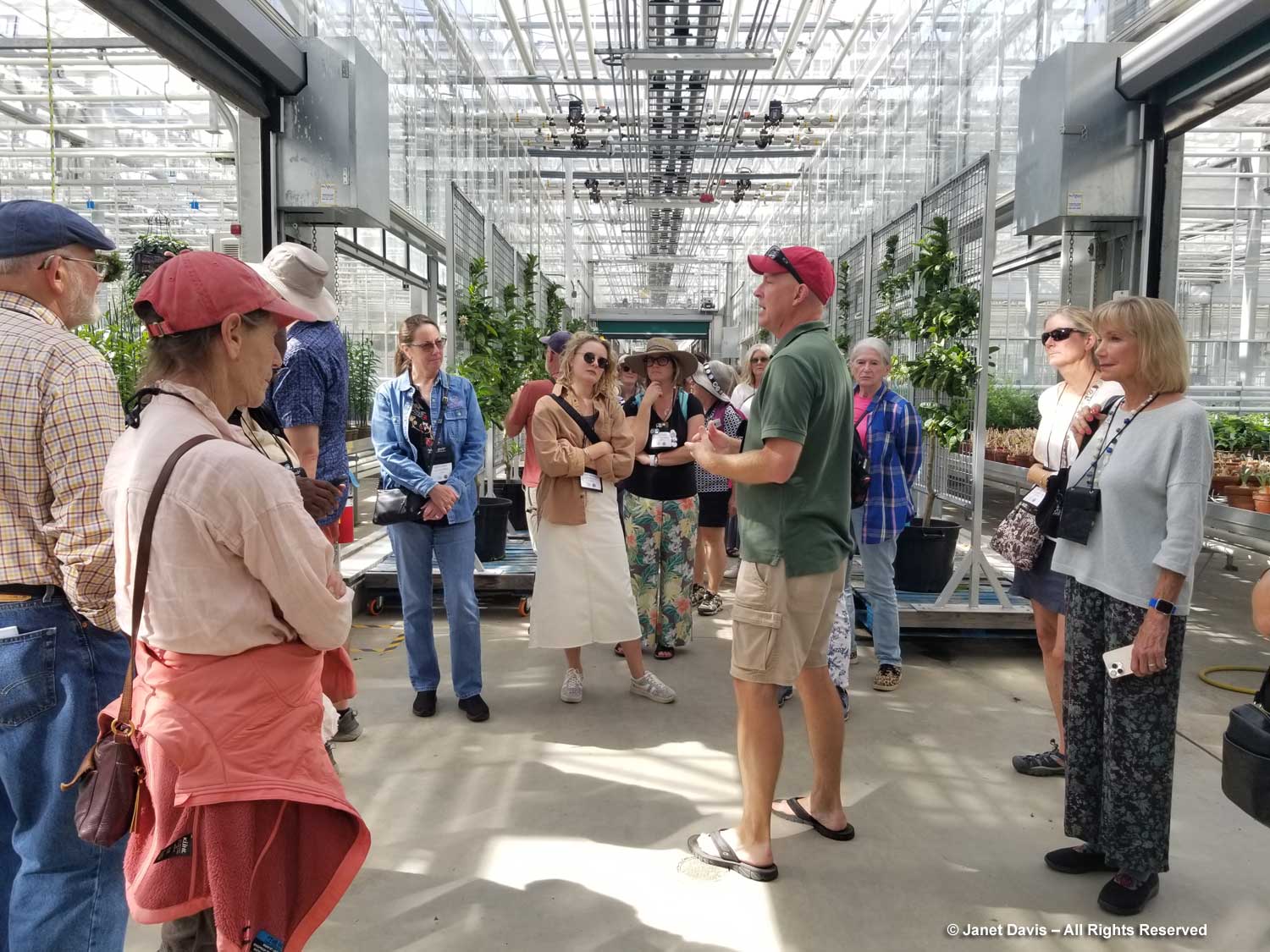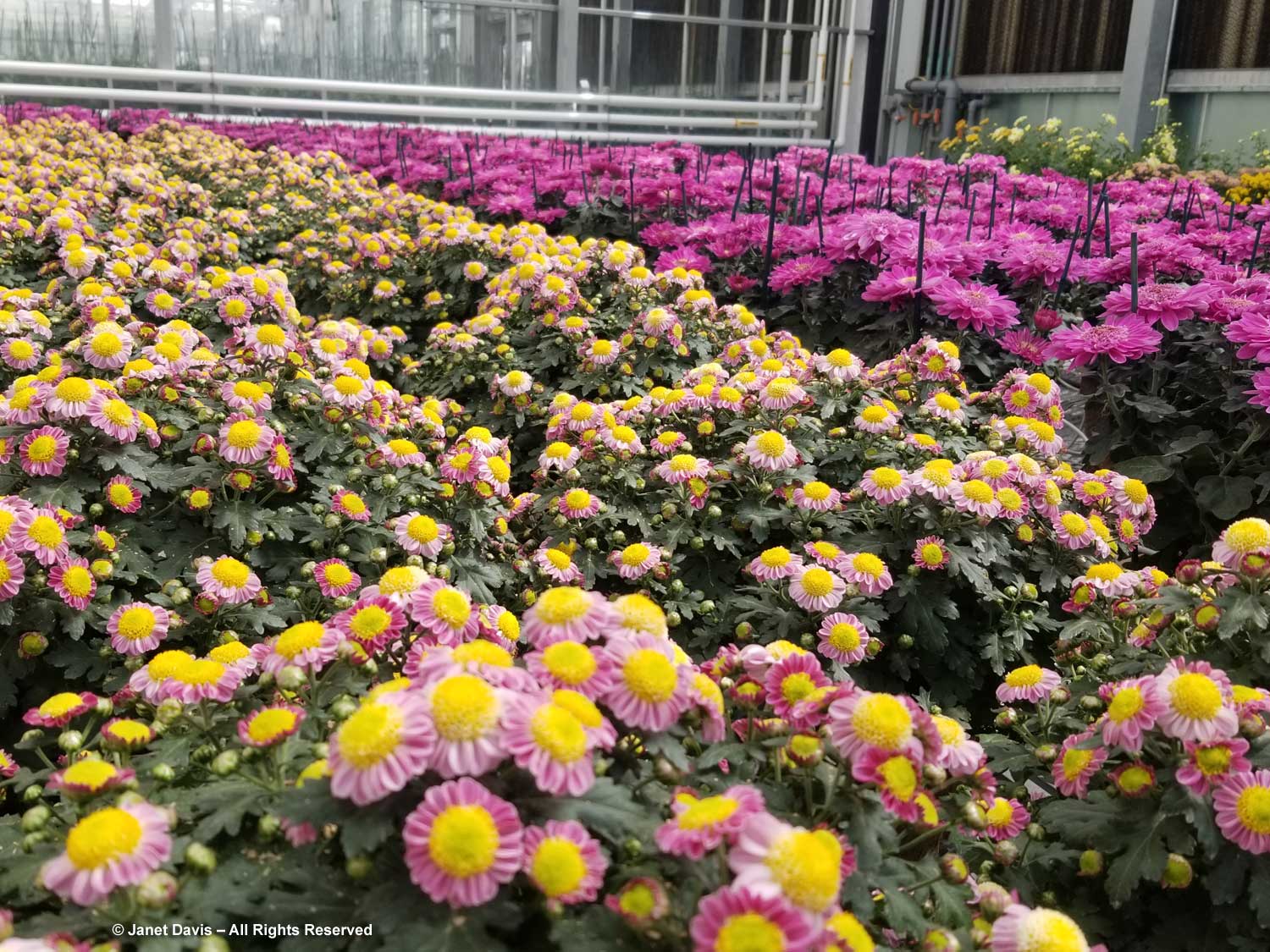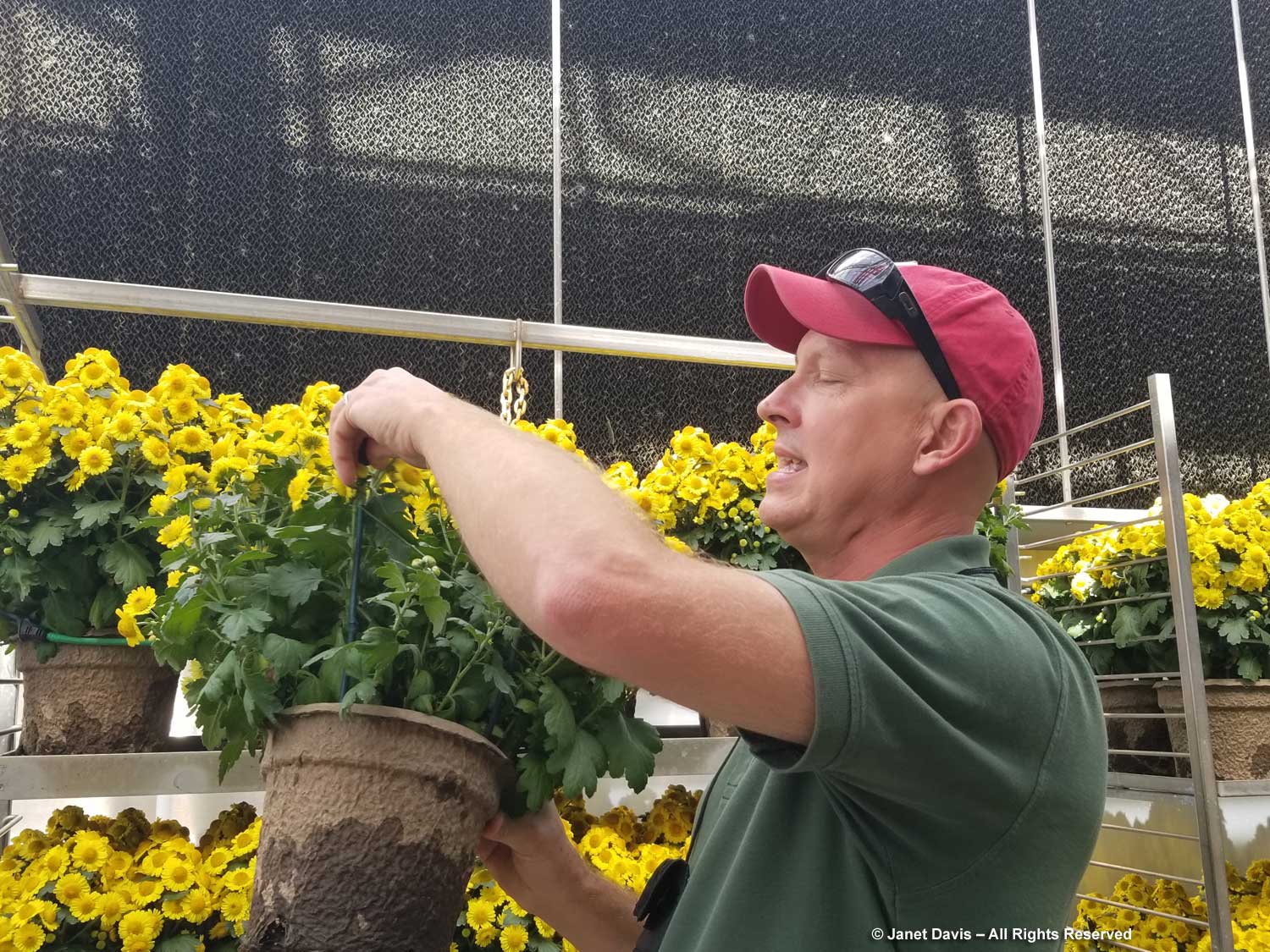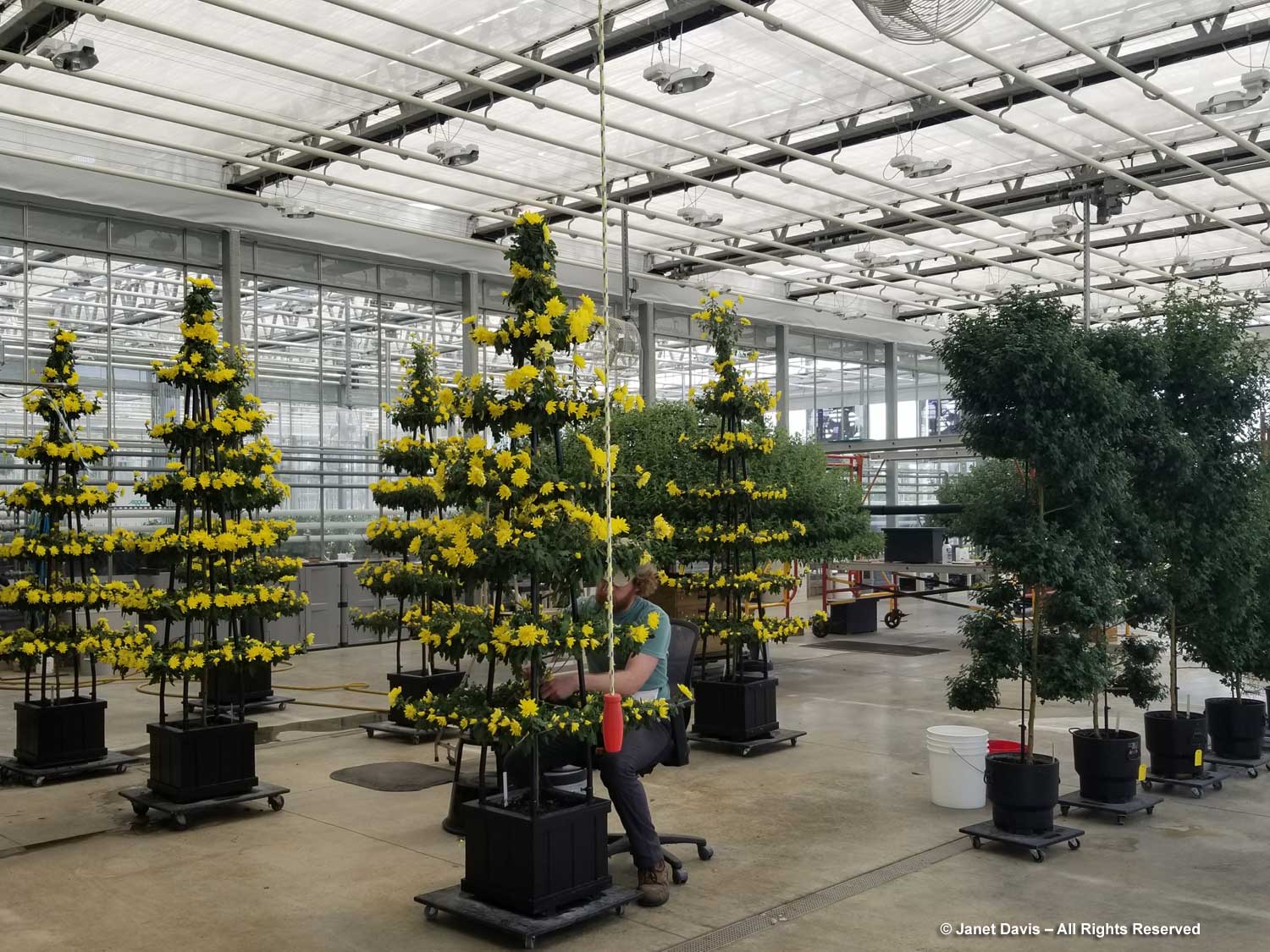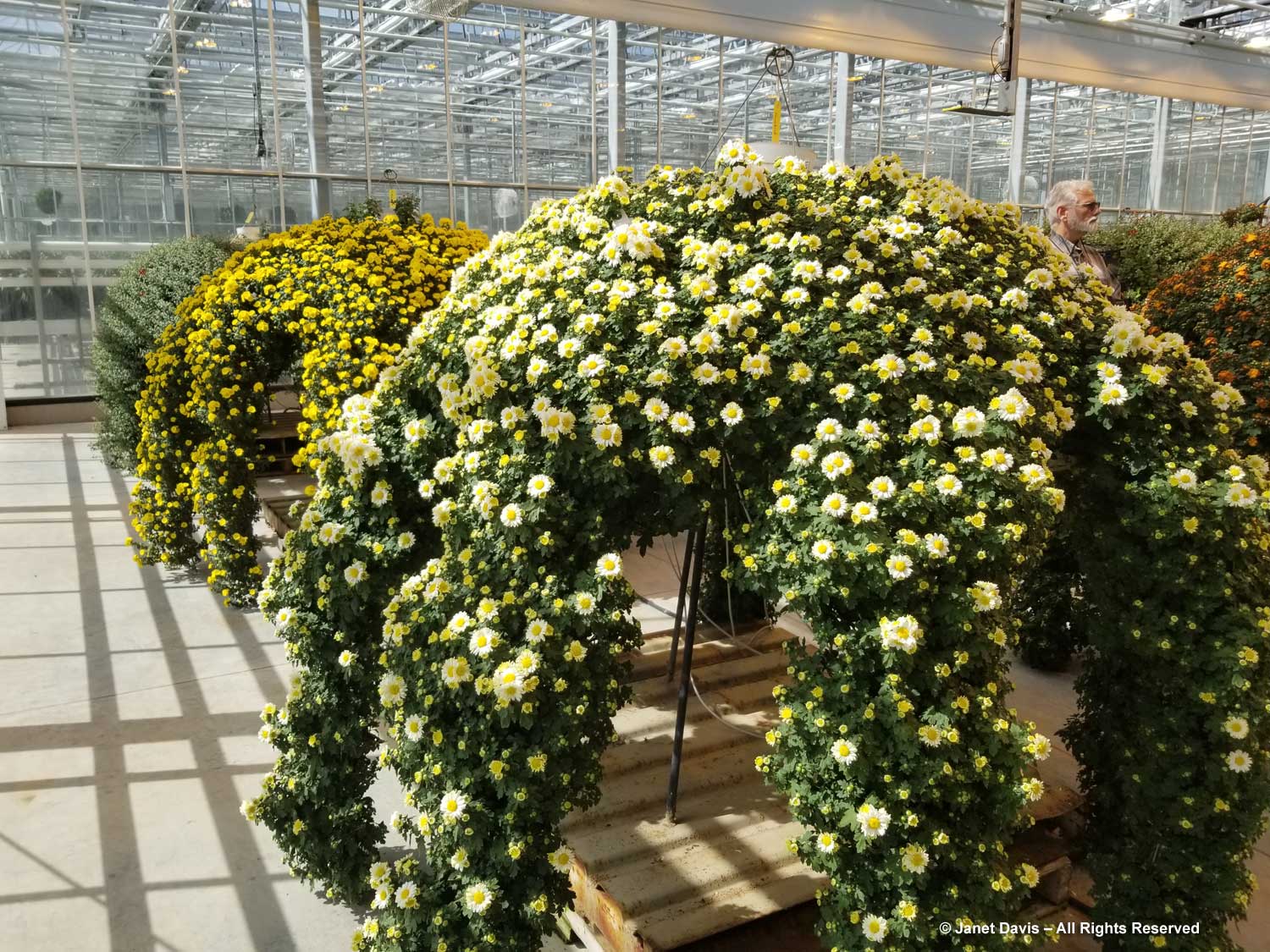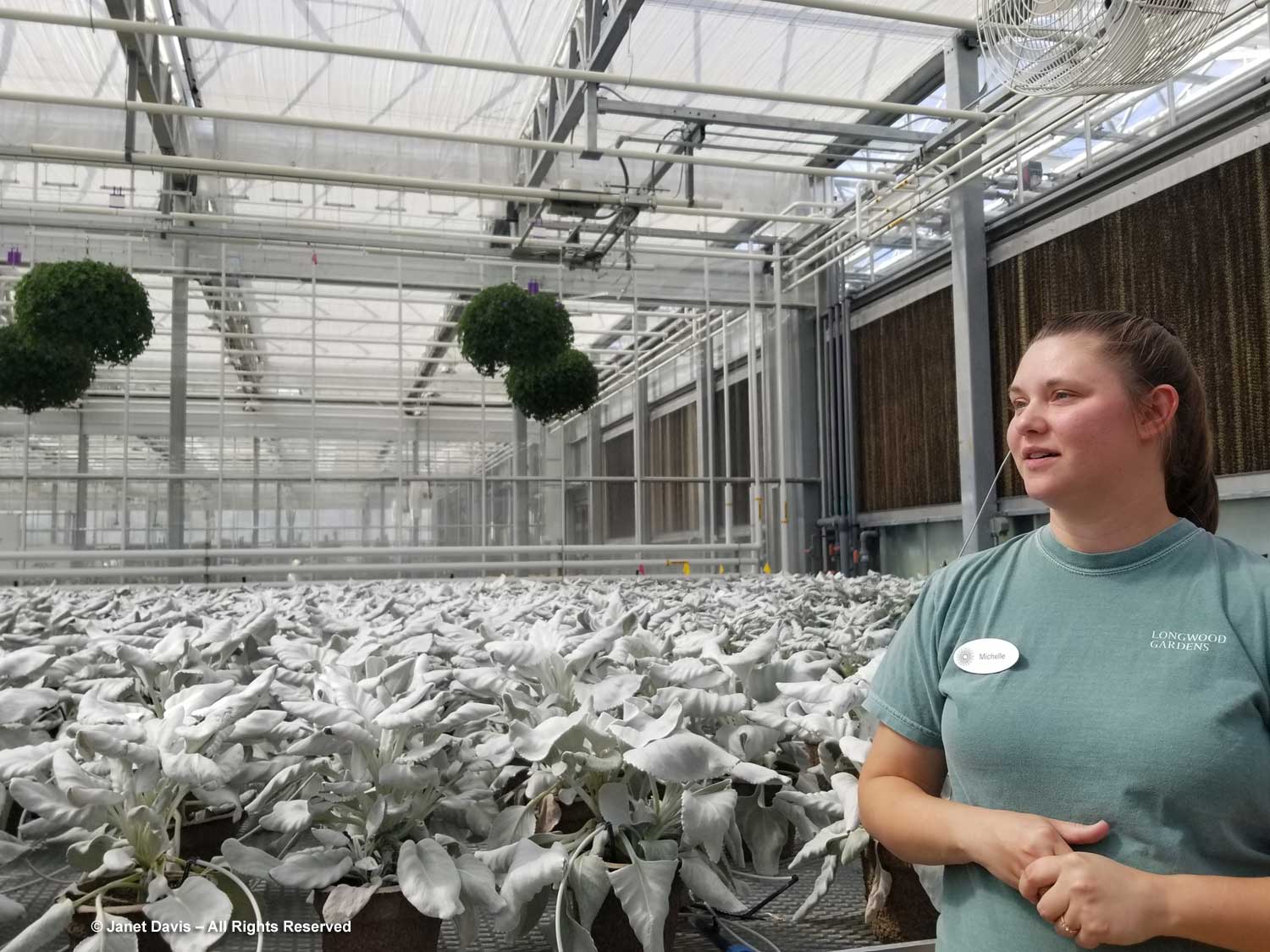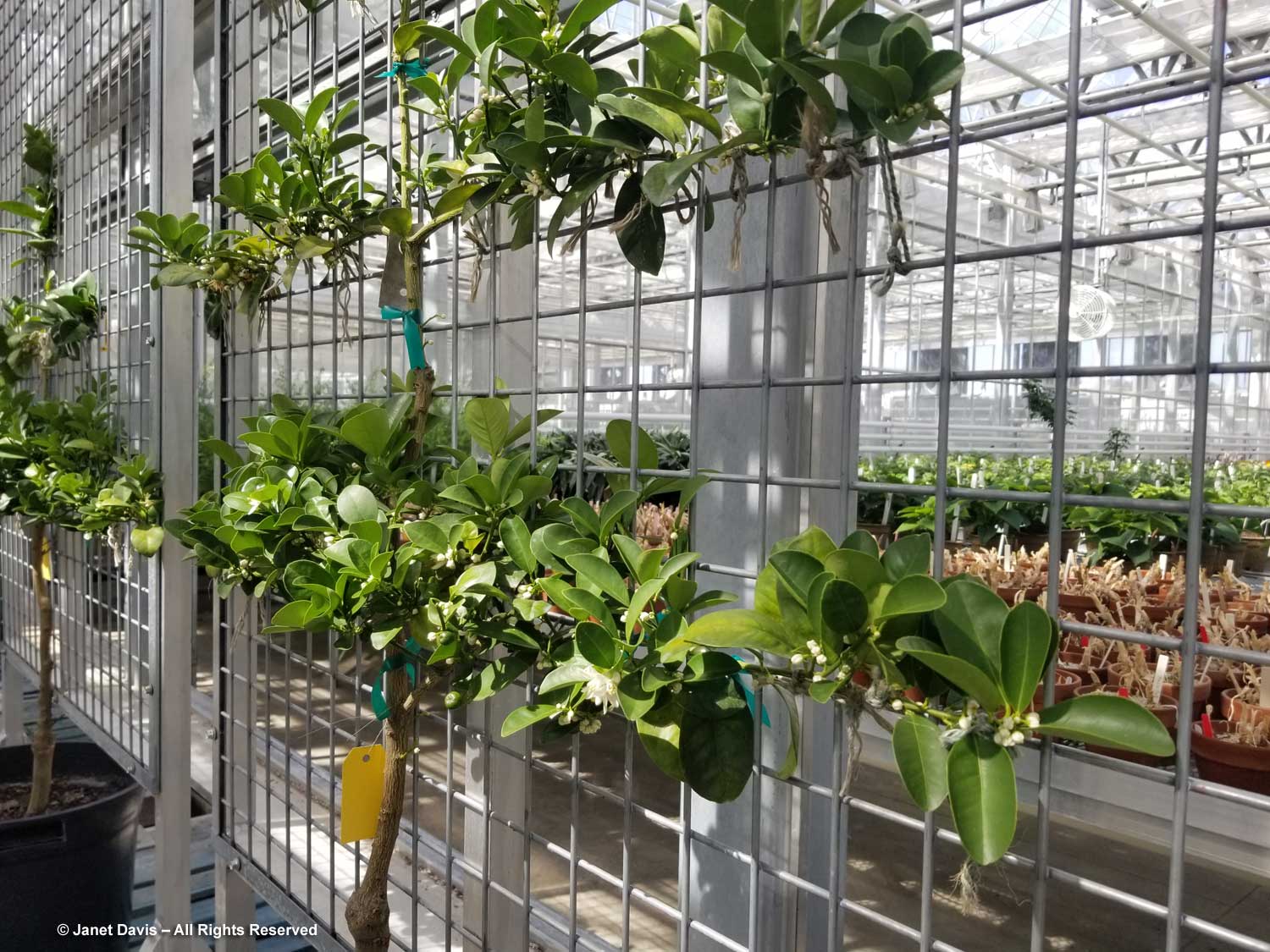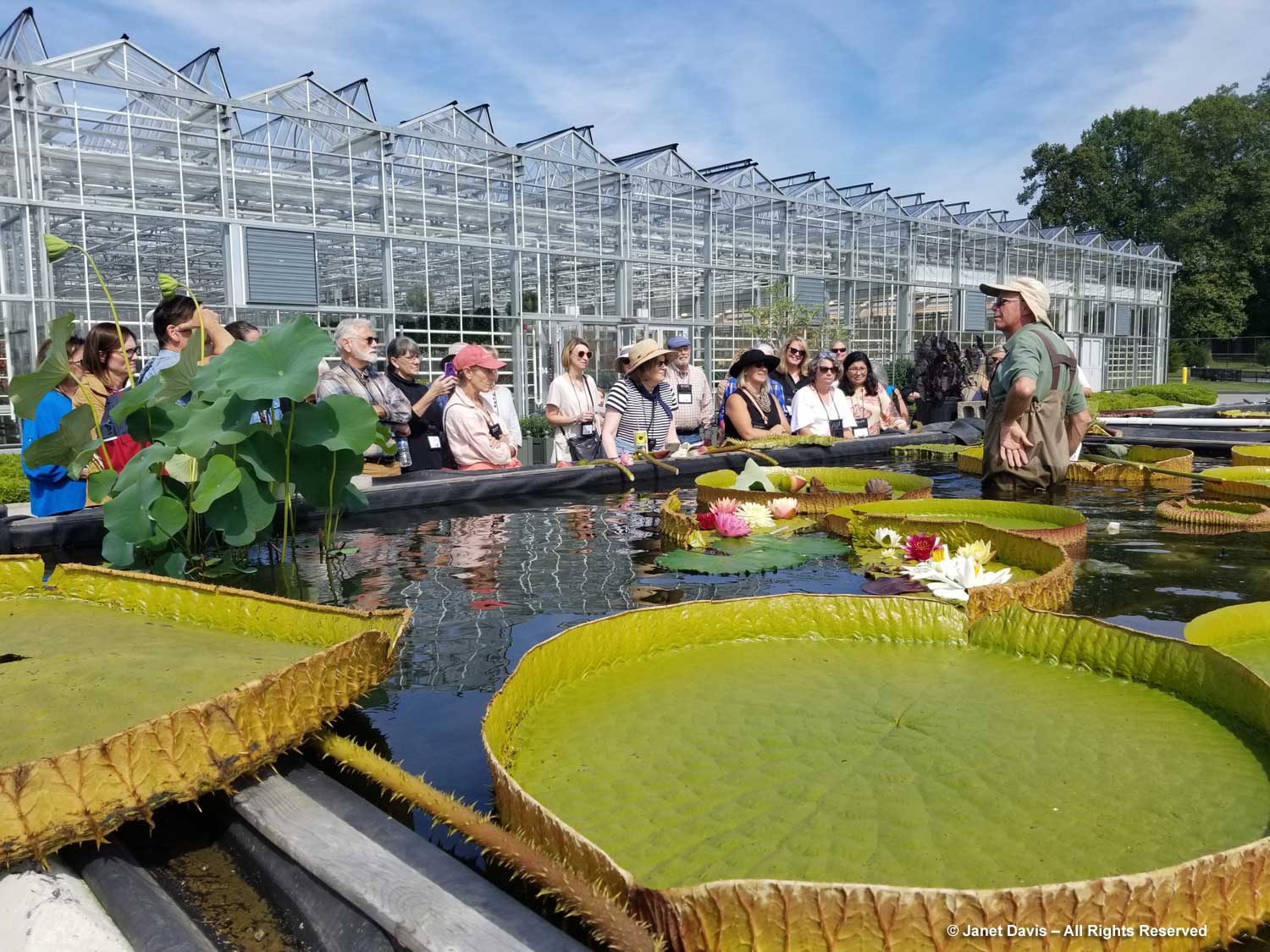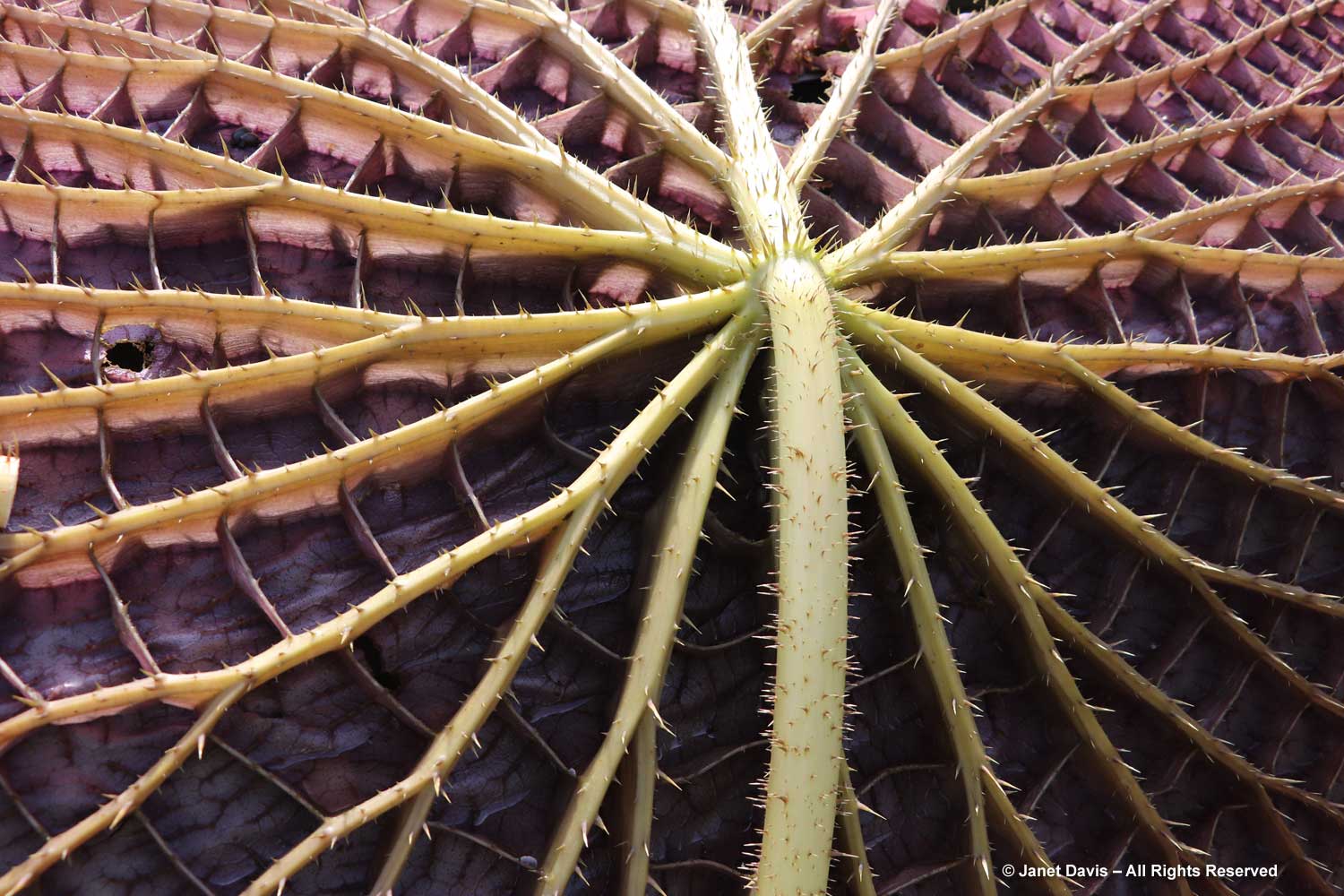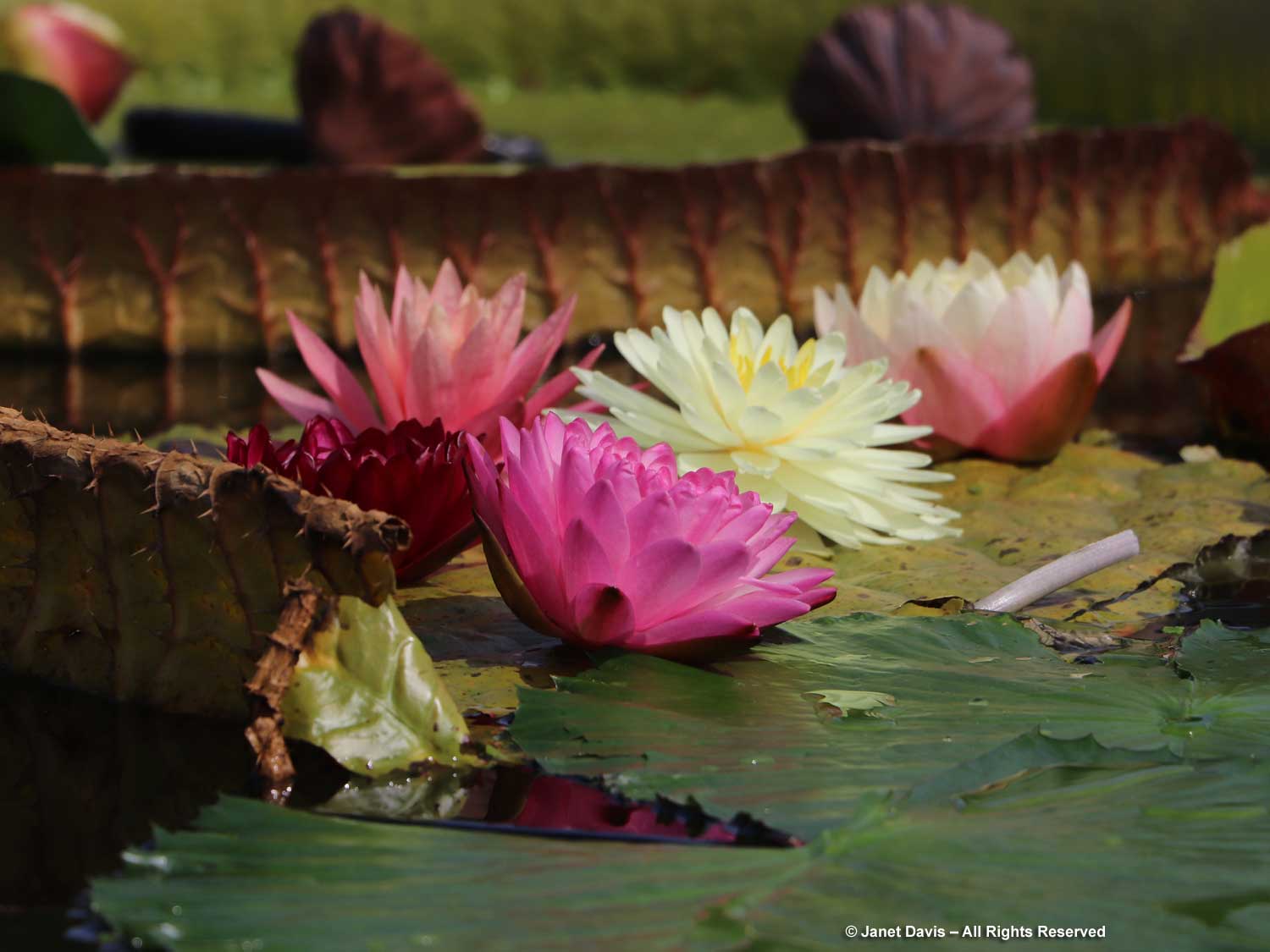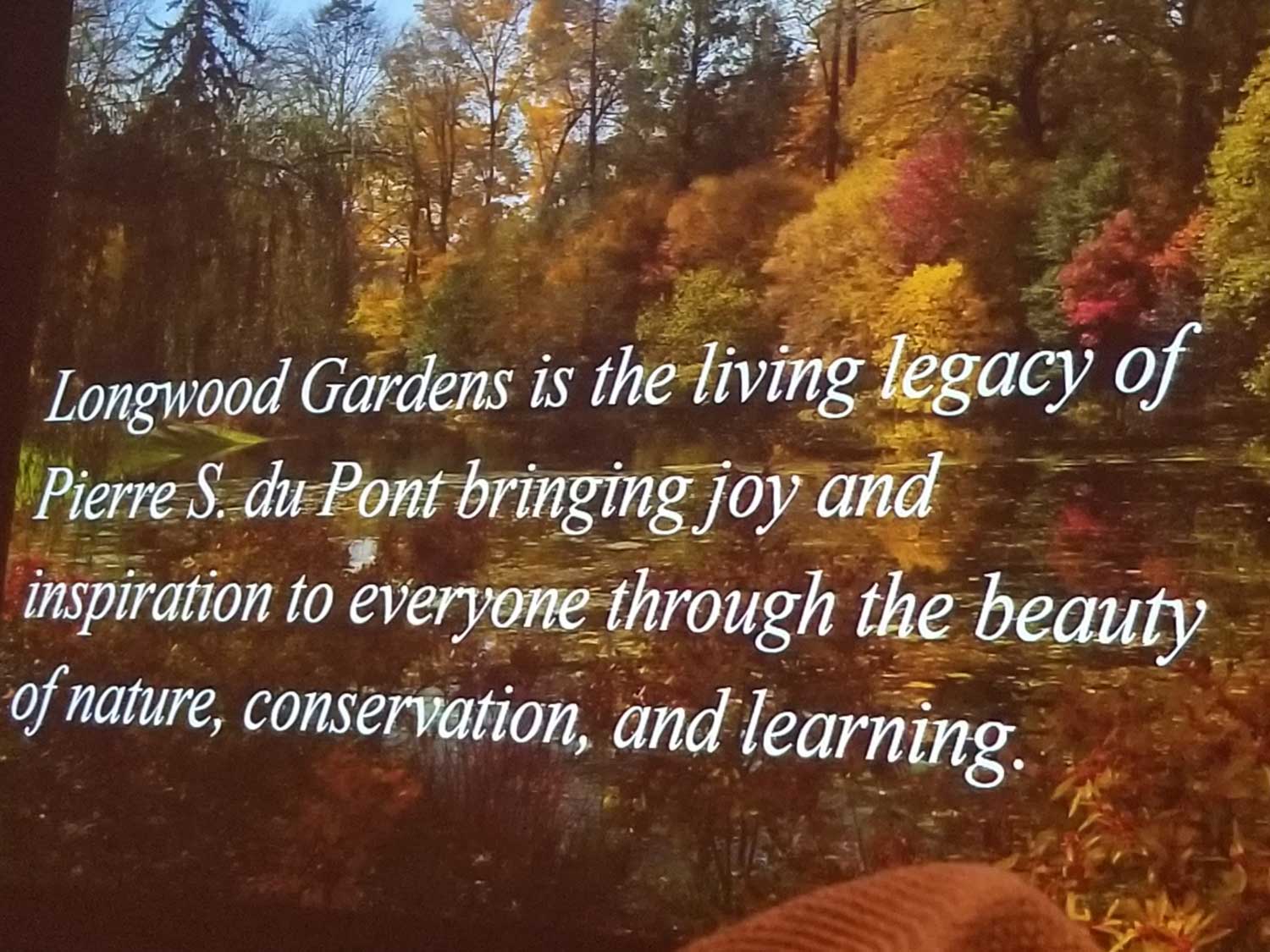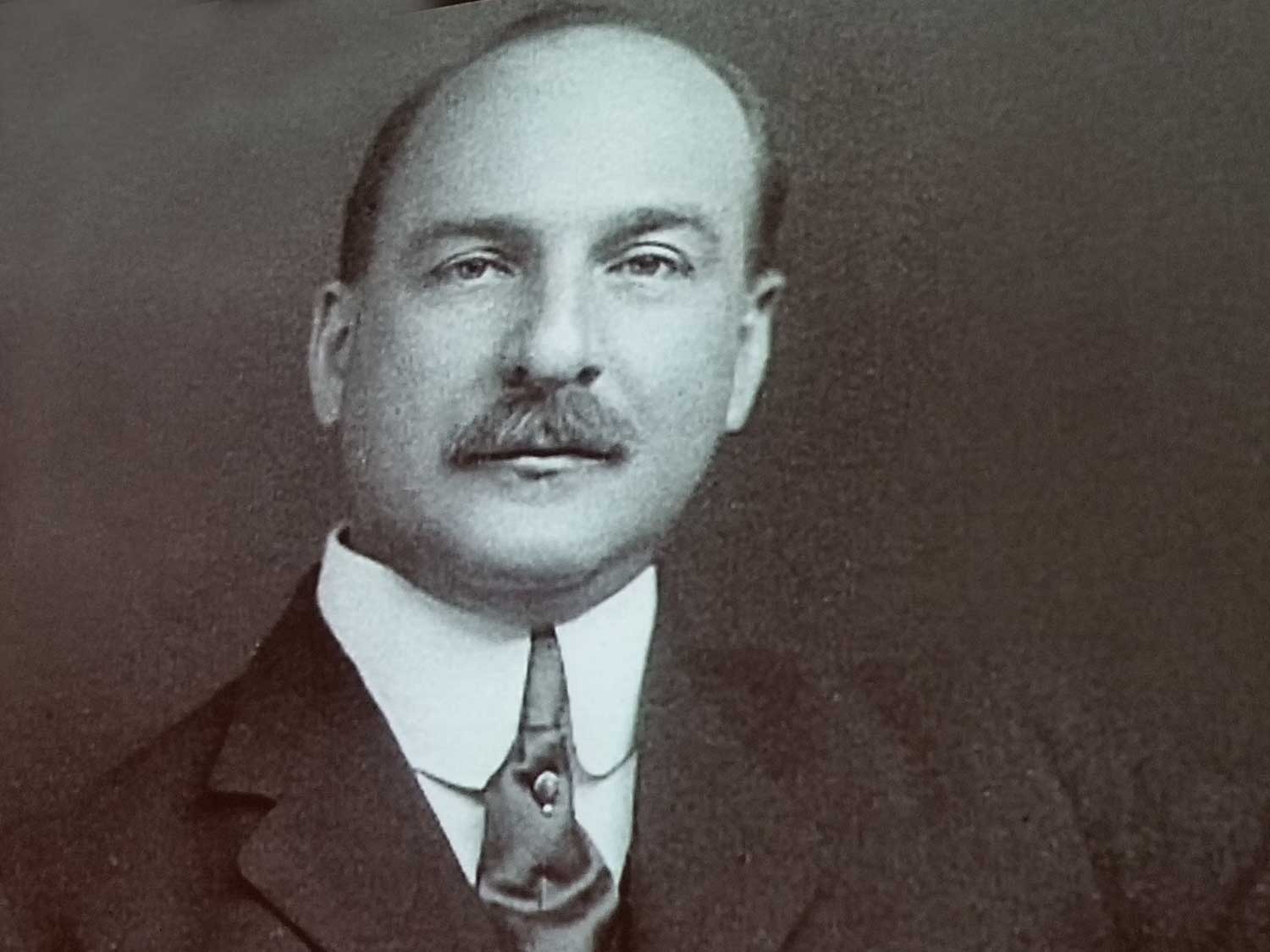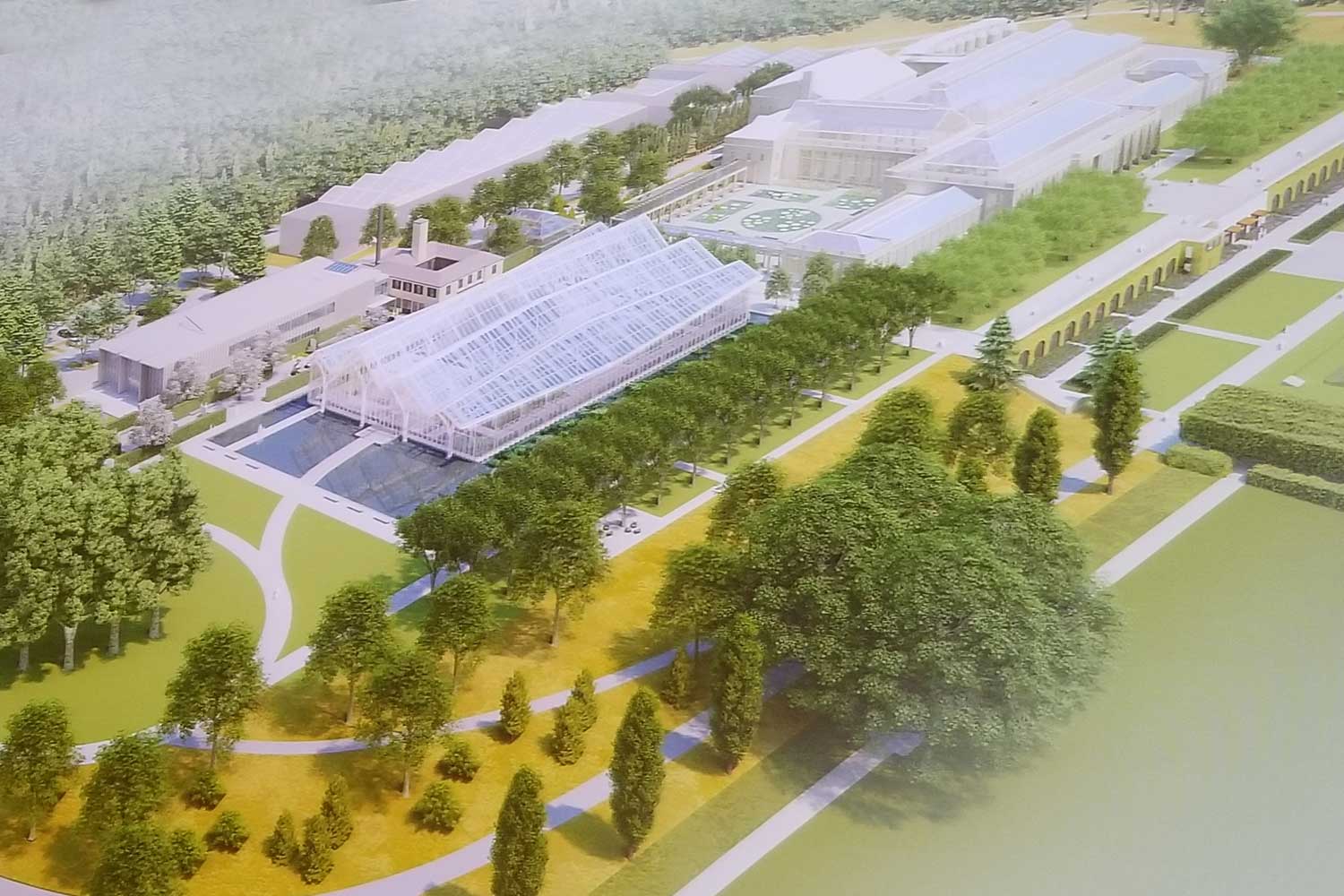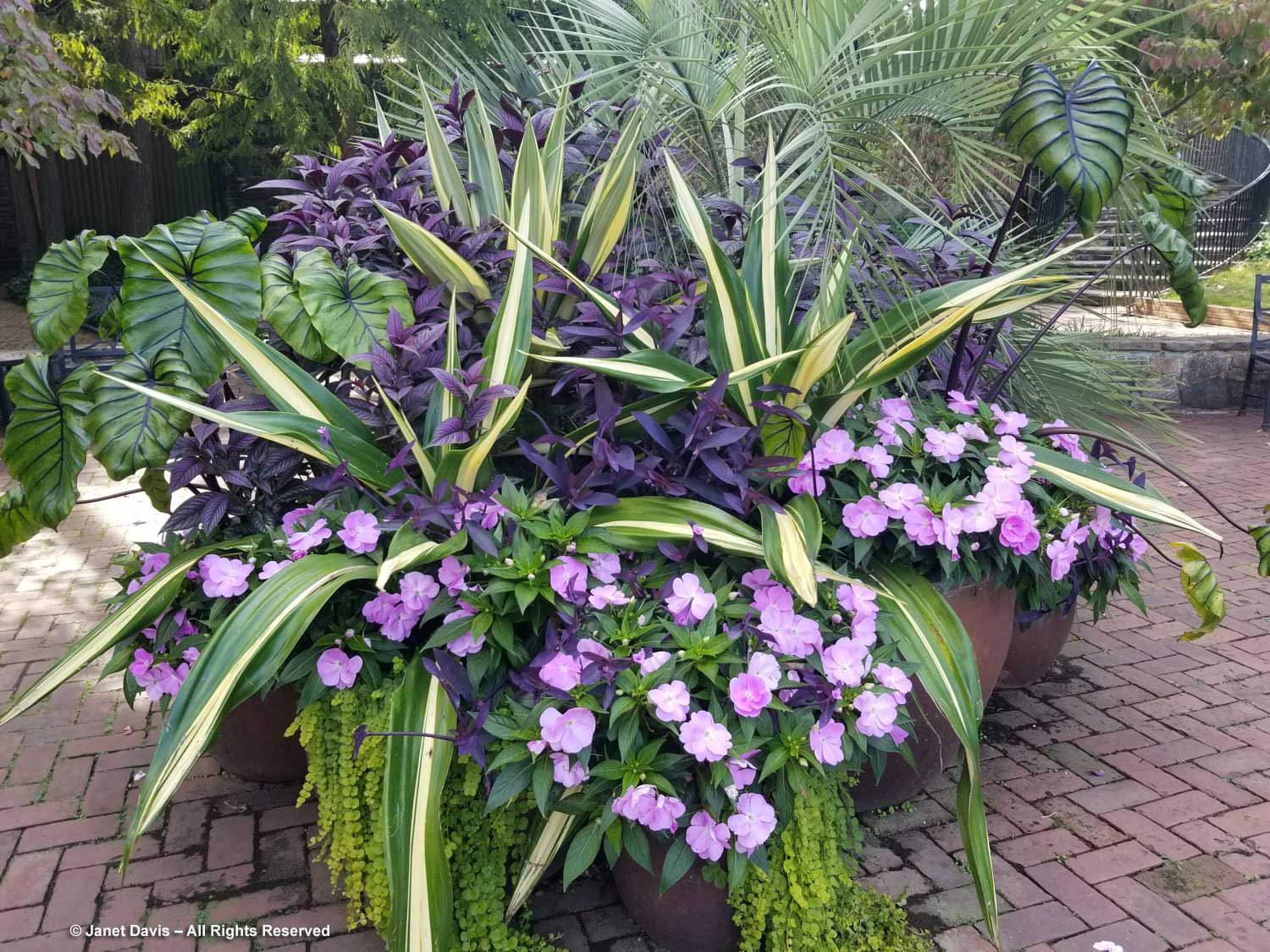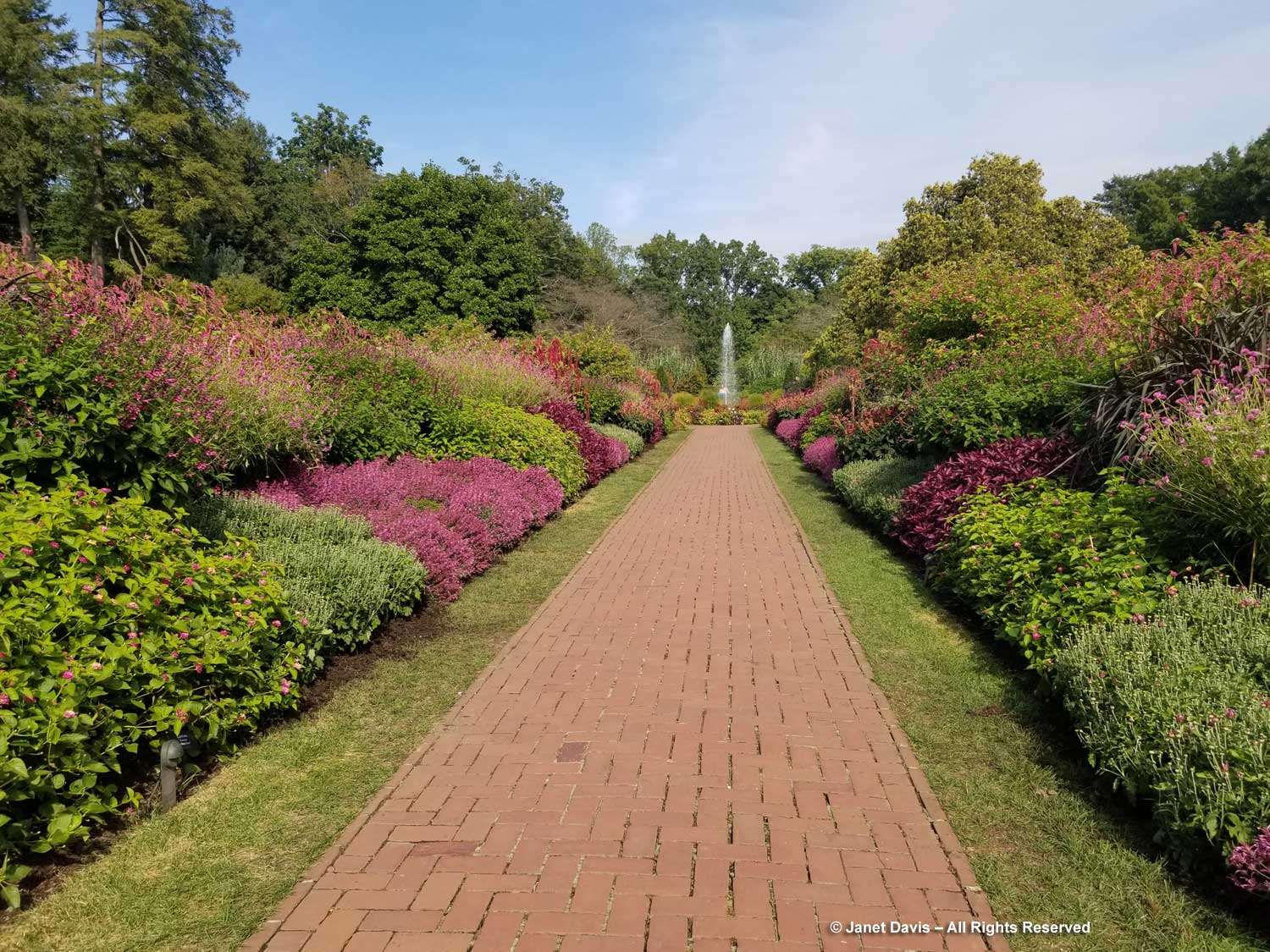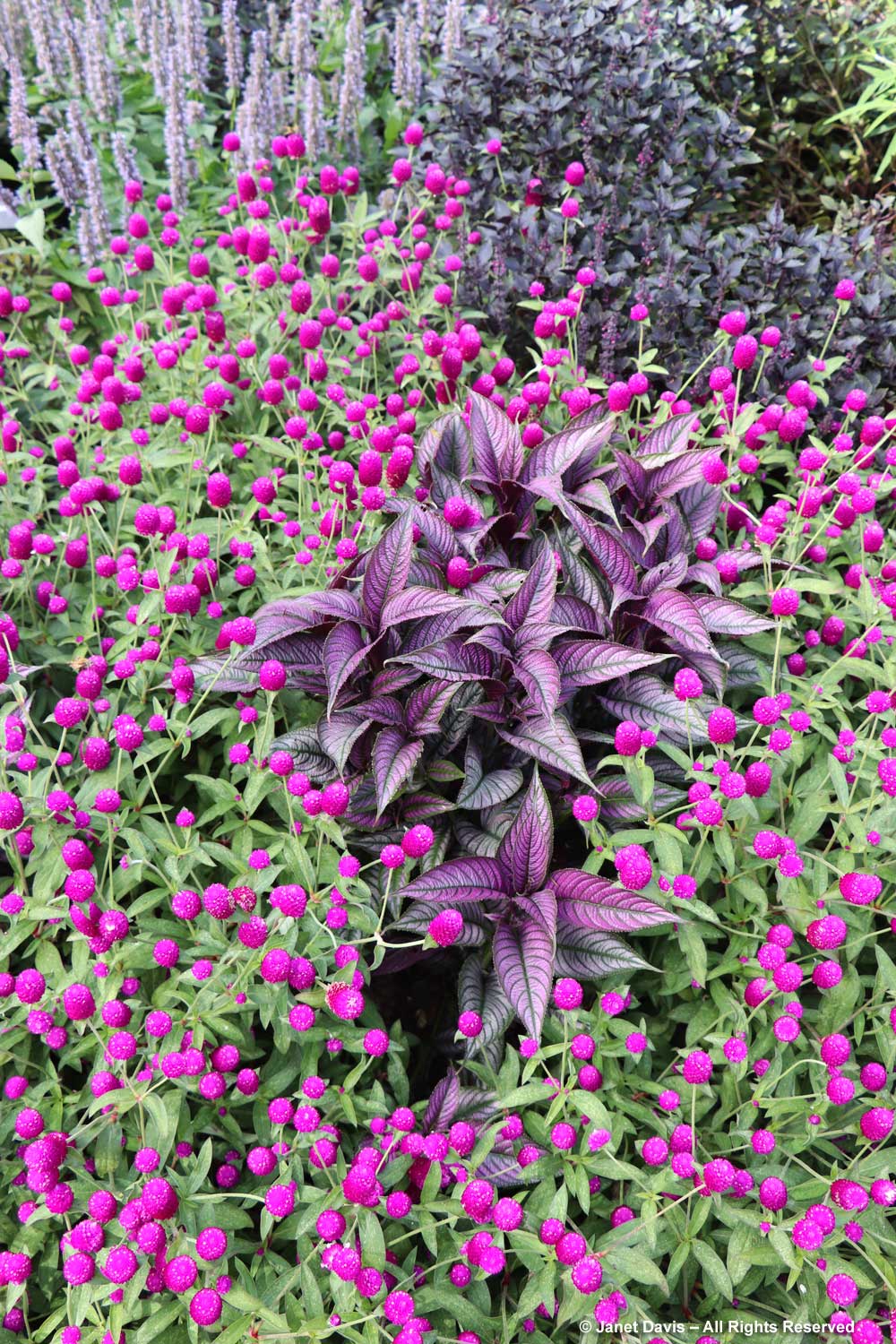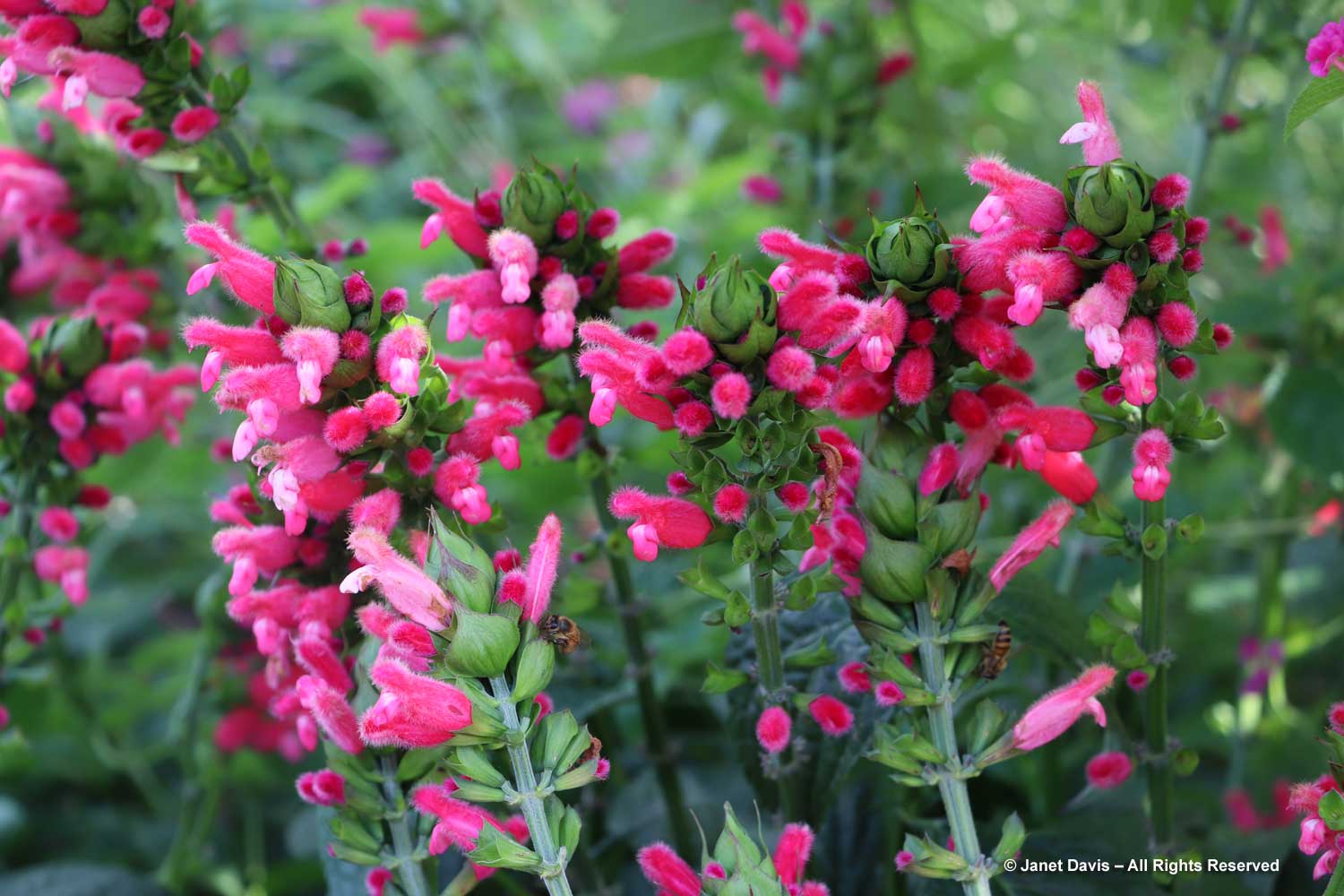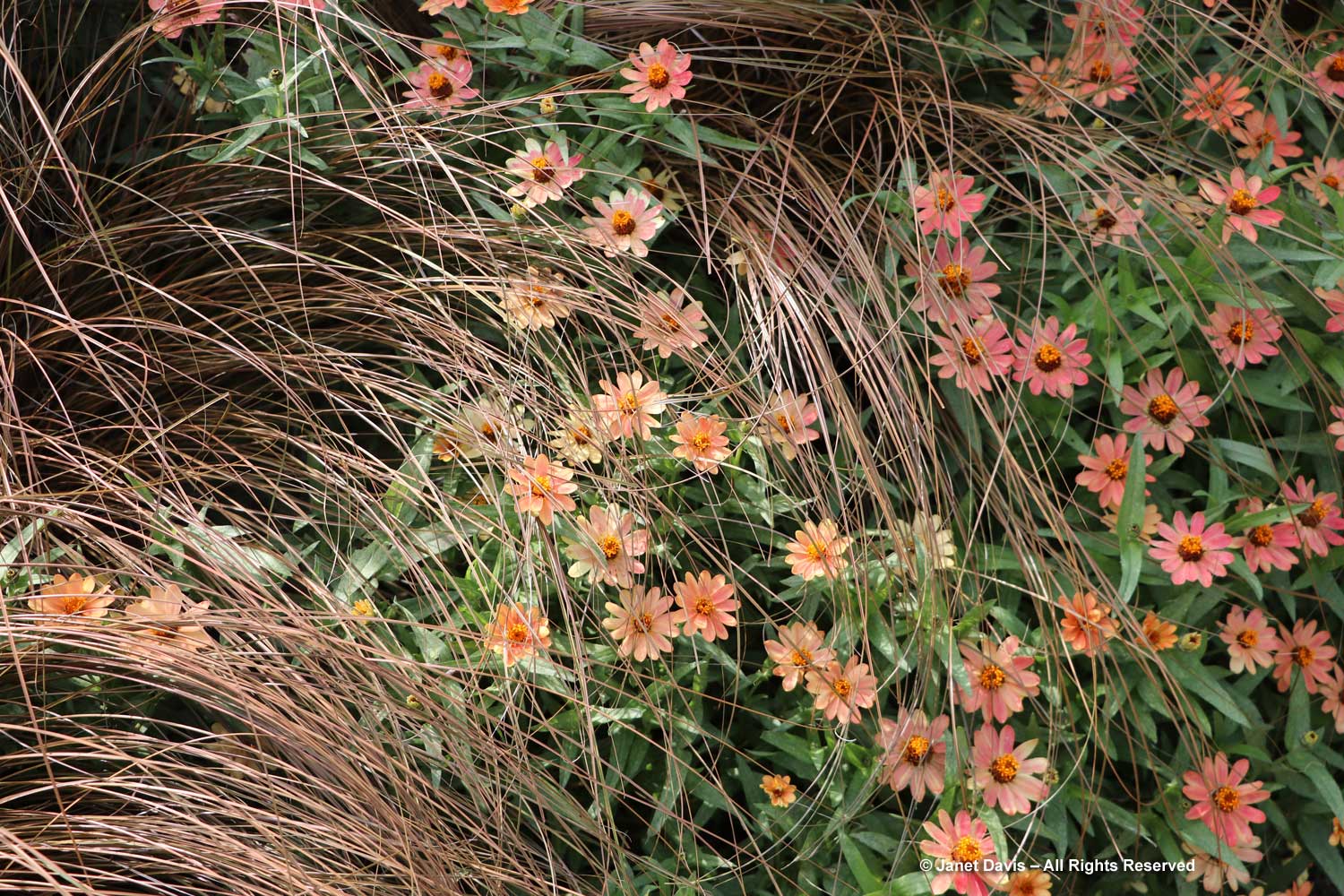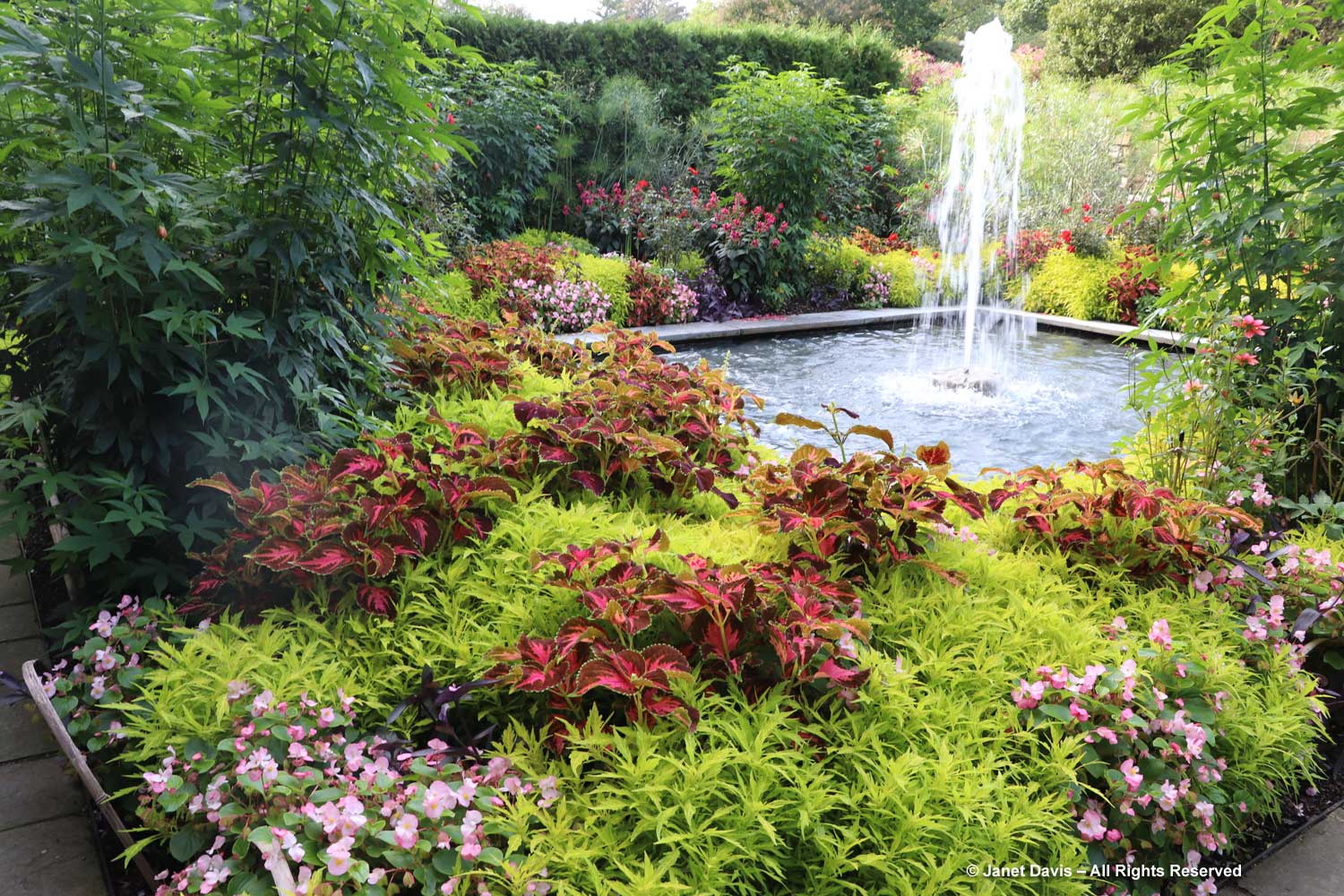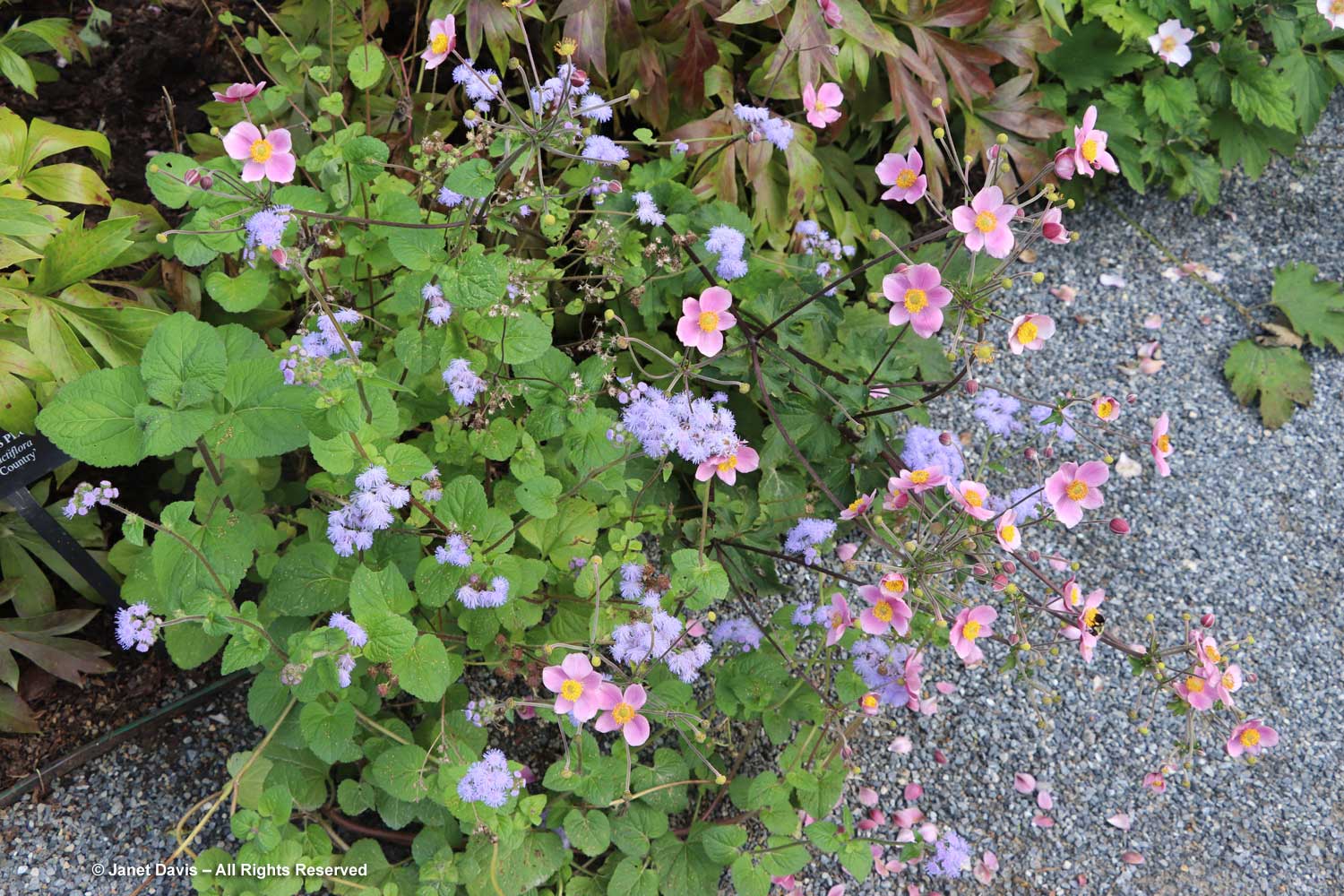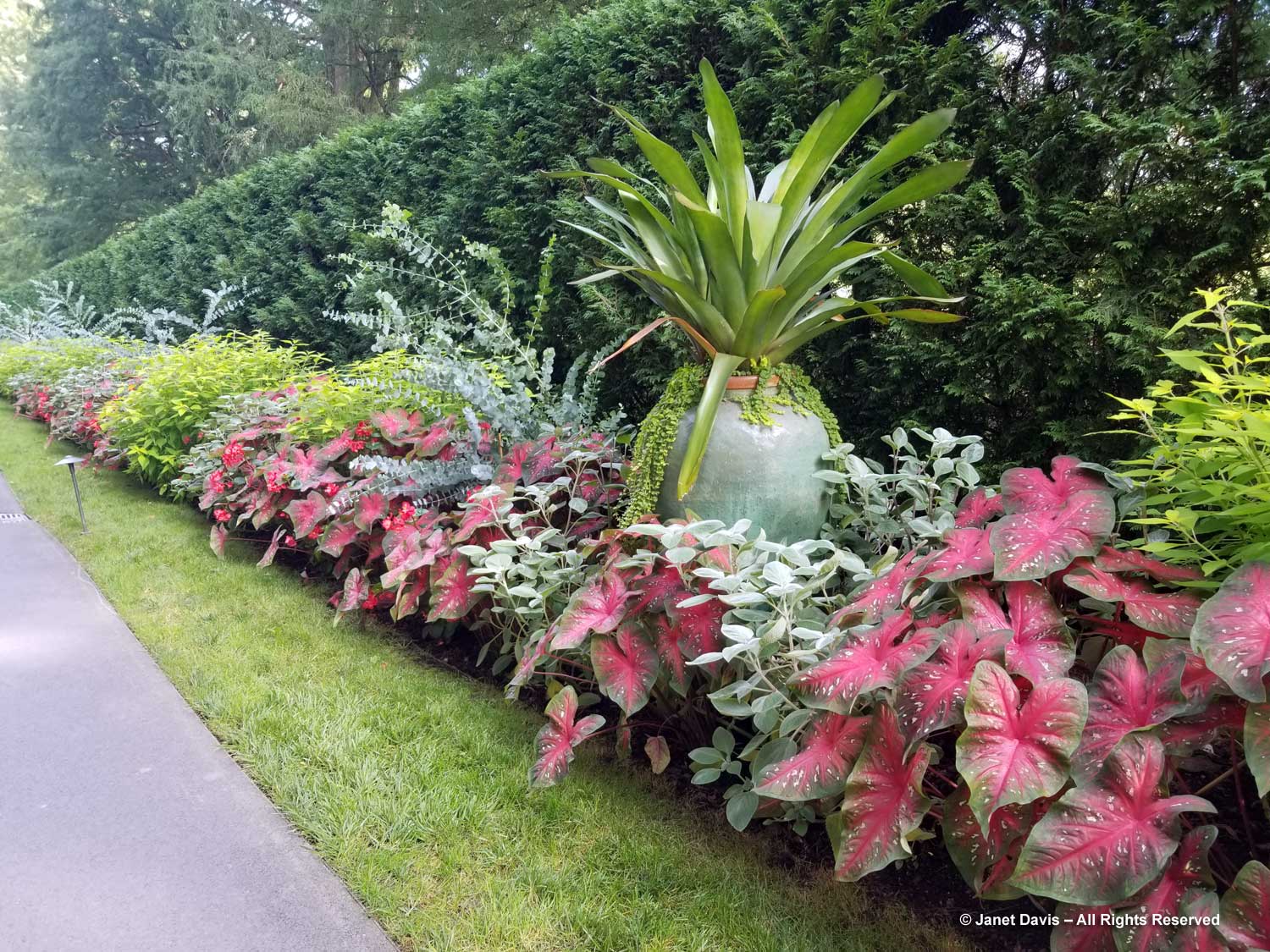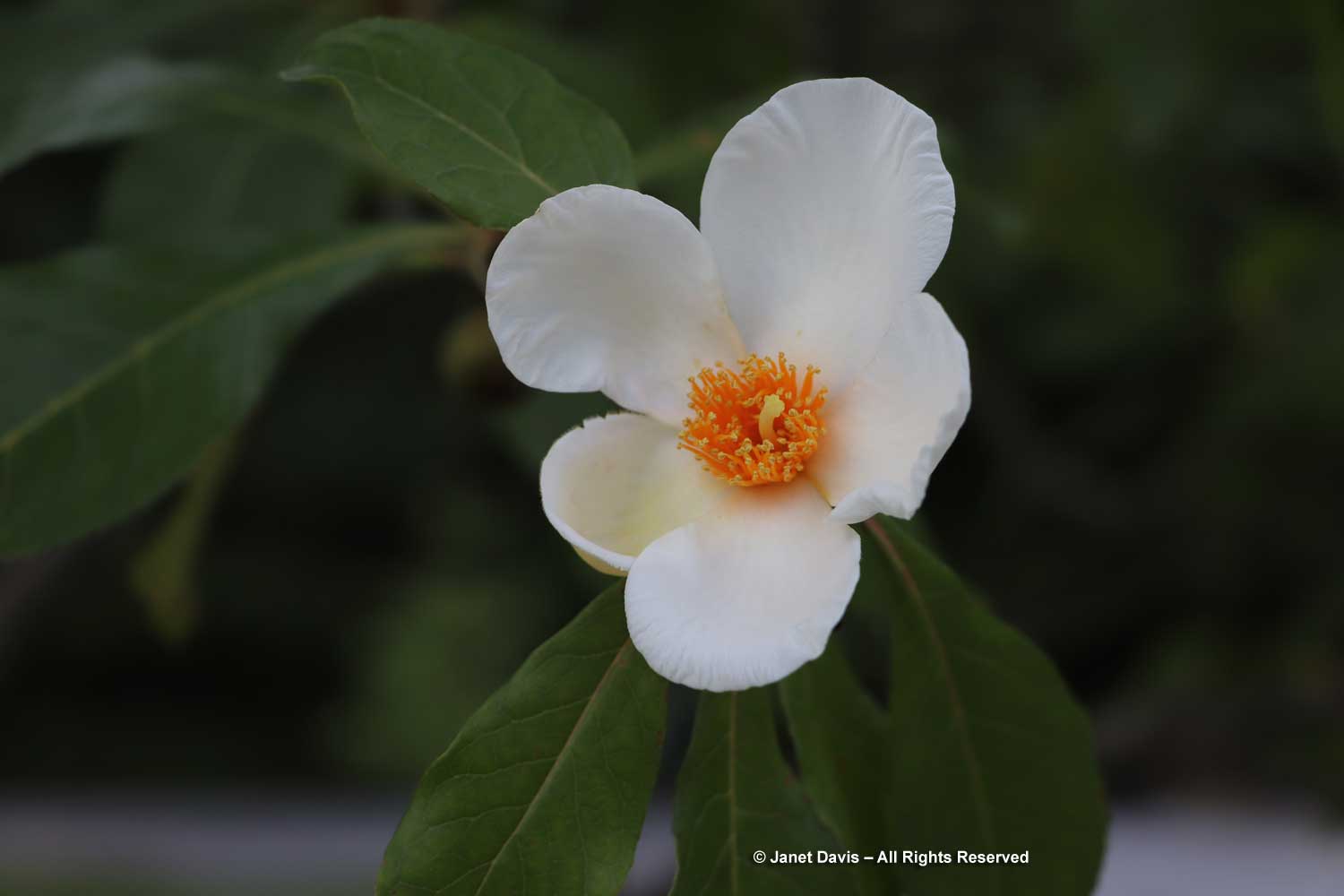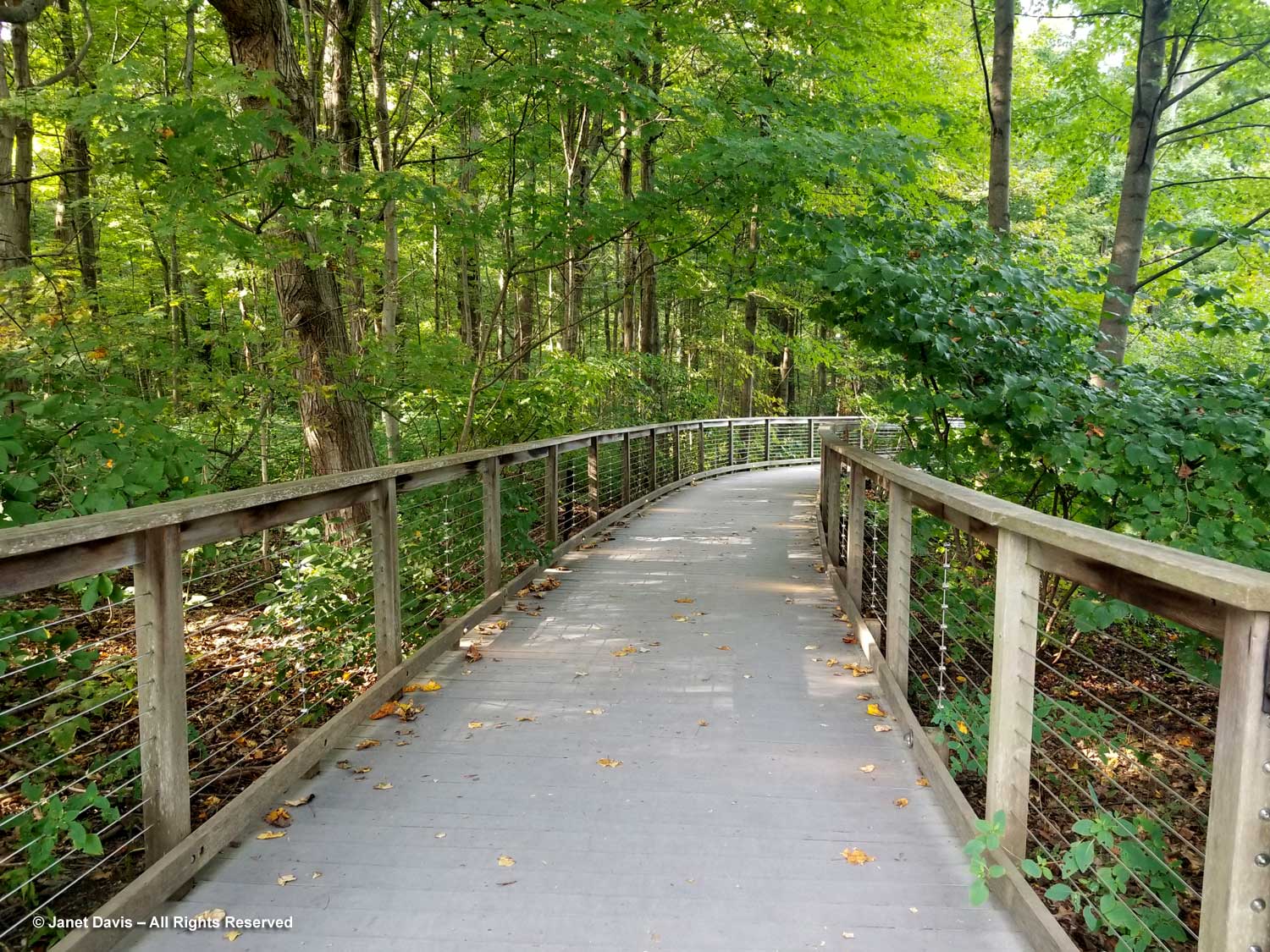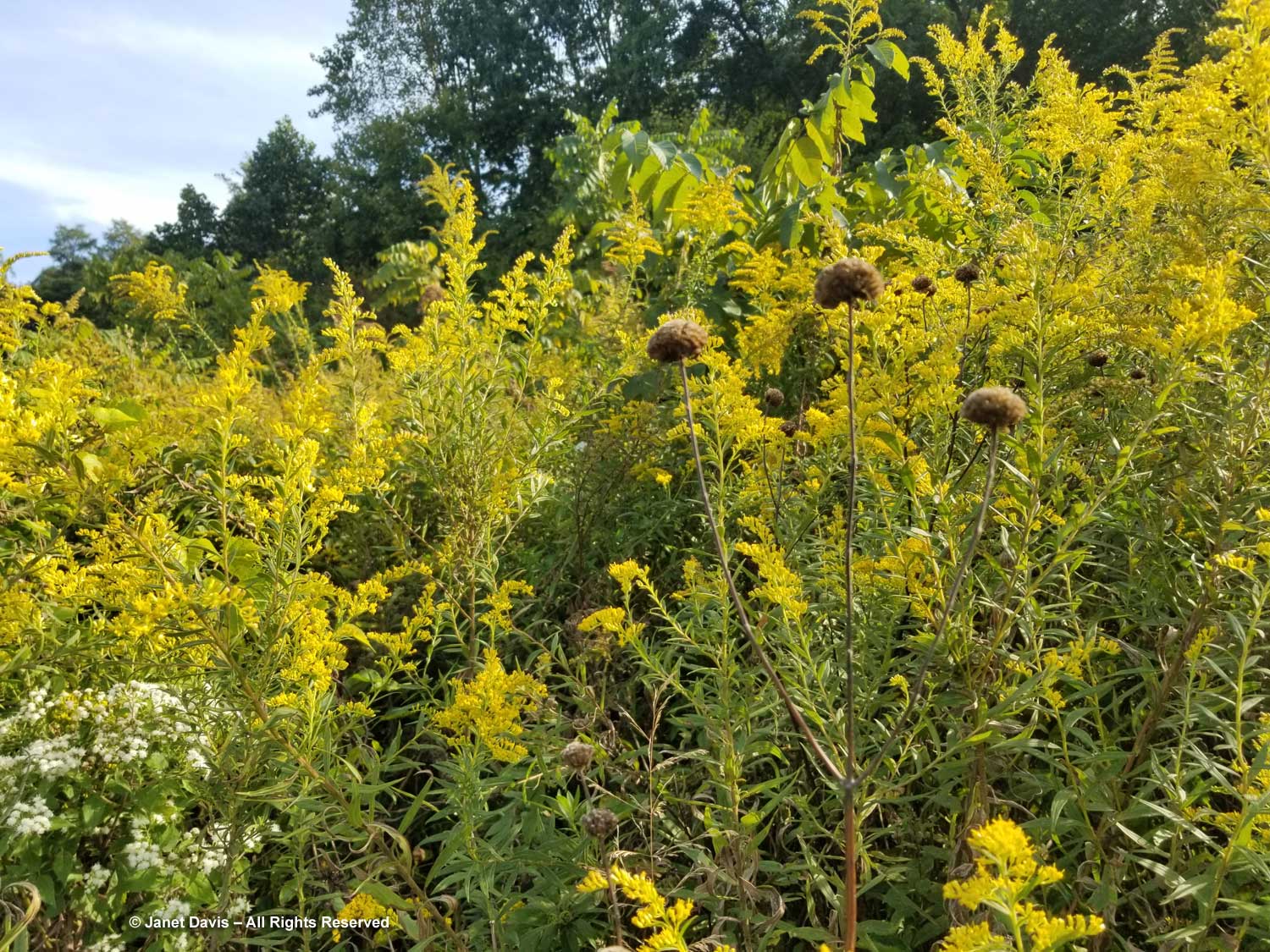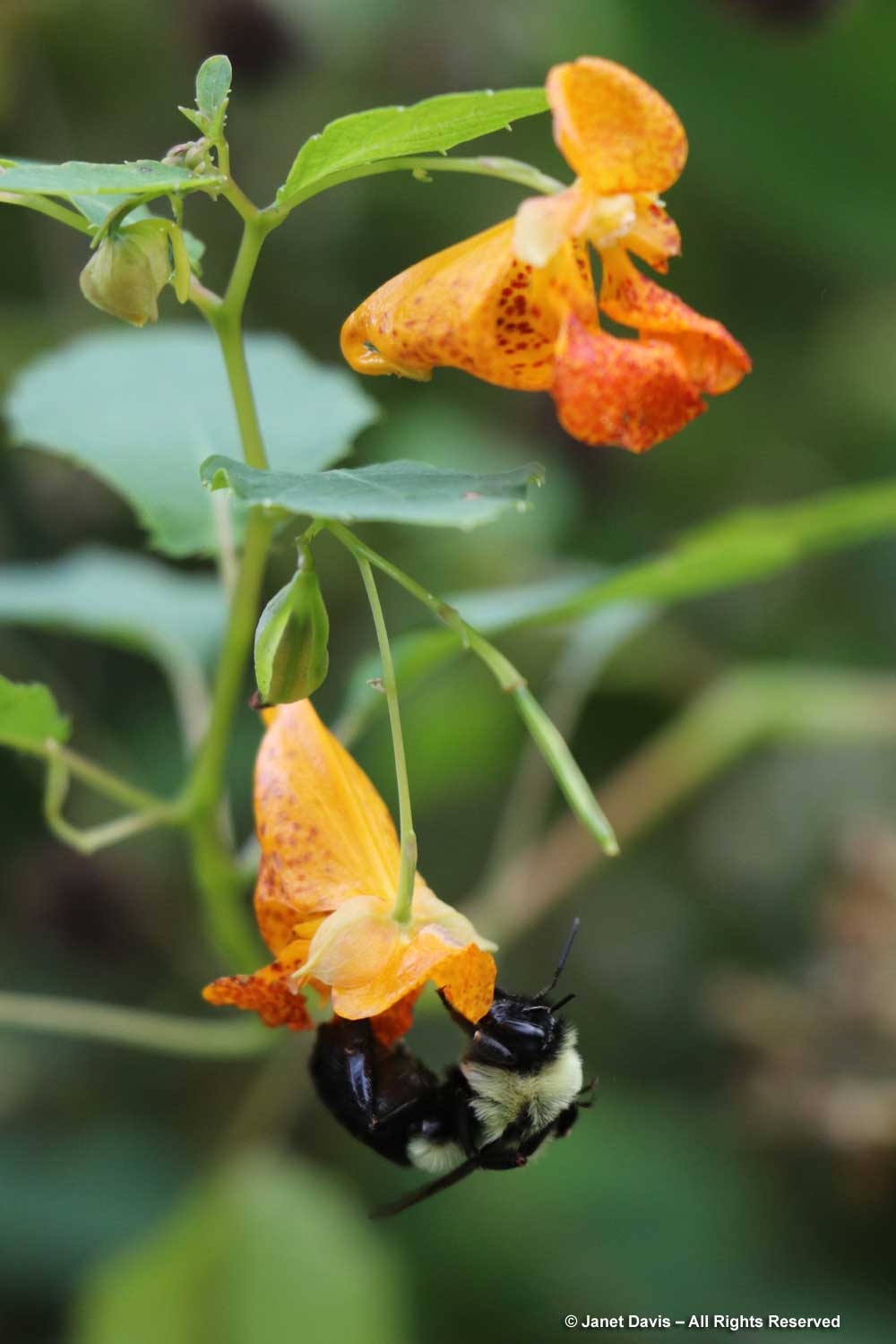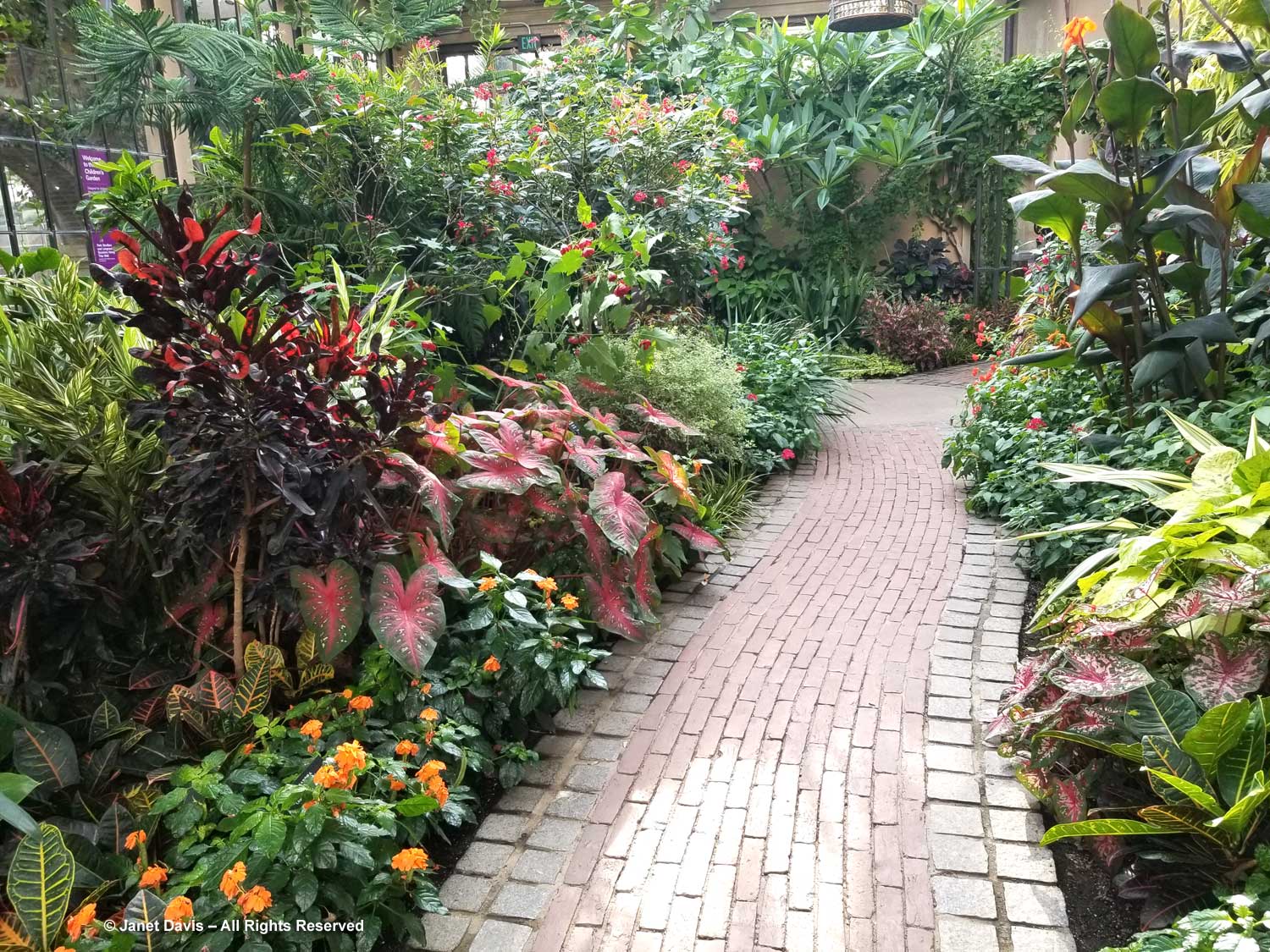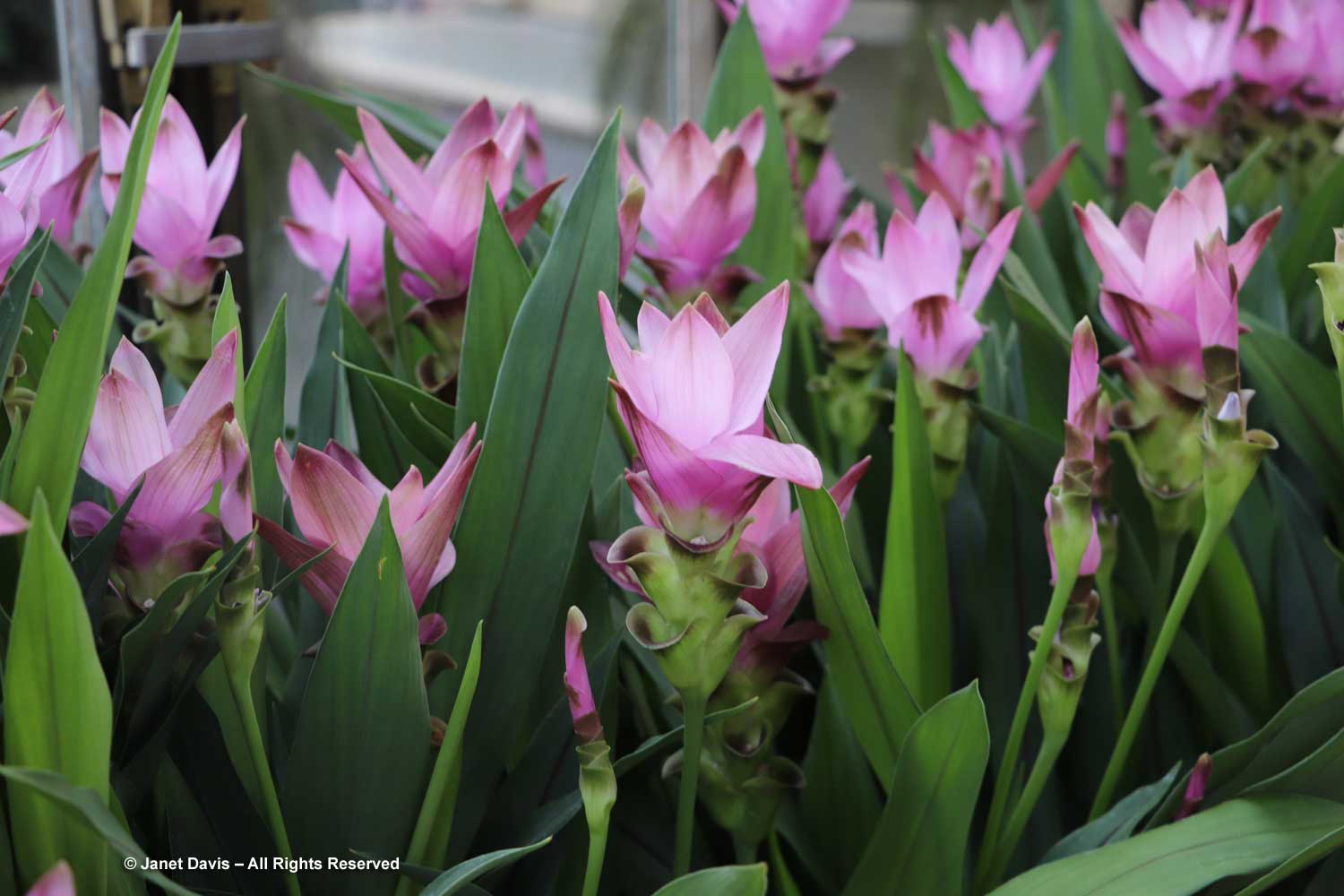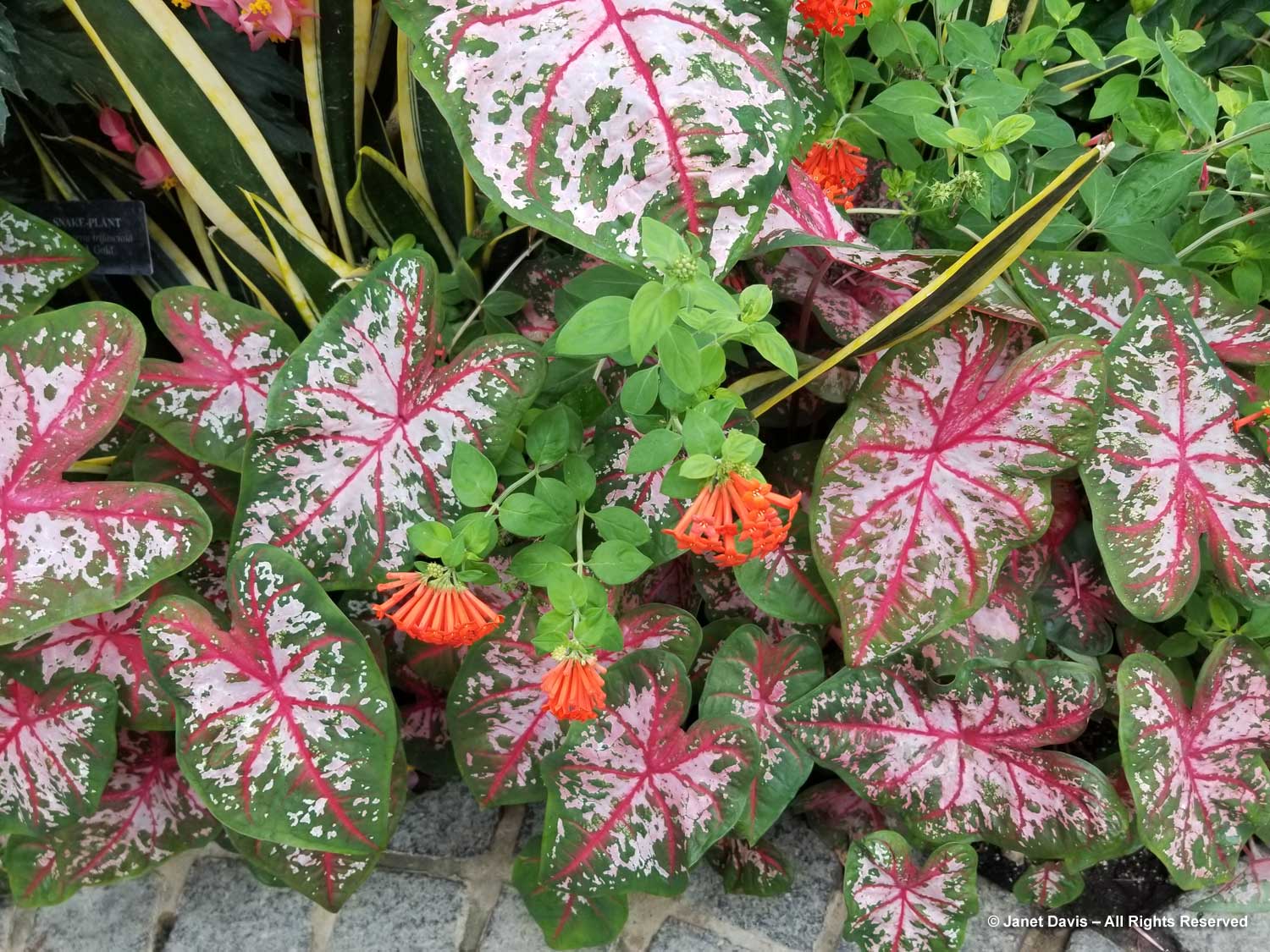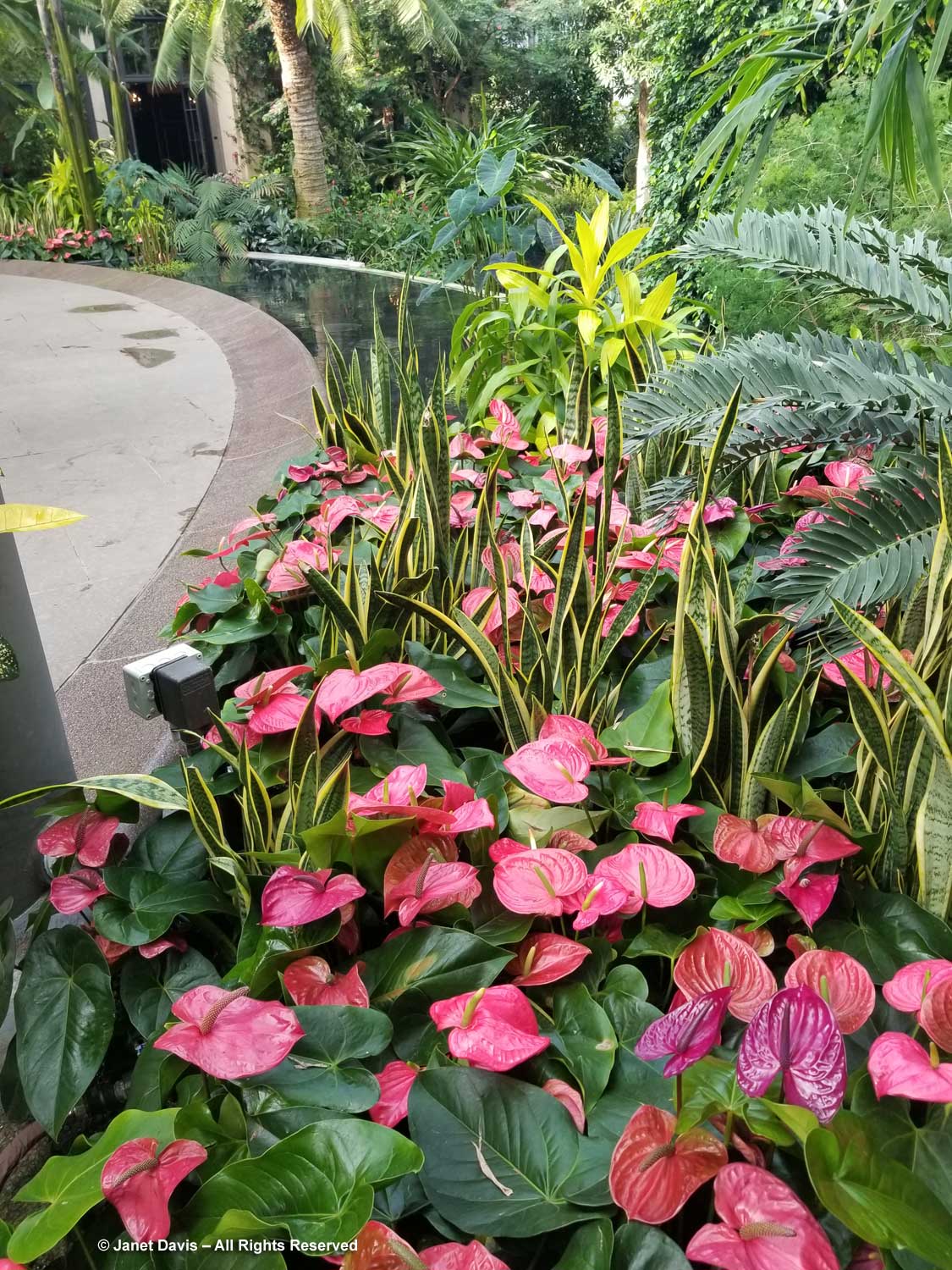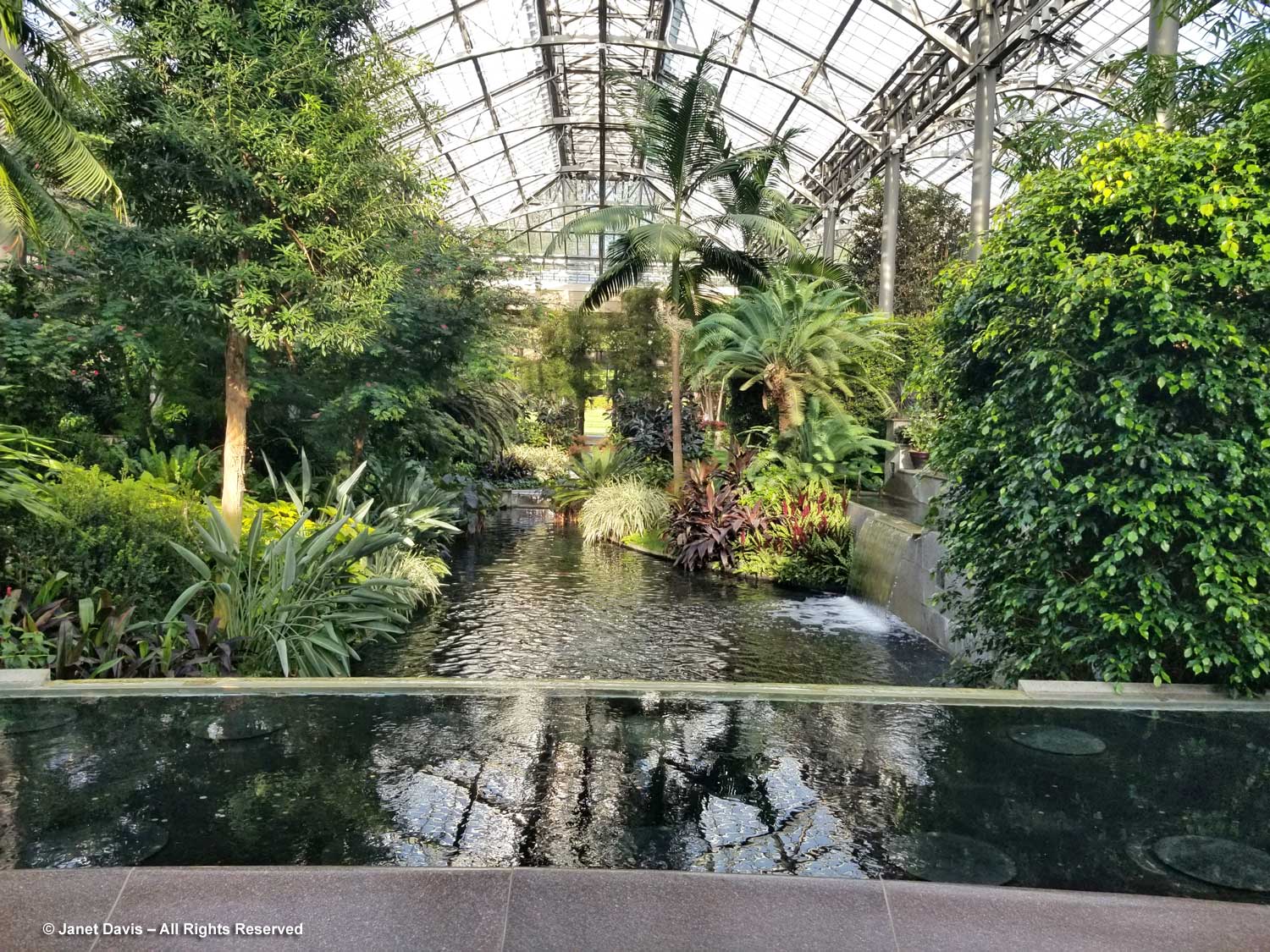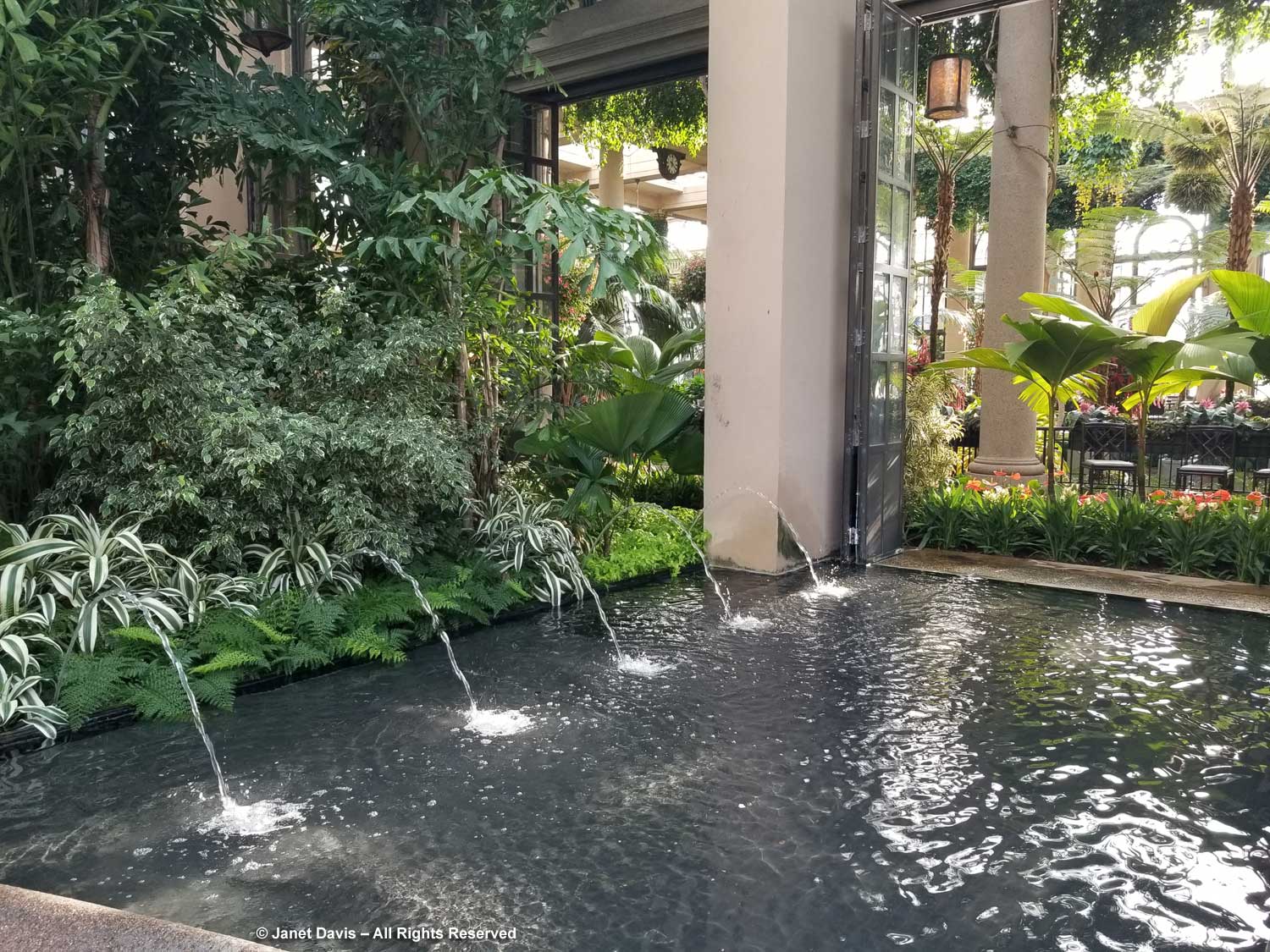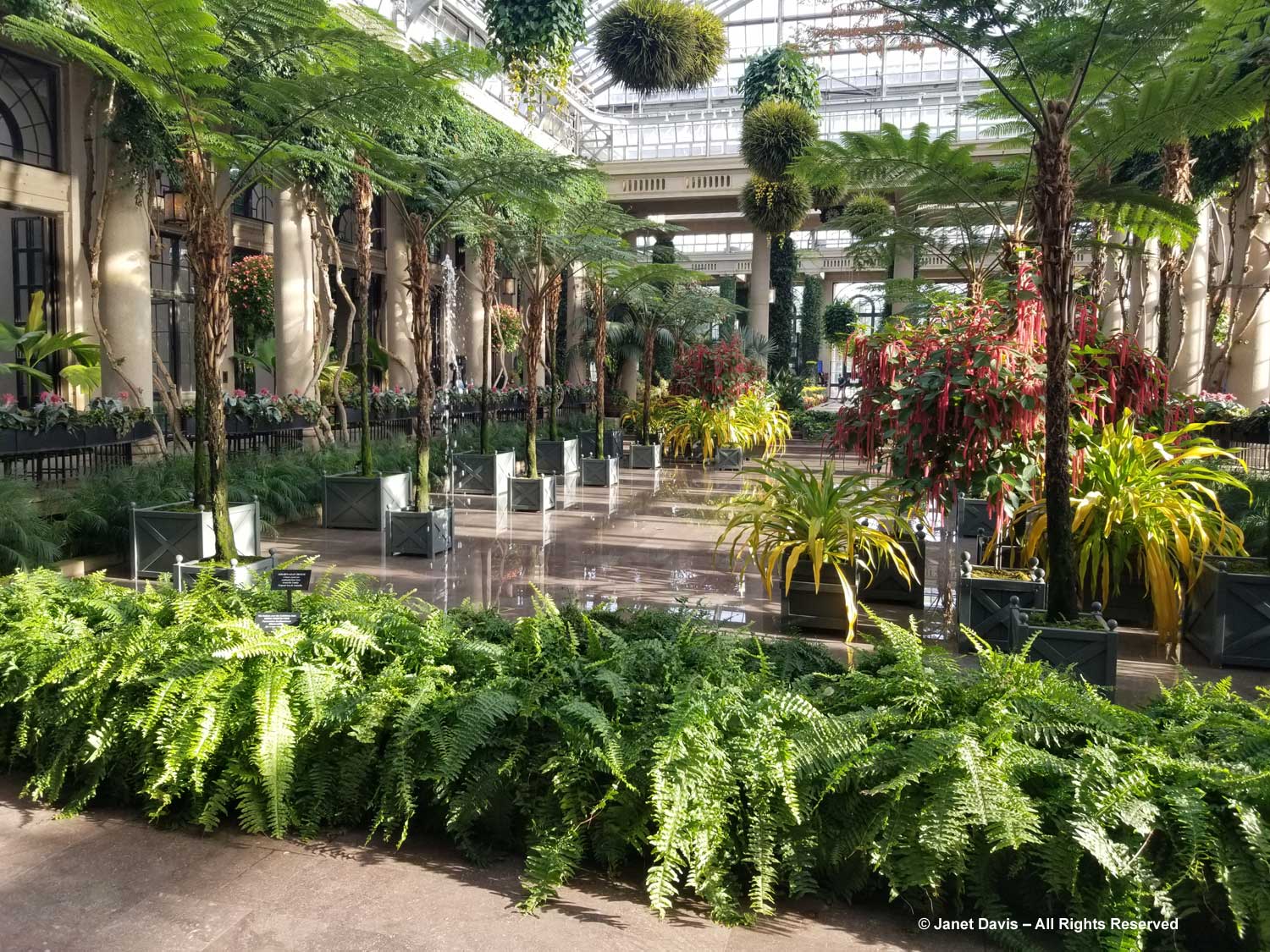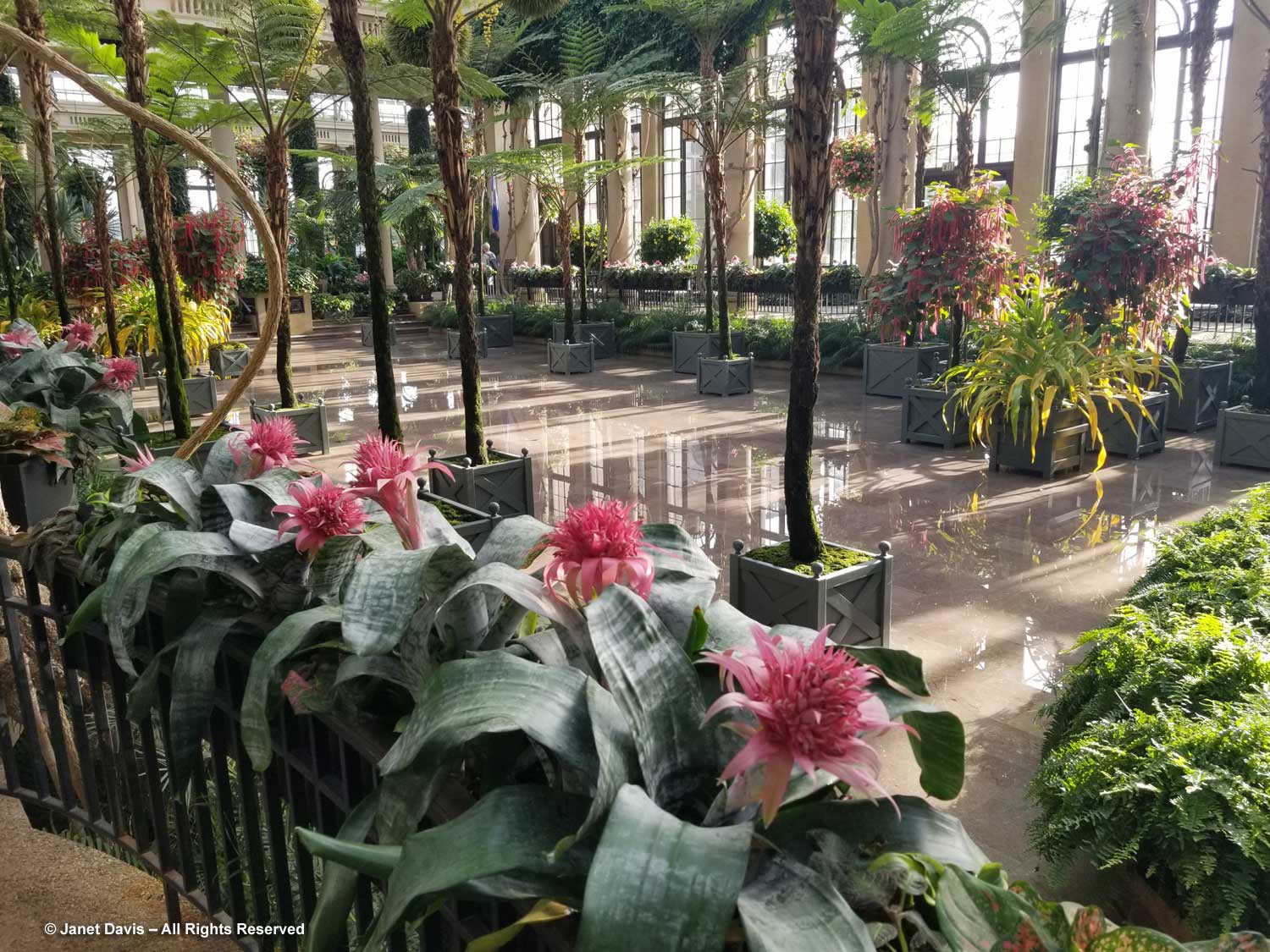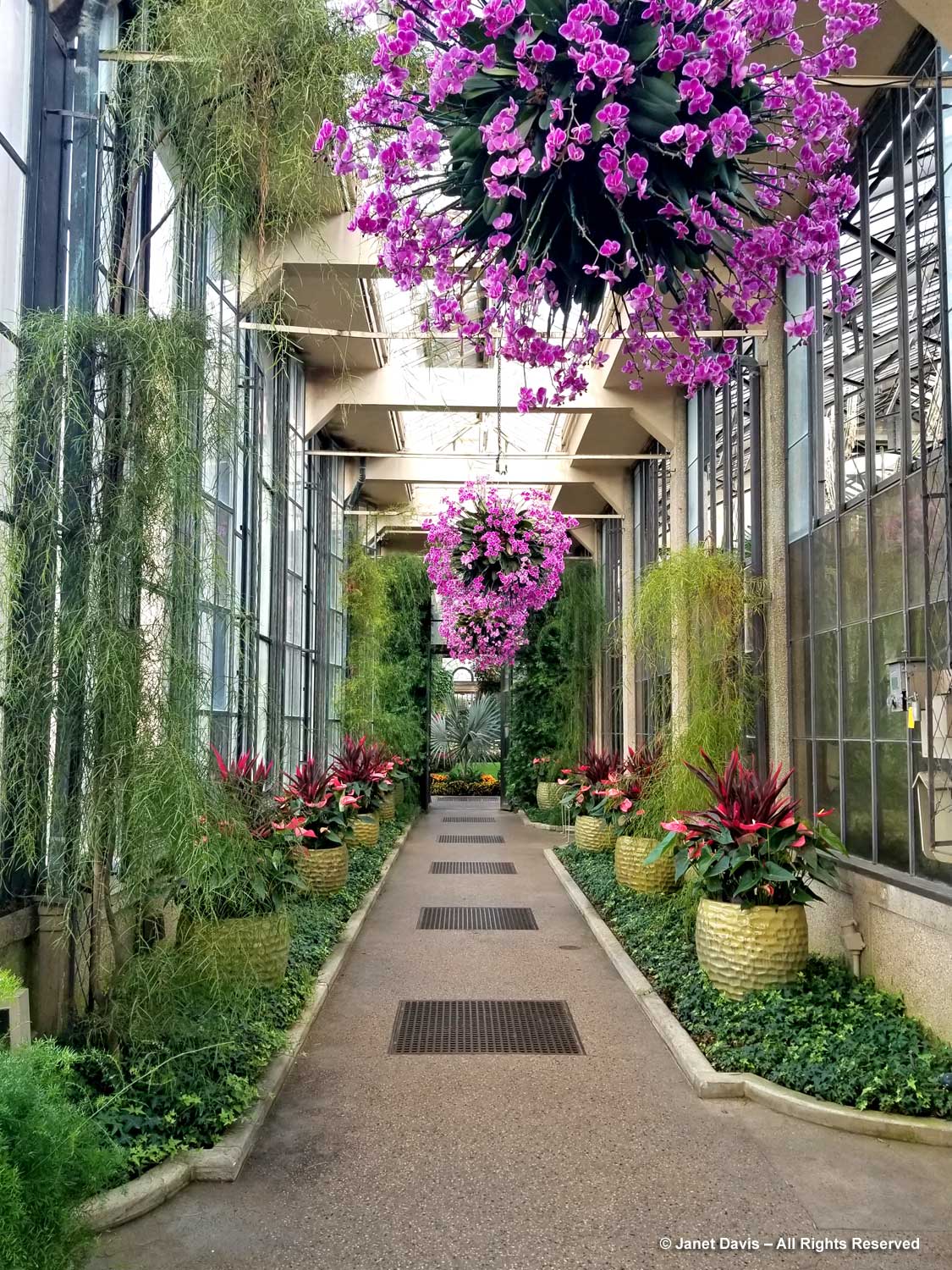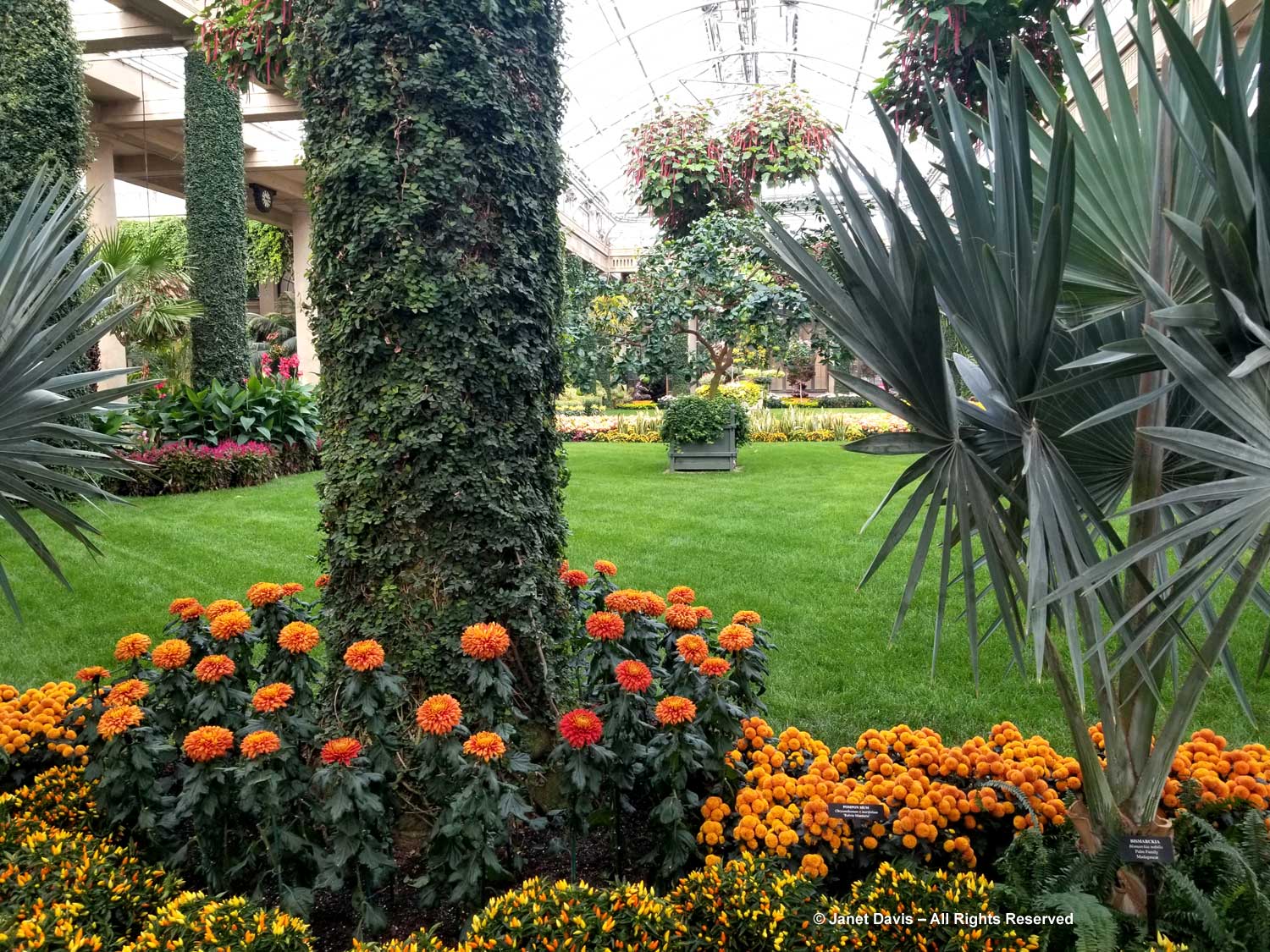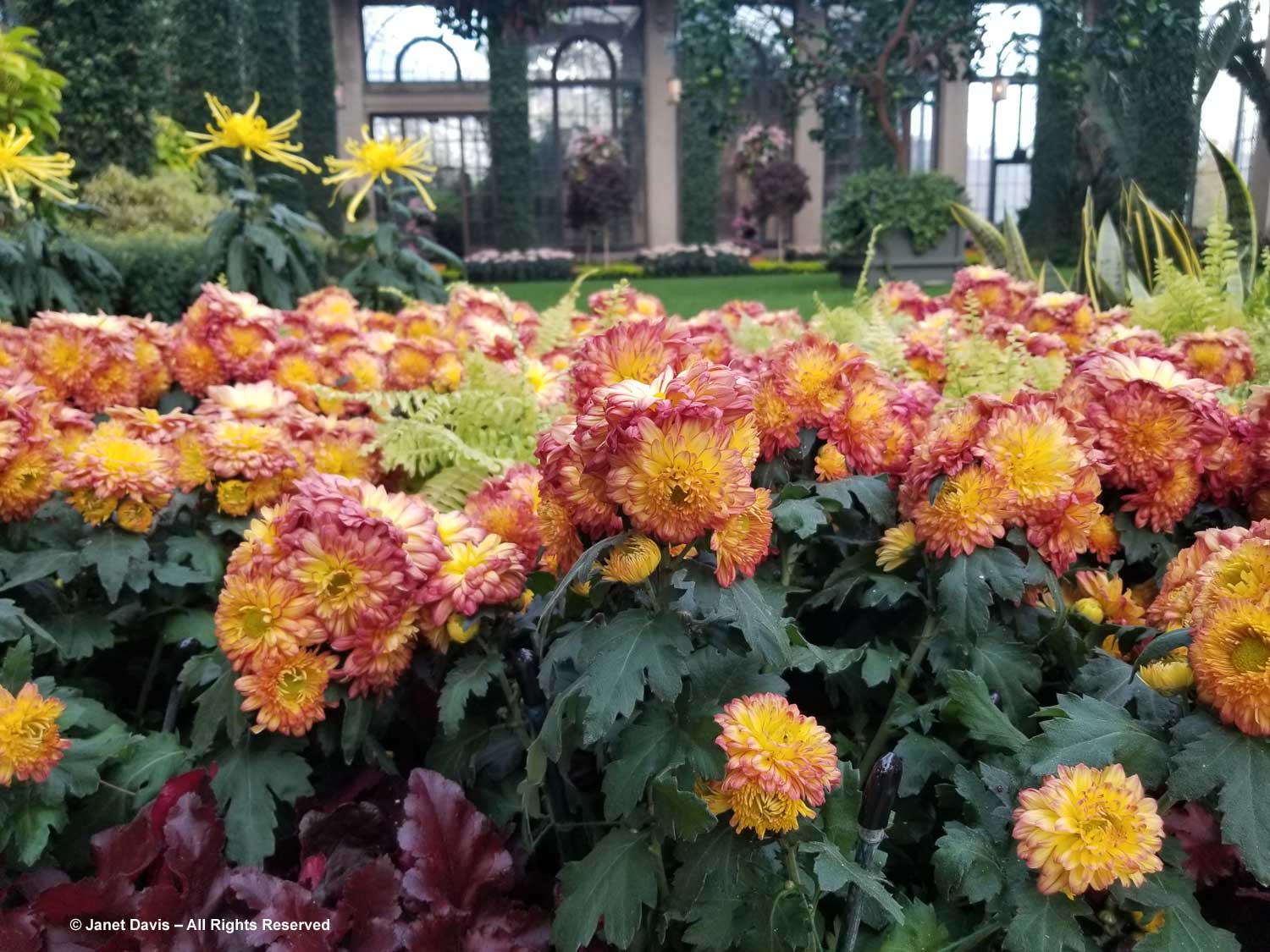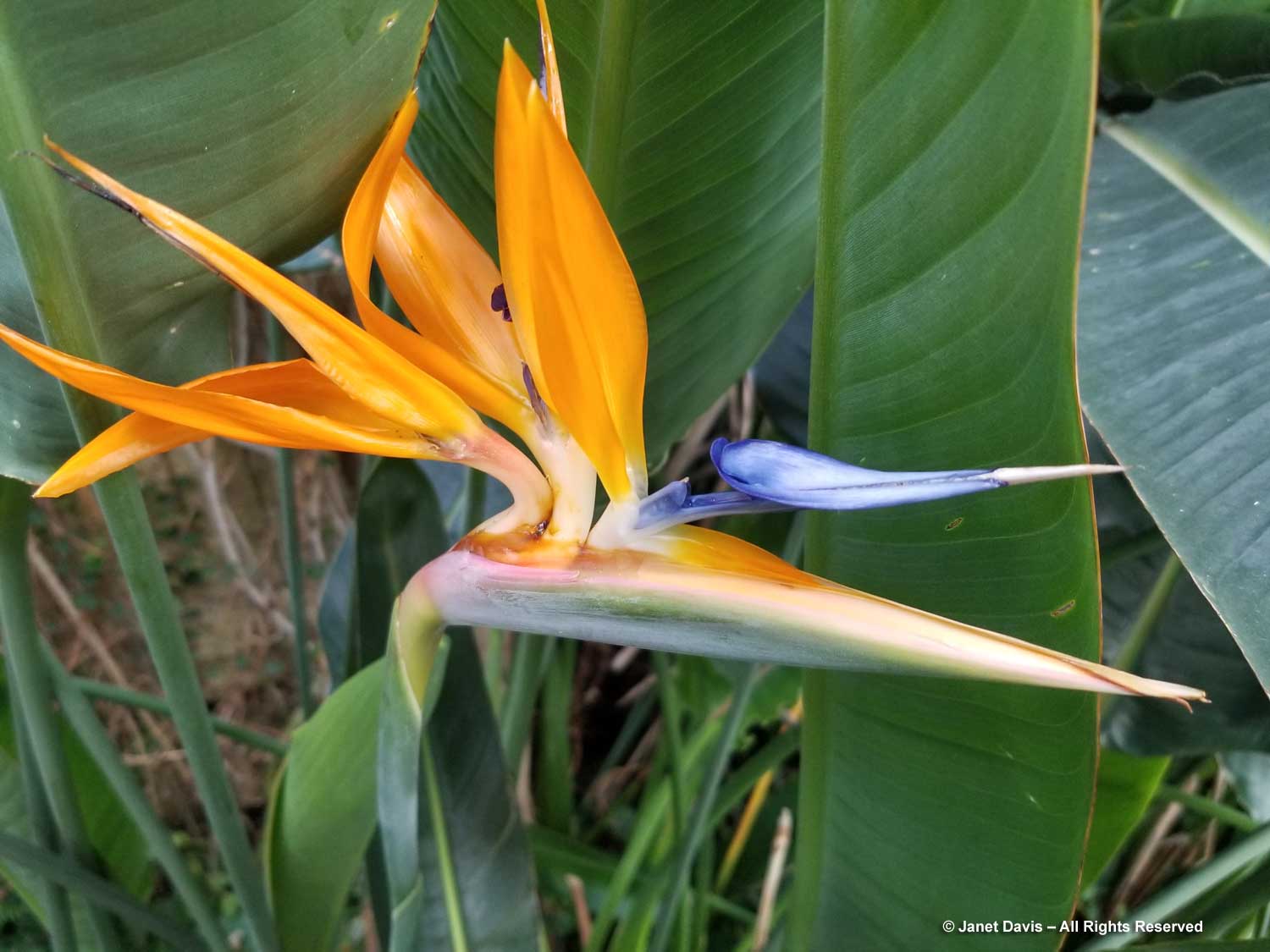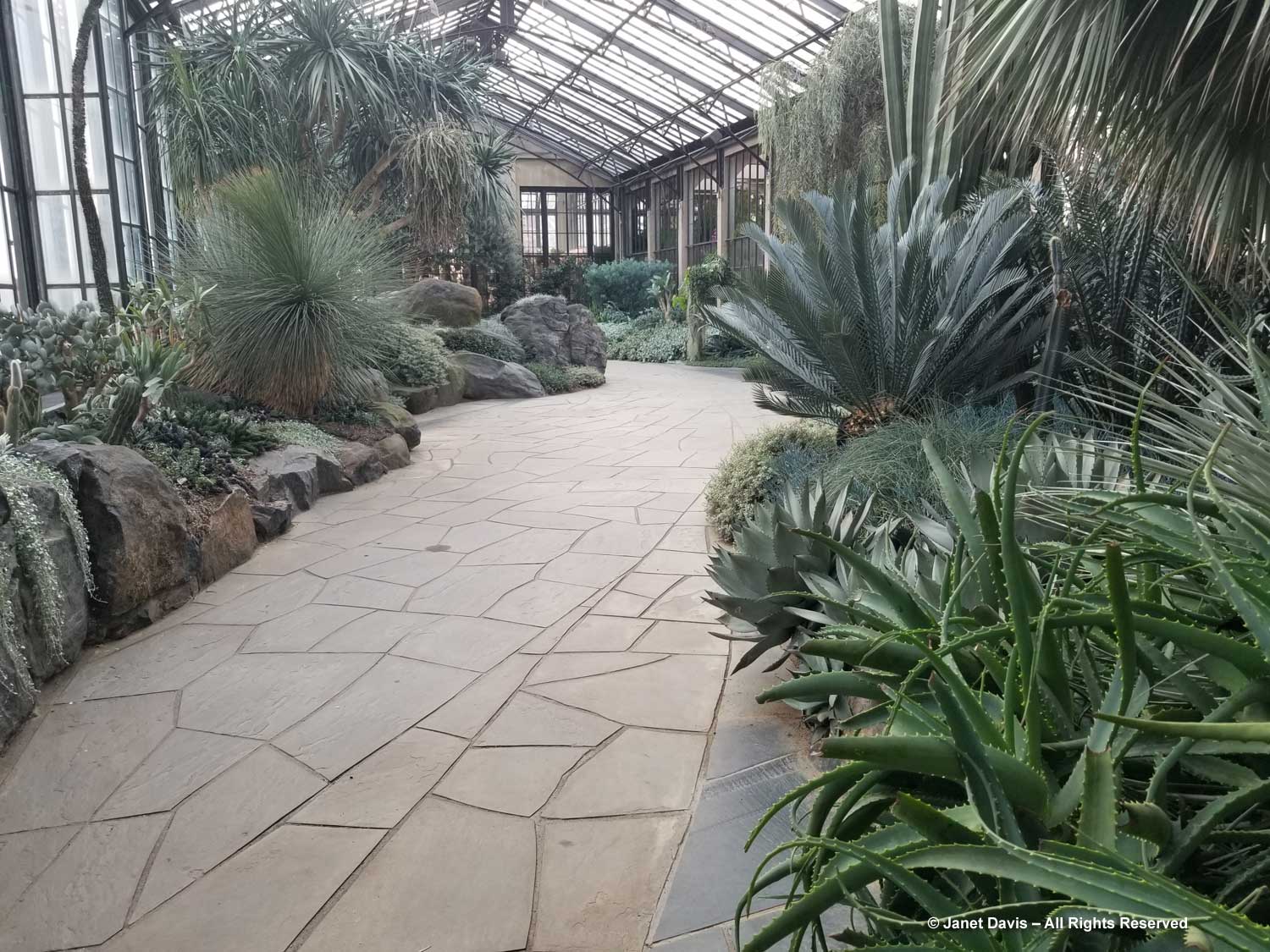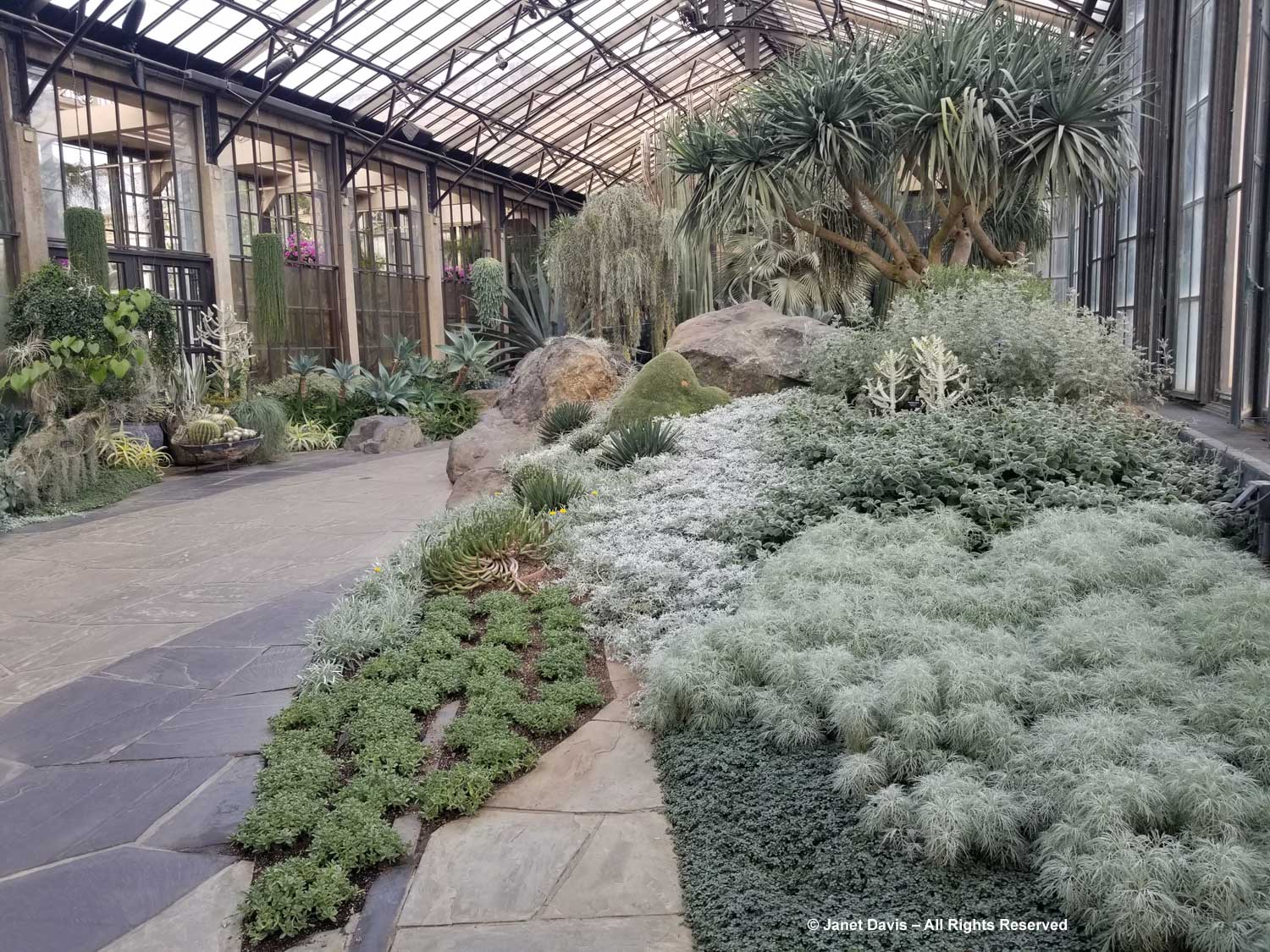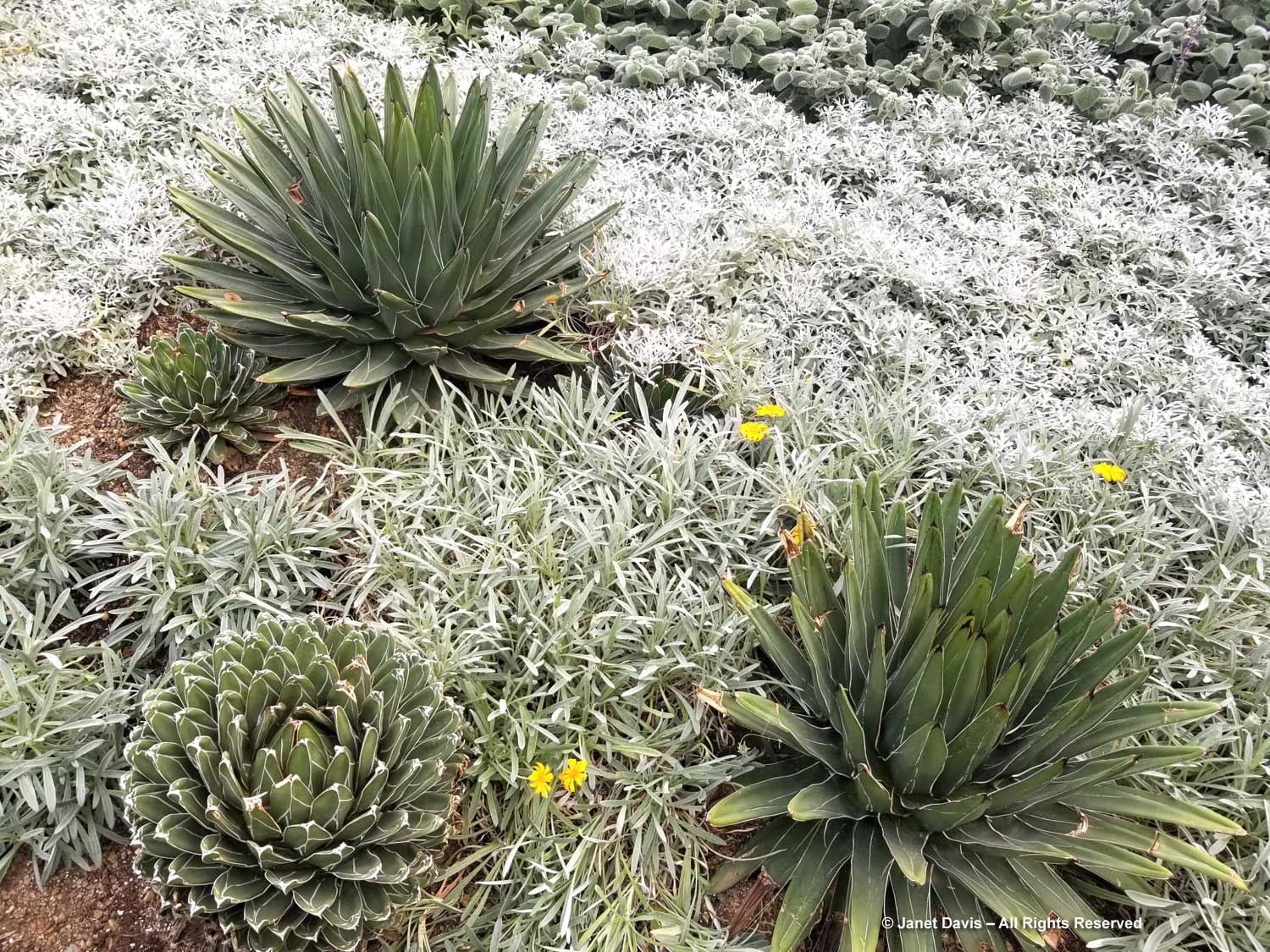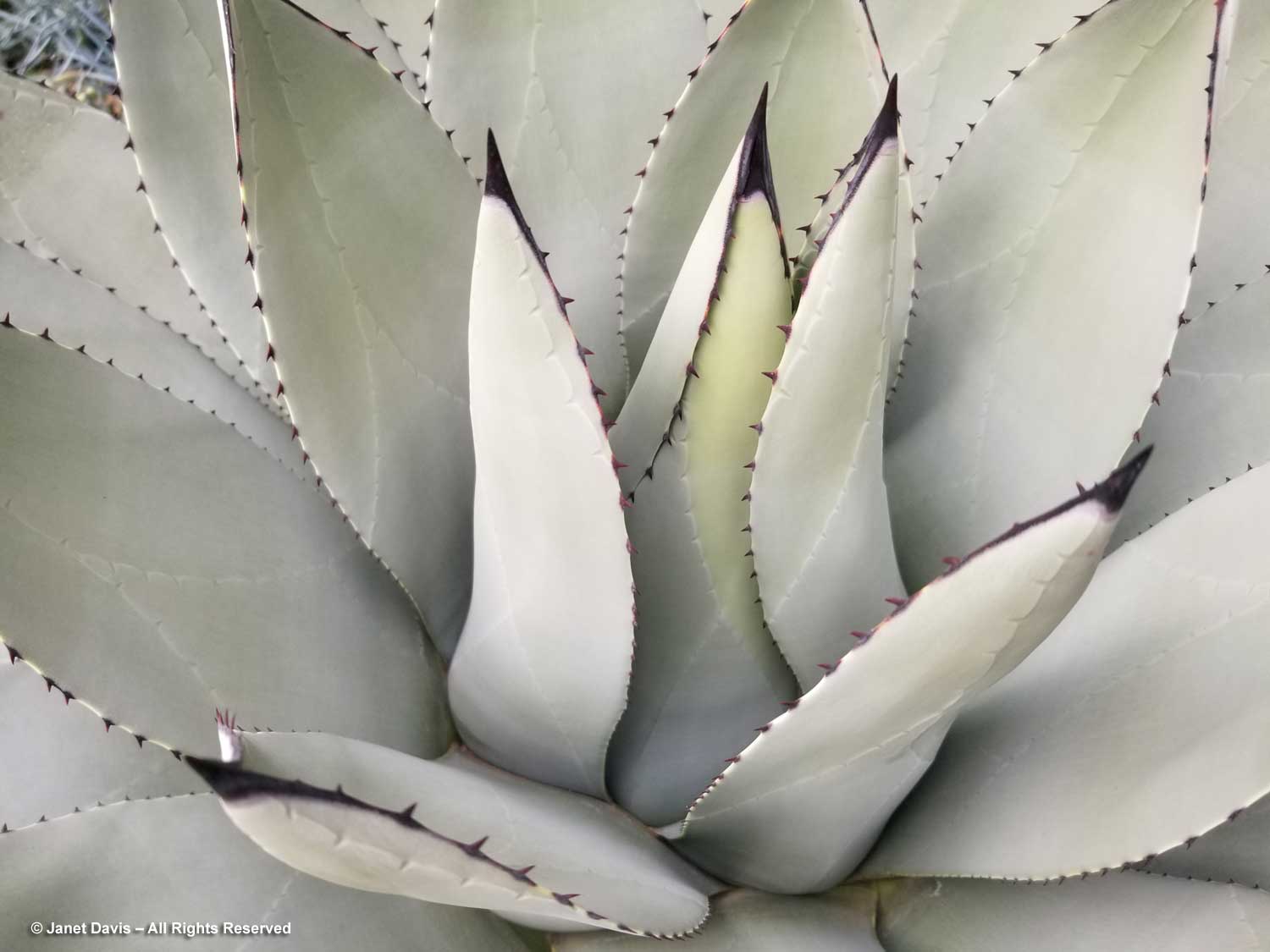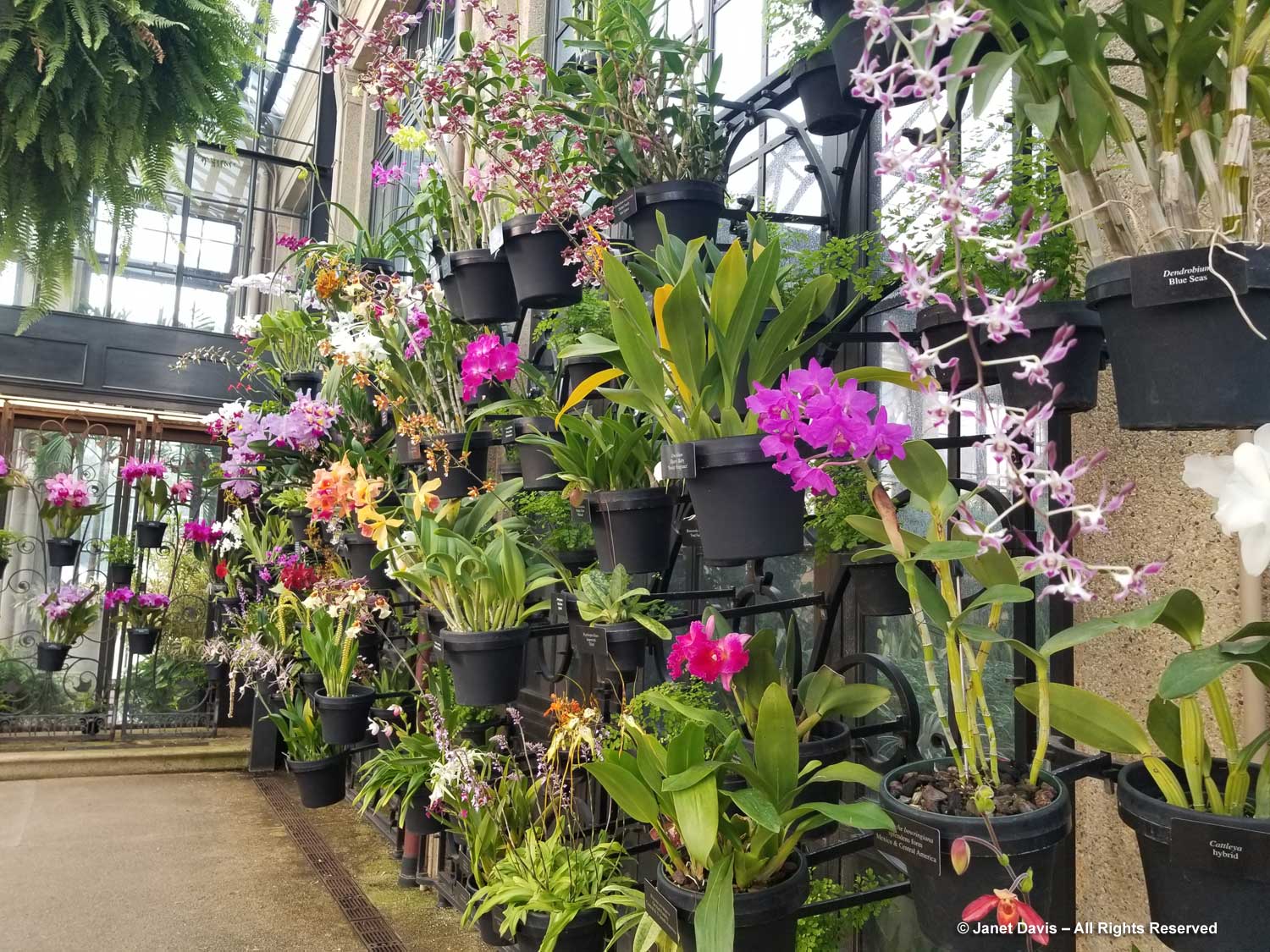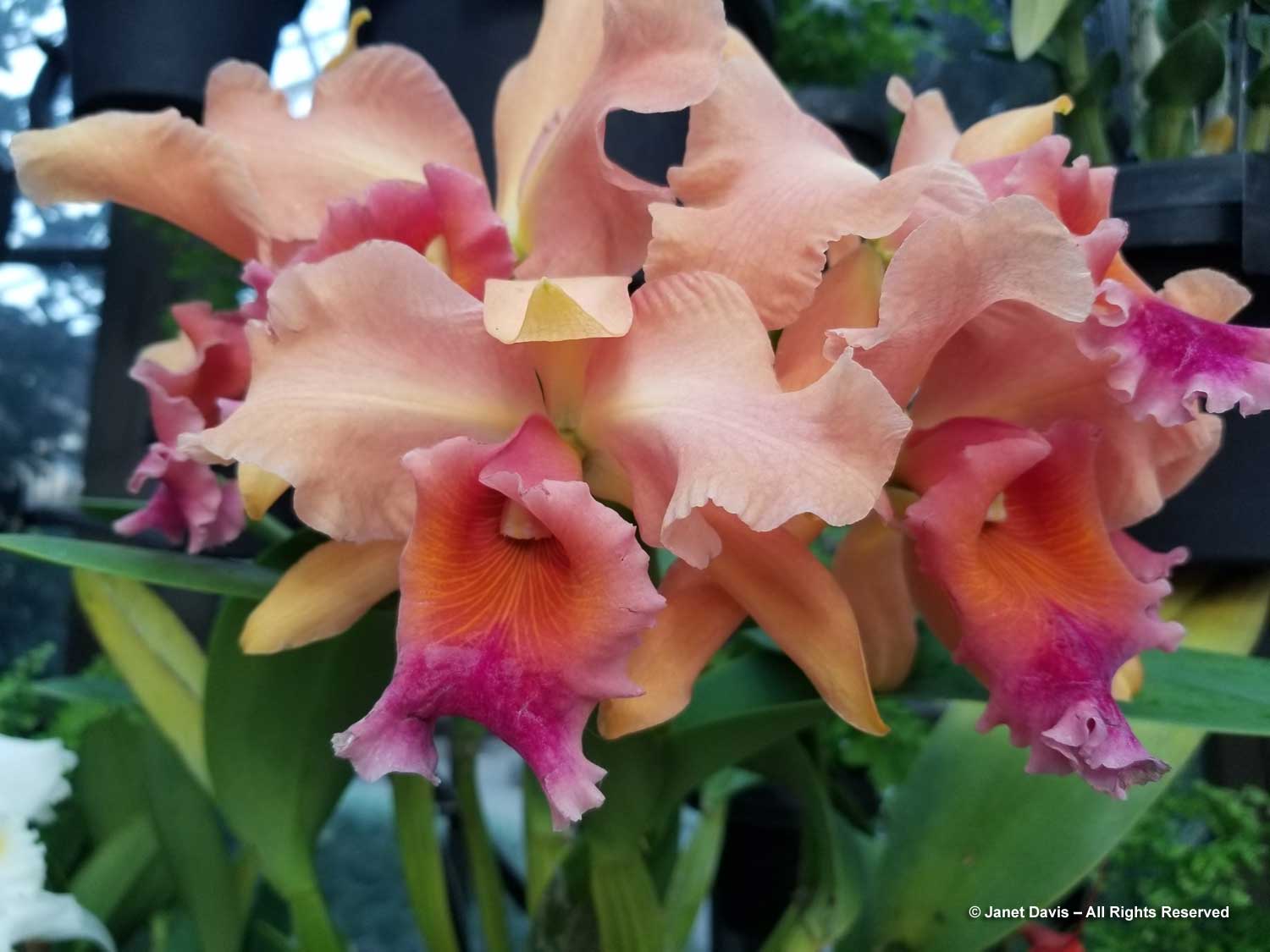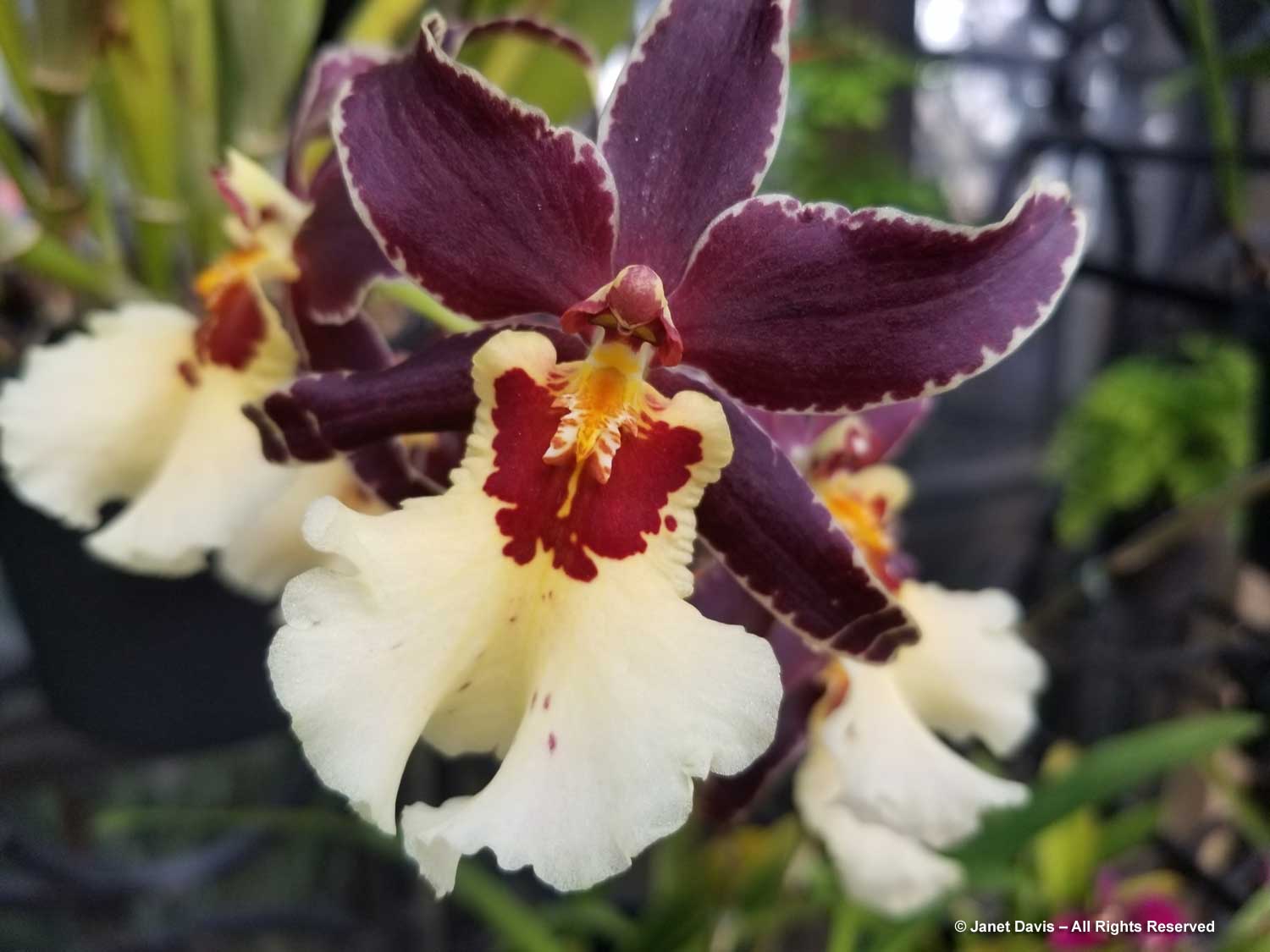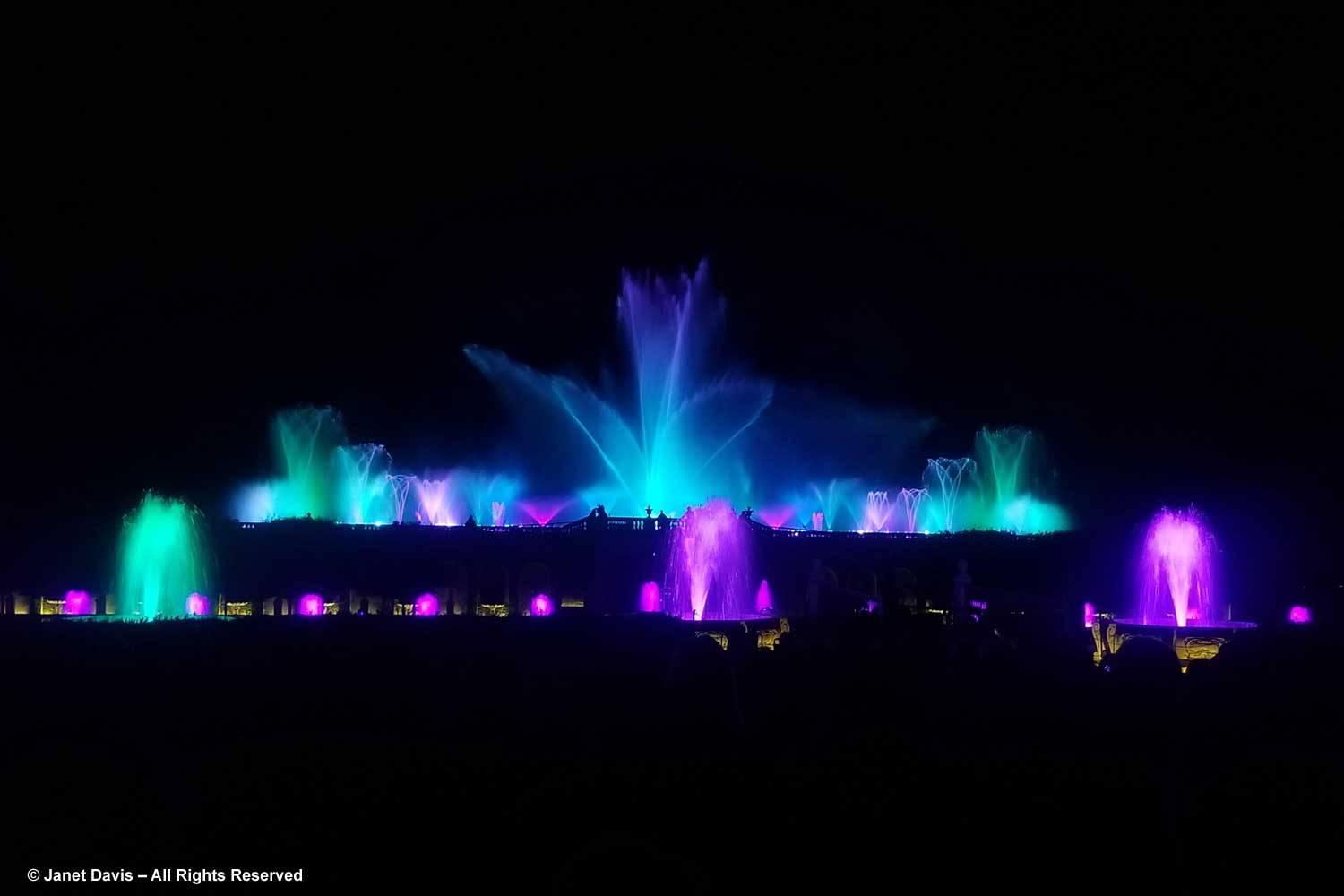The beautiful thing about plant-rich garden tours is that you get to see inspiring gardens filled with botanical treasures nurtured by acclaimed gardeners. The sad thing about plant-rich garden tours is that there’s never enough time to spend inspecting all the rare plants and clever combinations and talking to those renowned gardeners. That’s how I felt in September as I rushed around Charles Cresson’s garden Hedgleigh Spring in Swarthmore, PA. Much has been written about the garden, including that Charles is the 4th generation of the family to live and garden here, and that his grandfather built the house.
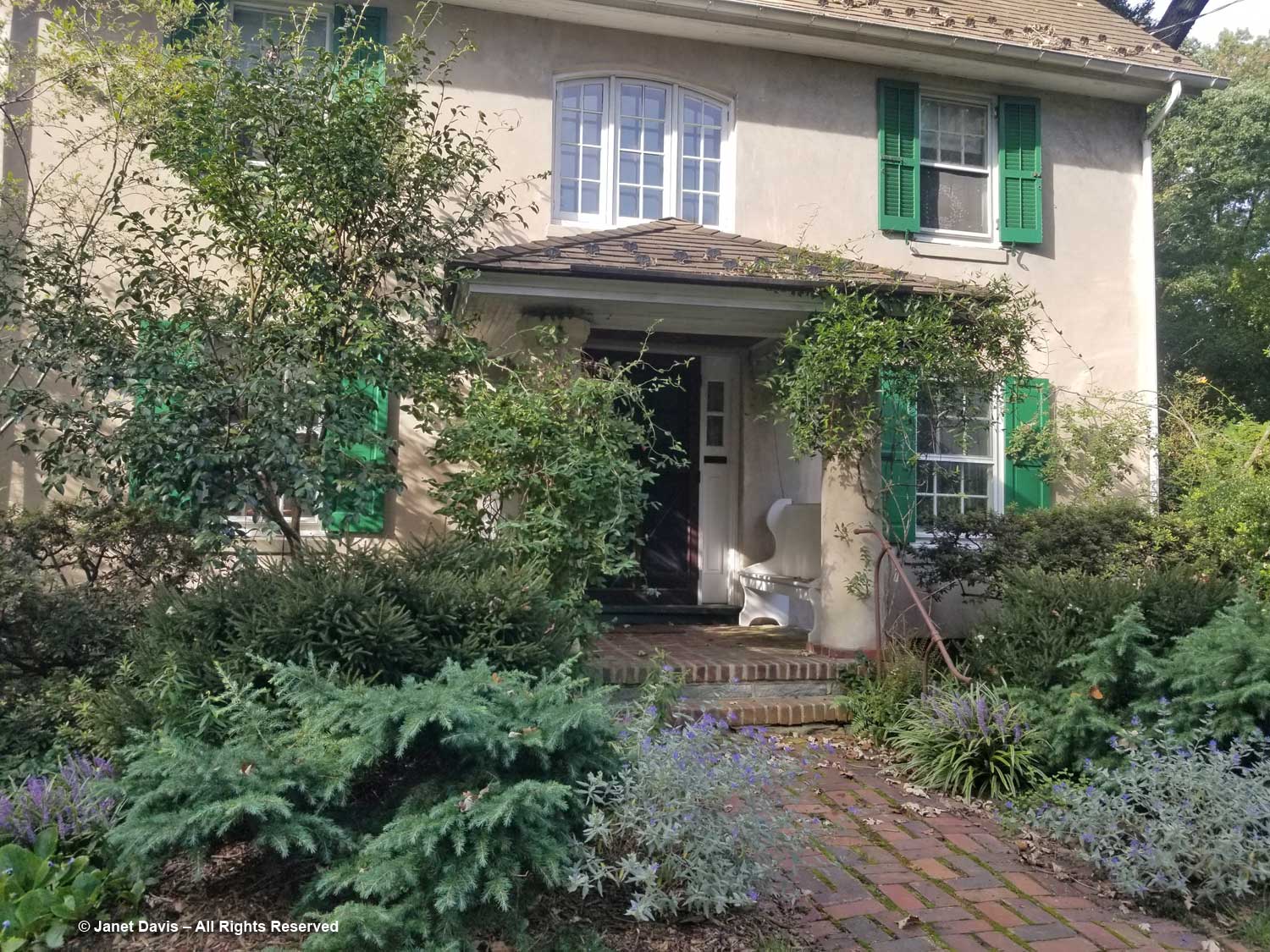
When my Pennsylvania garden friend Harriet Cramer discovered I was doing a tour of the Philadelphia area, she wrote: “As an accomplished plantswoman, one garden you should not miss is that of Charles Cresson in Swarthmore. I don’t know if you know Charles, but he has an extraordinary property, it’s been in his family for several generations, and Charles has literally been working on this garden his entire life. He is very gracious about showing people around. You do need to leave quite a bit of time because it is huge and full of extraordinary and unusual plants. Visiting is a humbling experience, it always makes me realize how little I actually know about plants.” Indeed, all I managed with Charles, a frequent teacher, author, founder of the Swarthmore Horticultural Society (SWS) and even a subject of the UK’s Monty Don television series, was a quick hello before going back to soak in as much as I could of his special 2-acre garden.

Hedgleigh’s name originated in 1883 with the purchase of a 20-acre farm by Charles’s great-grandfather, Ezra Townsend Cresson. Ezra had been one of the three founders of the Entomological Society of Pennsylvania in 1859, becoming curator of the society in 1866 and involved in collections, publications (including his most famous “Synopsis of the Families and Genera of the Hymenoptera of America north of Mexico” in 1887) and administration until 1924, just two years before his death. The house was built in 1921 by Ezra’s son William and the “hedg” in the garden’s name originated with a border of Osage orange trees (Maclura pomifera) – whose fruits are called “hedge apples” – that originally surrounded the property. Today, Charles makes his garden available regularly for tours and hosts events for the SWS.
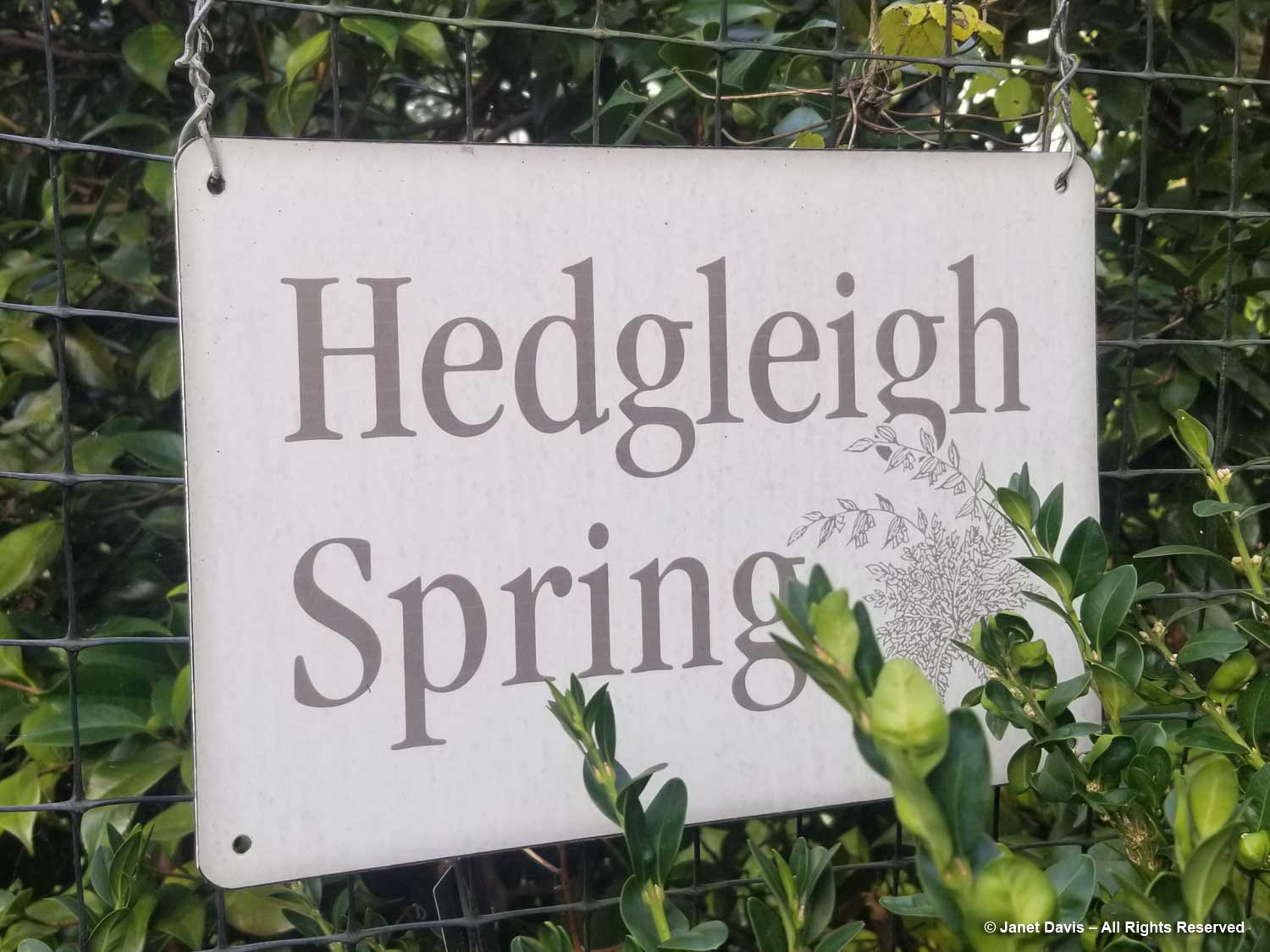
The densely-planted house border glowed with late-season perennials mixed with cannas and other tropicals. Charles grows more than 2,000 plants, including 40 types of camellia.
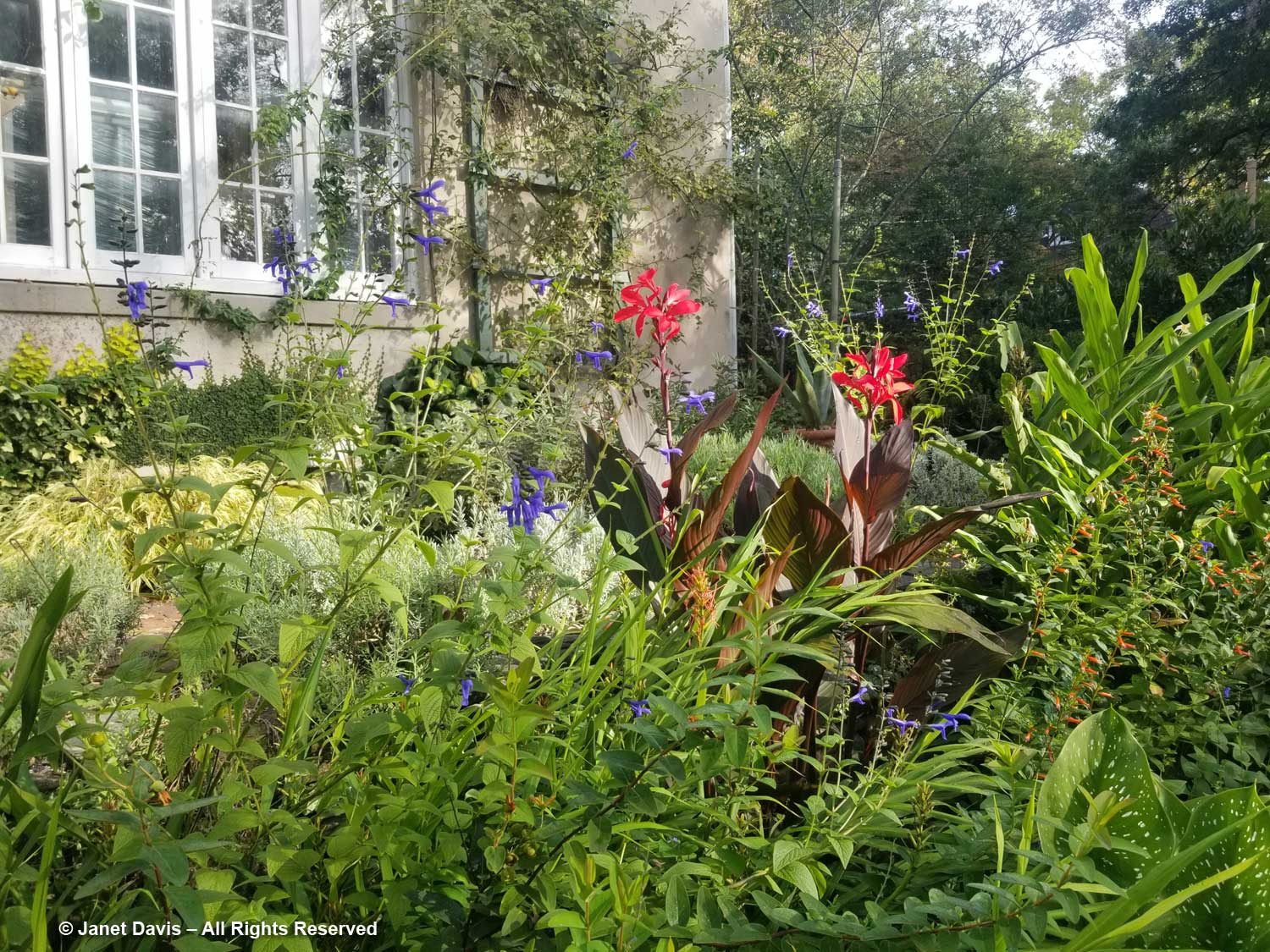
Blue anise-scented sage (Salvia guaranitica) and orange cuphea made a pretty combination. Hummingbirds would adore this border. And speaking of anise-scented sage, I learned while researching this blog that Charles Cresson introduced S. guaranitica ‘Argentina Skies’, a beautiful sky-blue cultivar of my favourite sage.
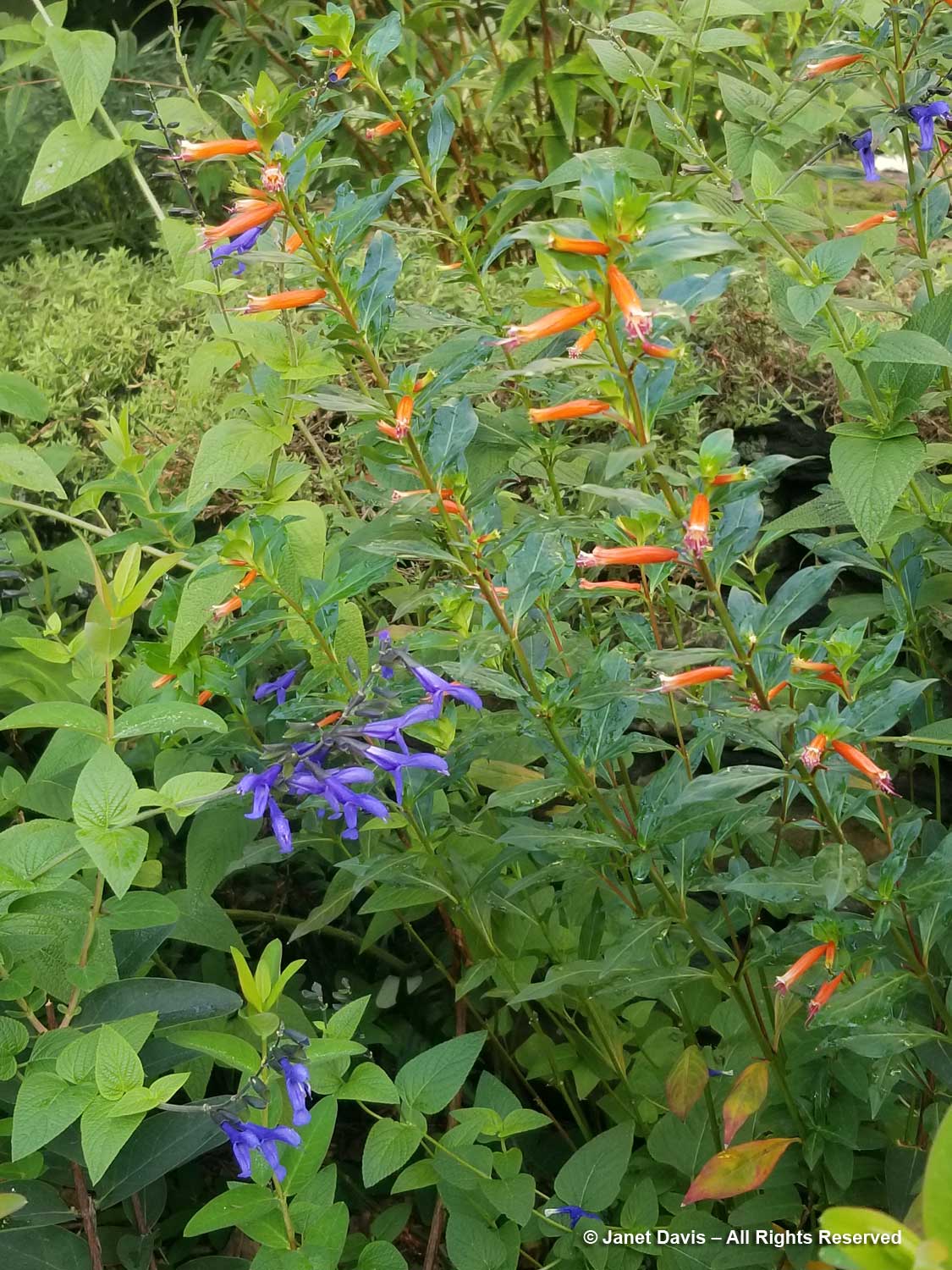
Bright-yellow sternbergias (S. lutea) were lighting up a shady area….
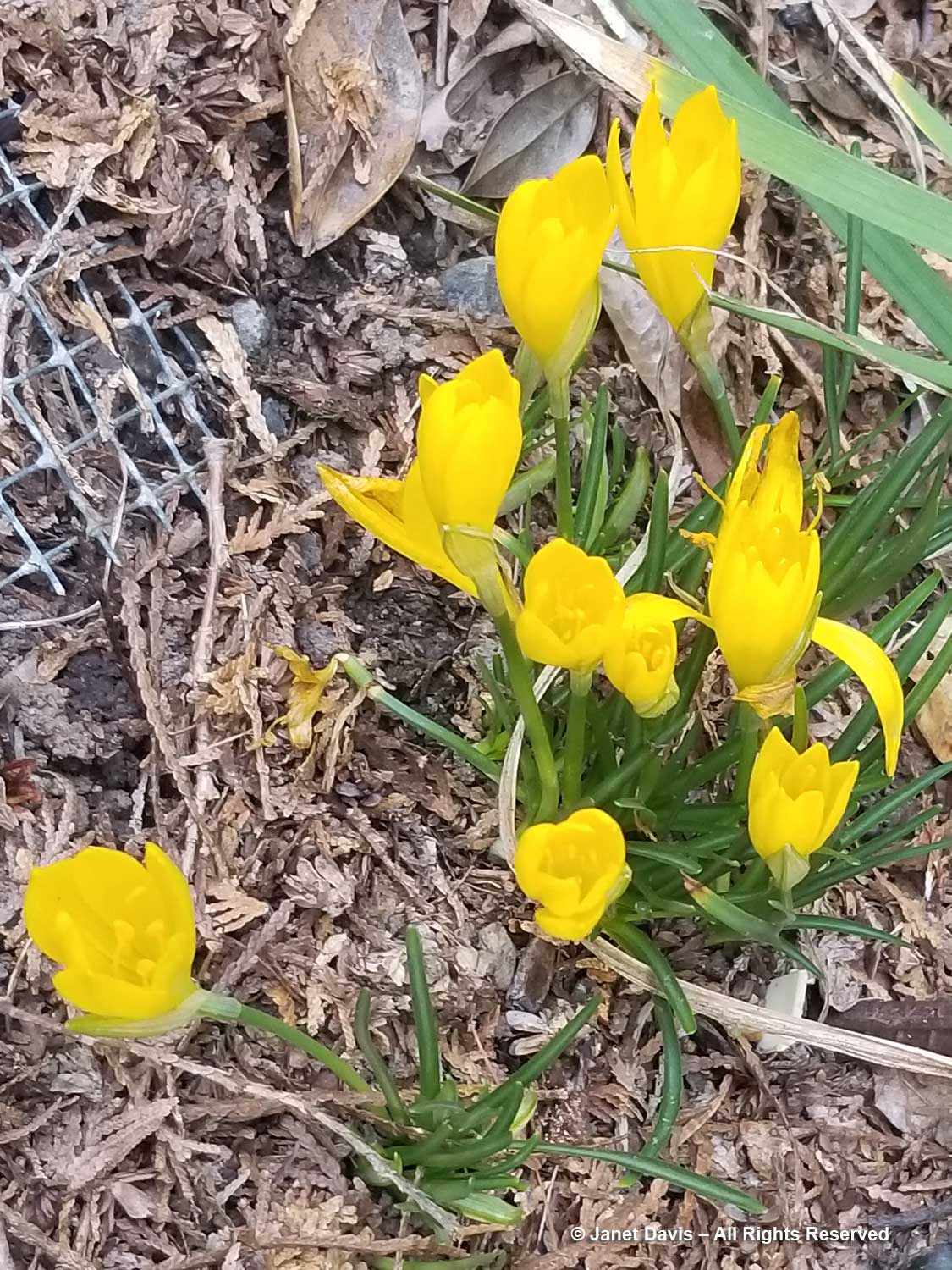
…. as were white cyclamen.
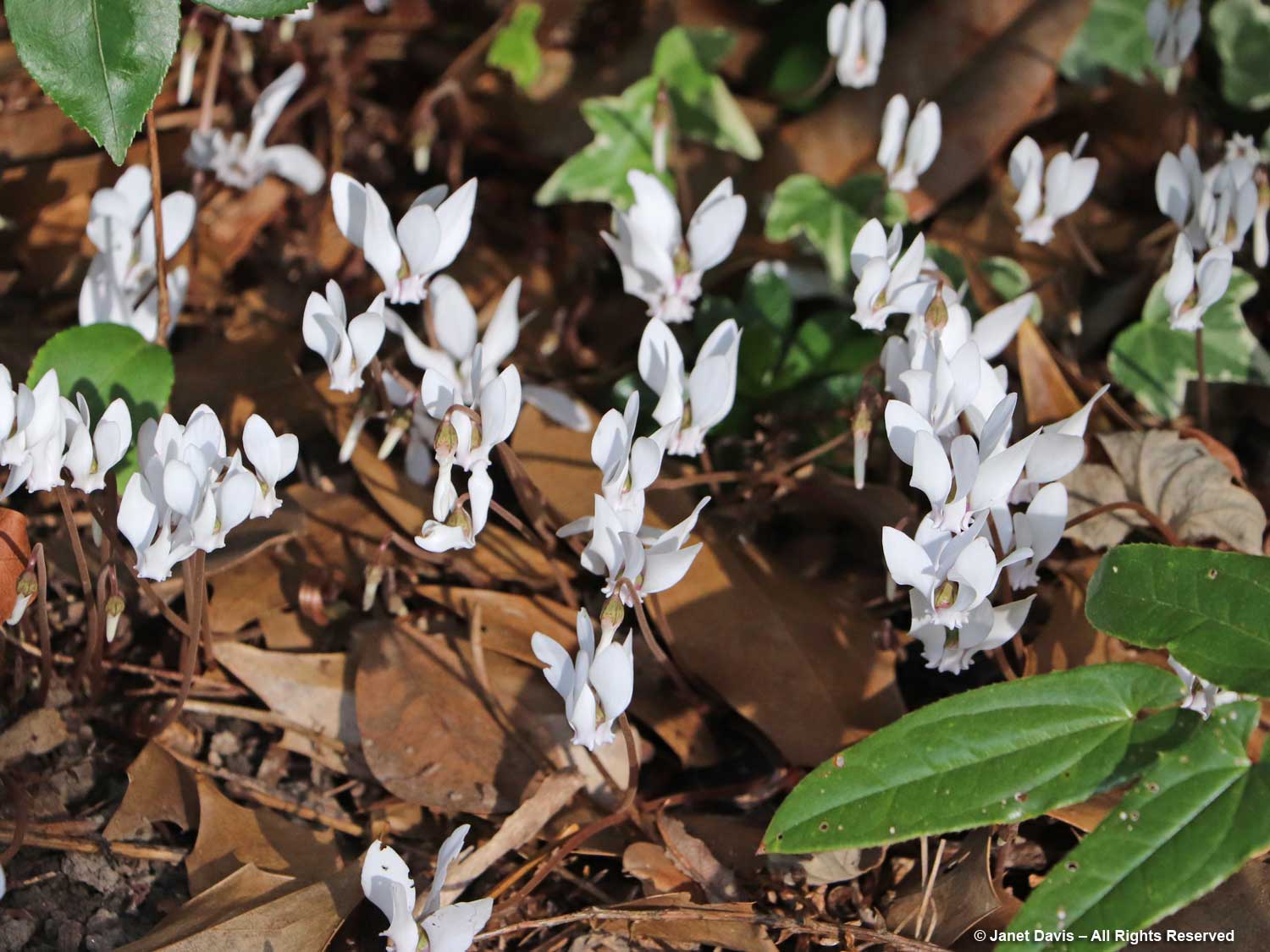
Elsewhere, the mauve flowers of Colchicum ‘Beaconsfield’ added late-season color. It’s no surprise that Charles has given workshops at Longwood Gardens on summer bulbs.
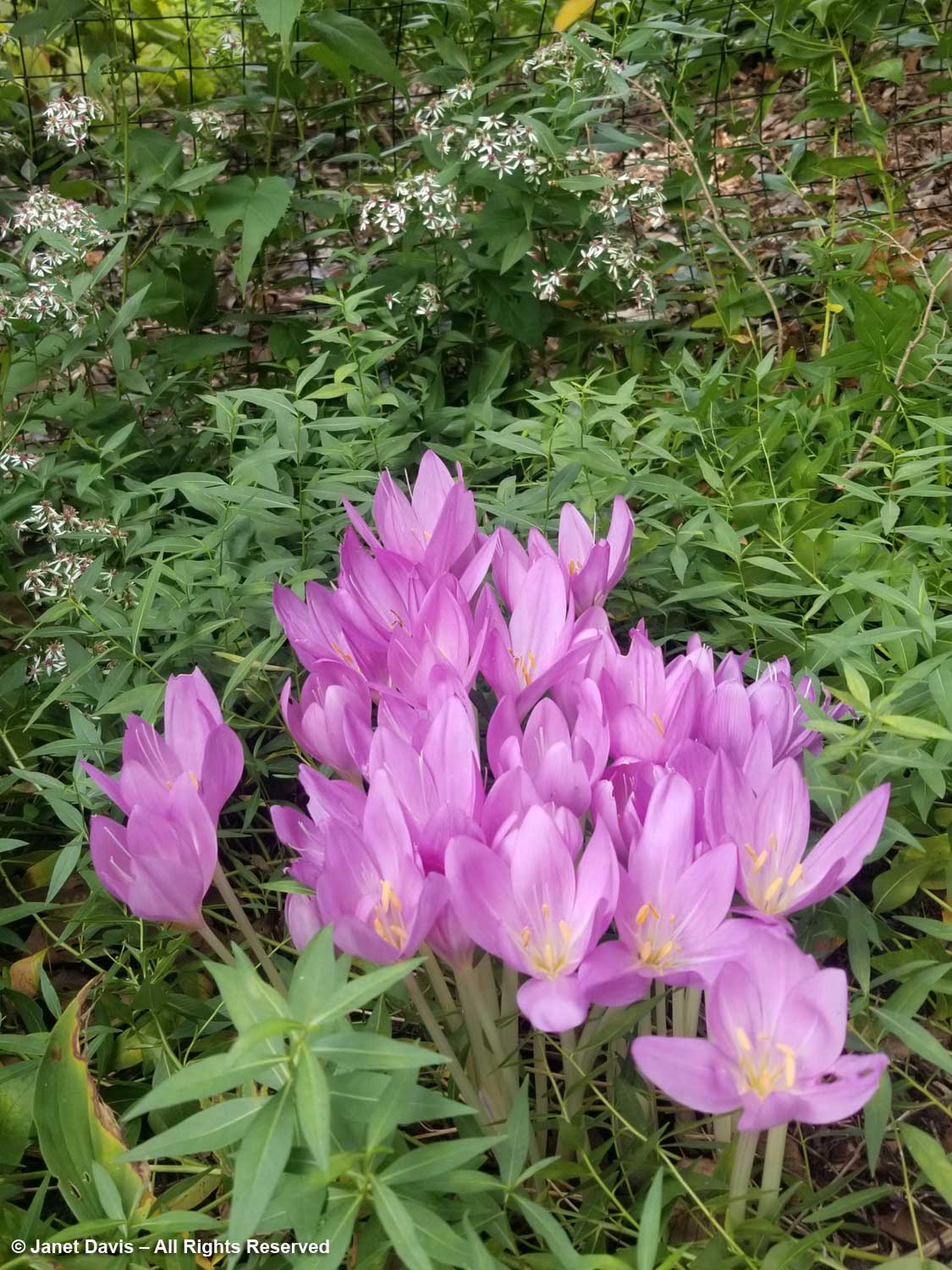
A teak bench on a red-brick patio was surrounded by pots of tropical and tender plants, including lantana, heliconia, phormium, agave, cordyline and many more. As at Andrew Bunting’s garden in my last blog, the pots spend winter indoors.
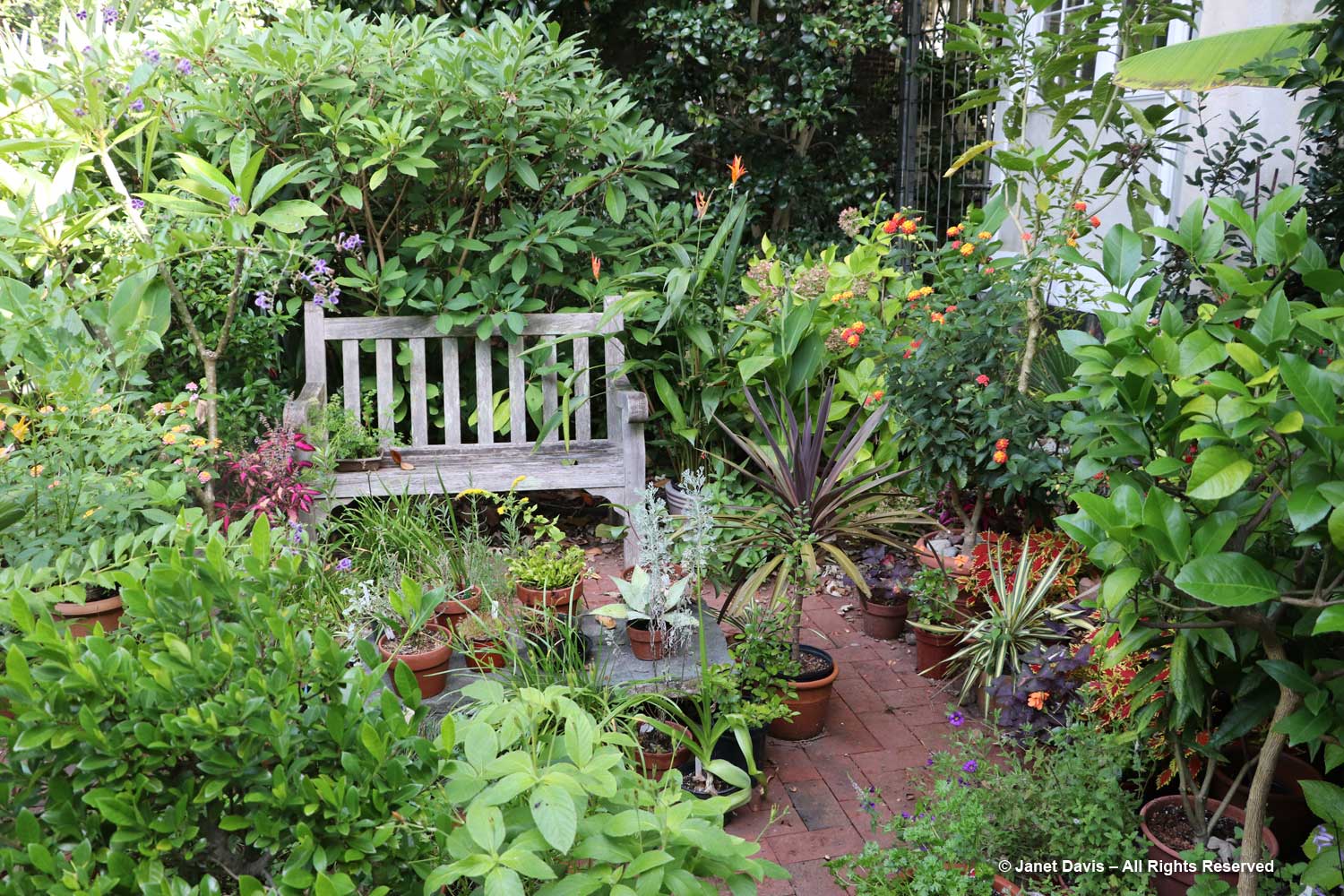
A curved white picket fence, built by Charles’s grandfather in 1954, backs a long flower border that moves from cool color schemes to hot. This is the hot-colored end with orange heleniums, red salvias and lantana, yellow dahlias and dark heuchera. I think the tall yellow-flowered plant is Helianthus ‘Lemon Queen’.
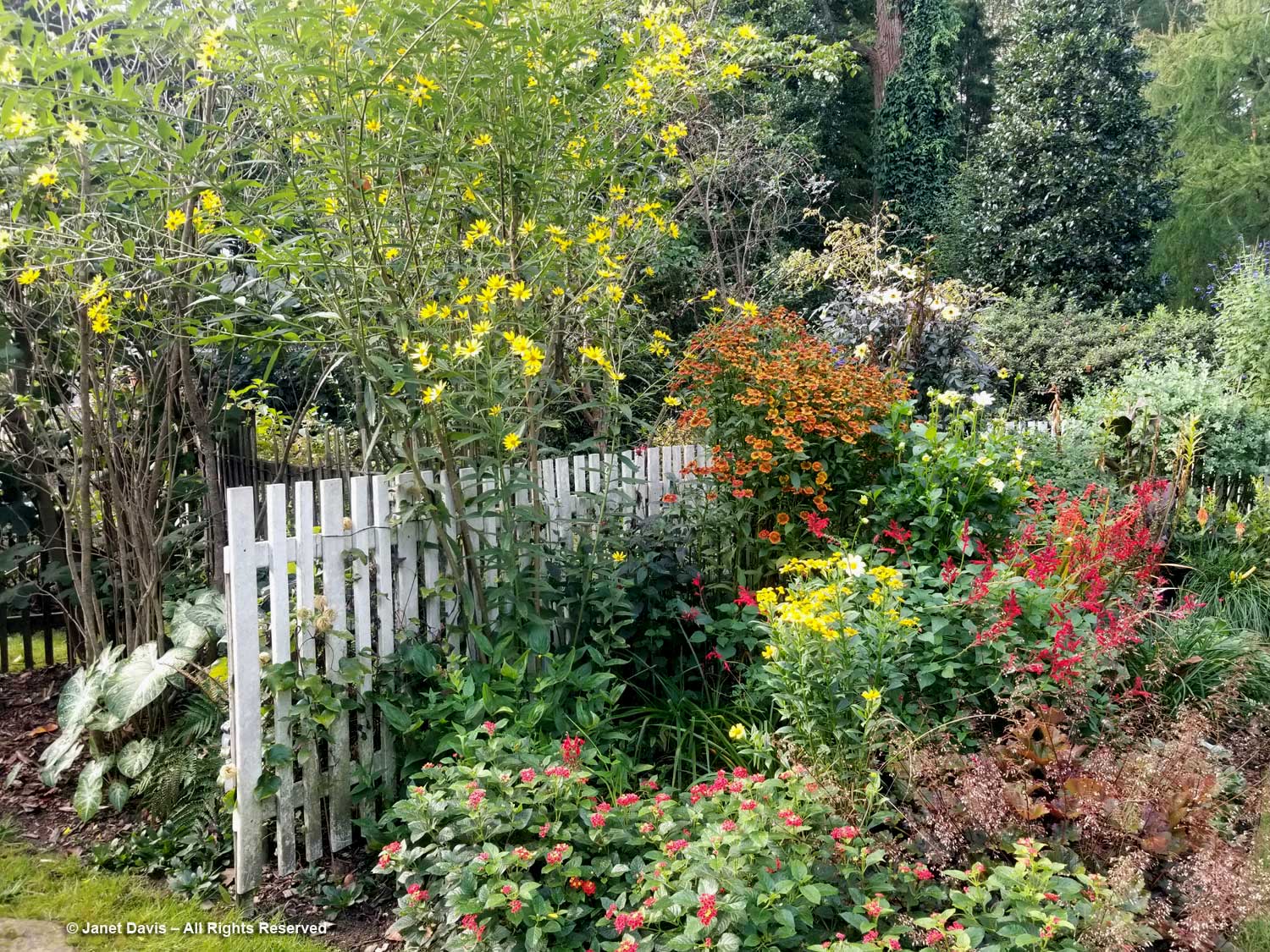
Bumble bees were enjoying nectaring on the late-season helianthus flowers.
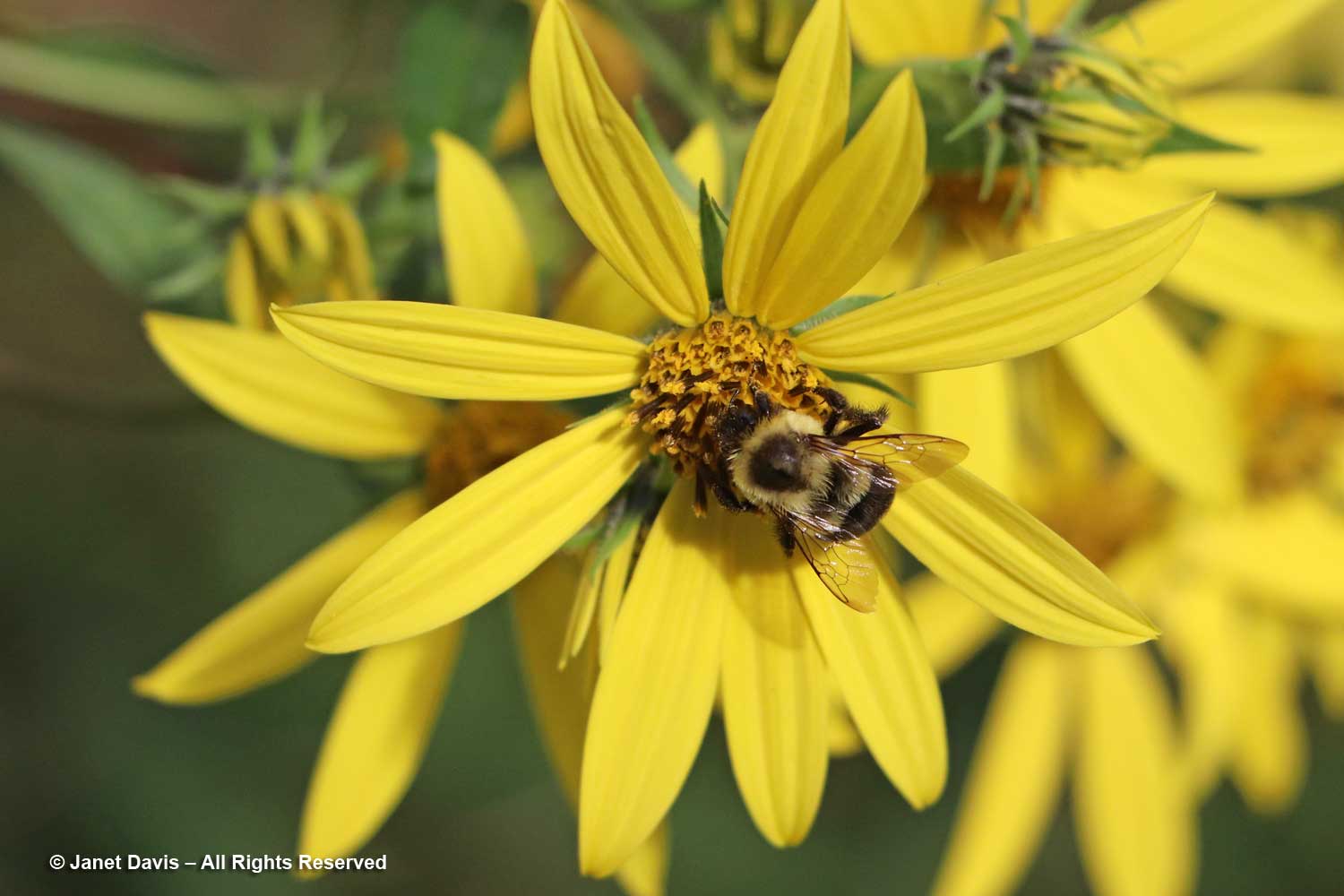
A flagstone-paved section in front of the fence displays a collection of tender plants in pots.
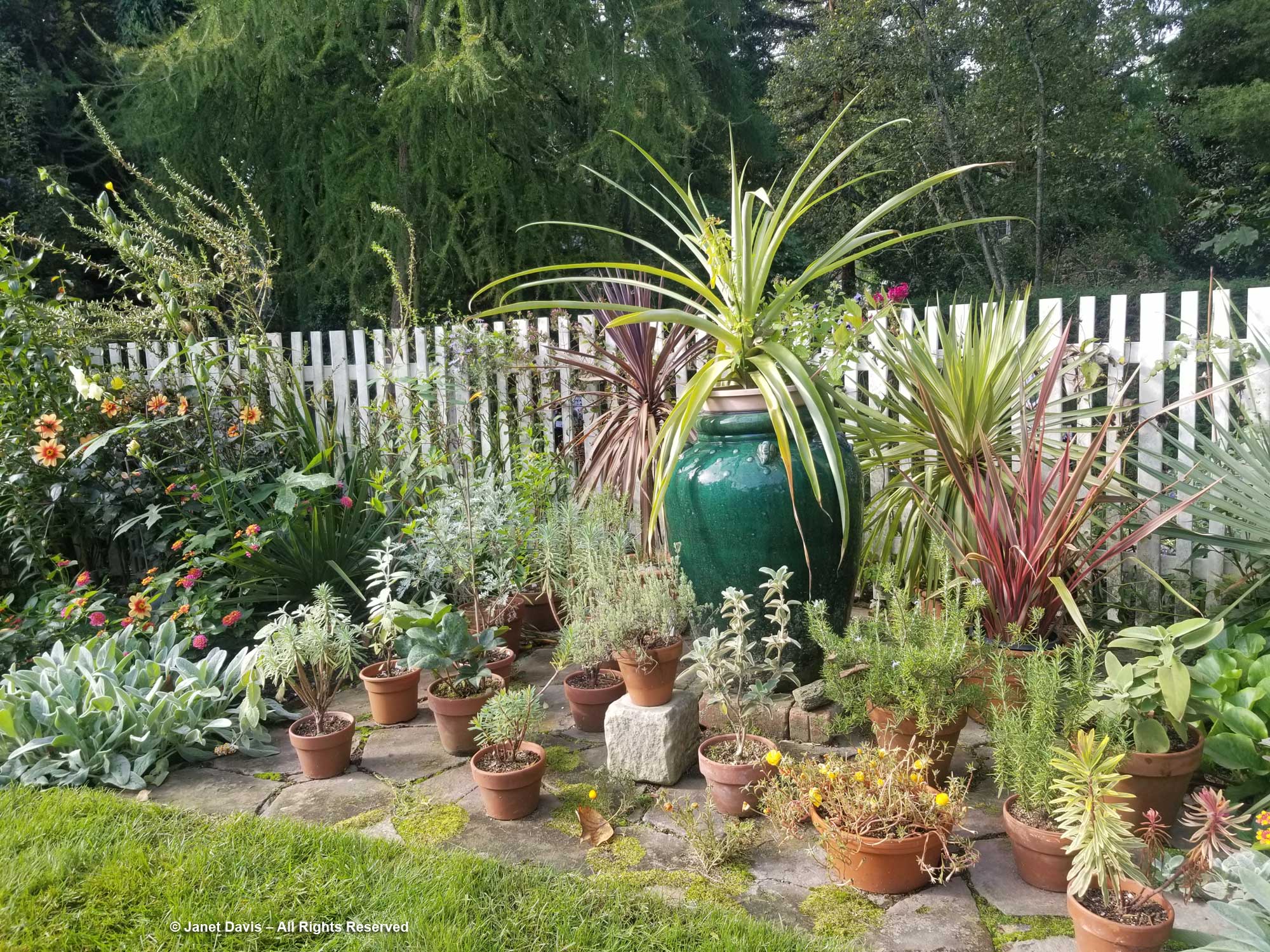
On the cooler end of the border, a peach sage (Salvia splendens) paired nicely with a lavender aster.
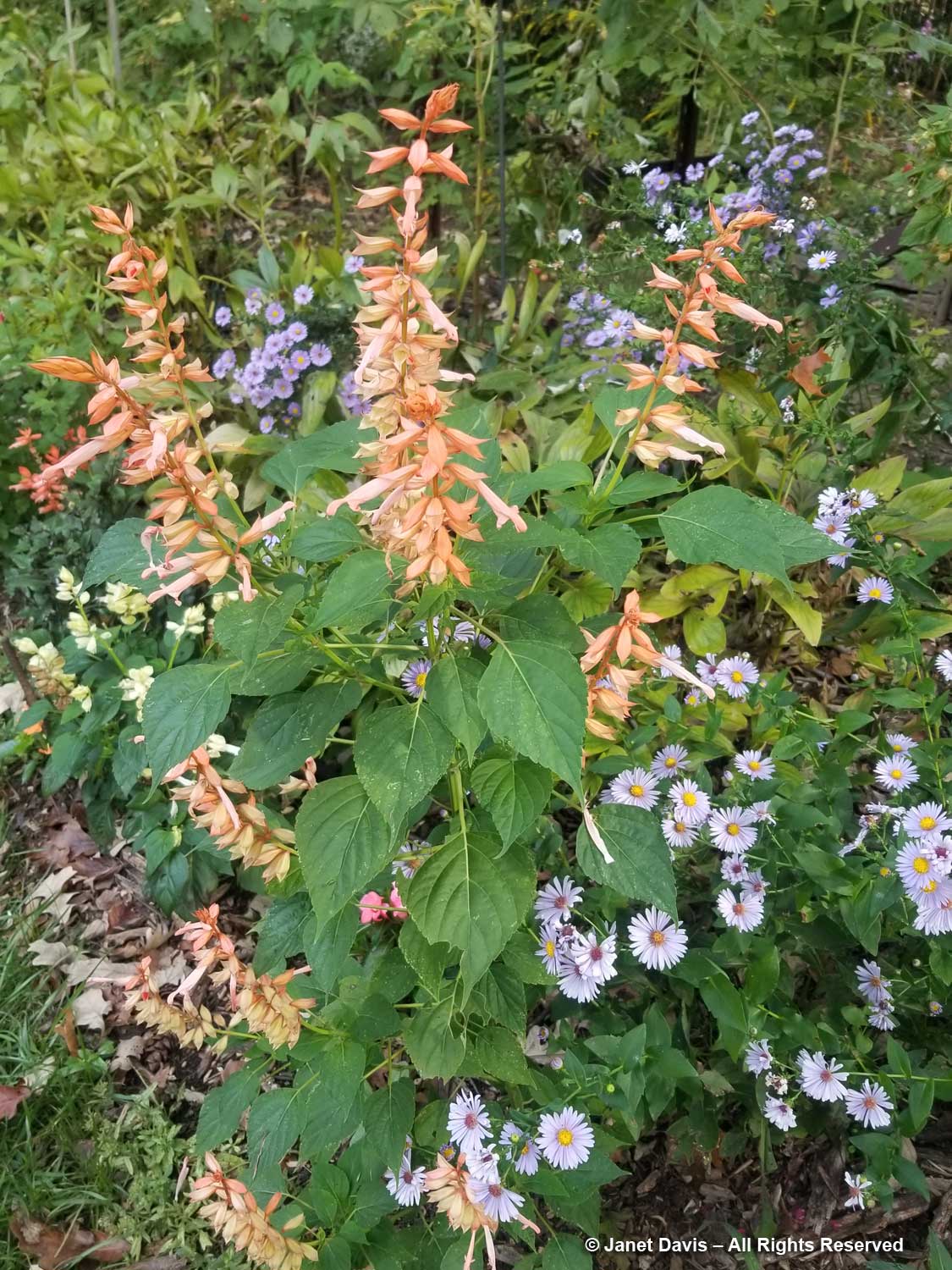
Wandering in a different part of the garden, I found the beautiful flowers and green fruit of native maypop vine (Passiflora incarnata), reportedly similar in taste to guava.
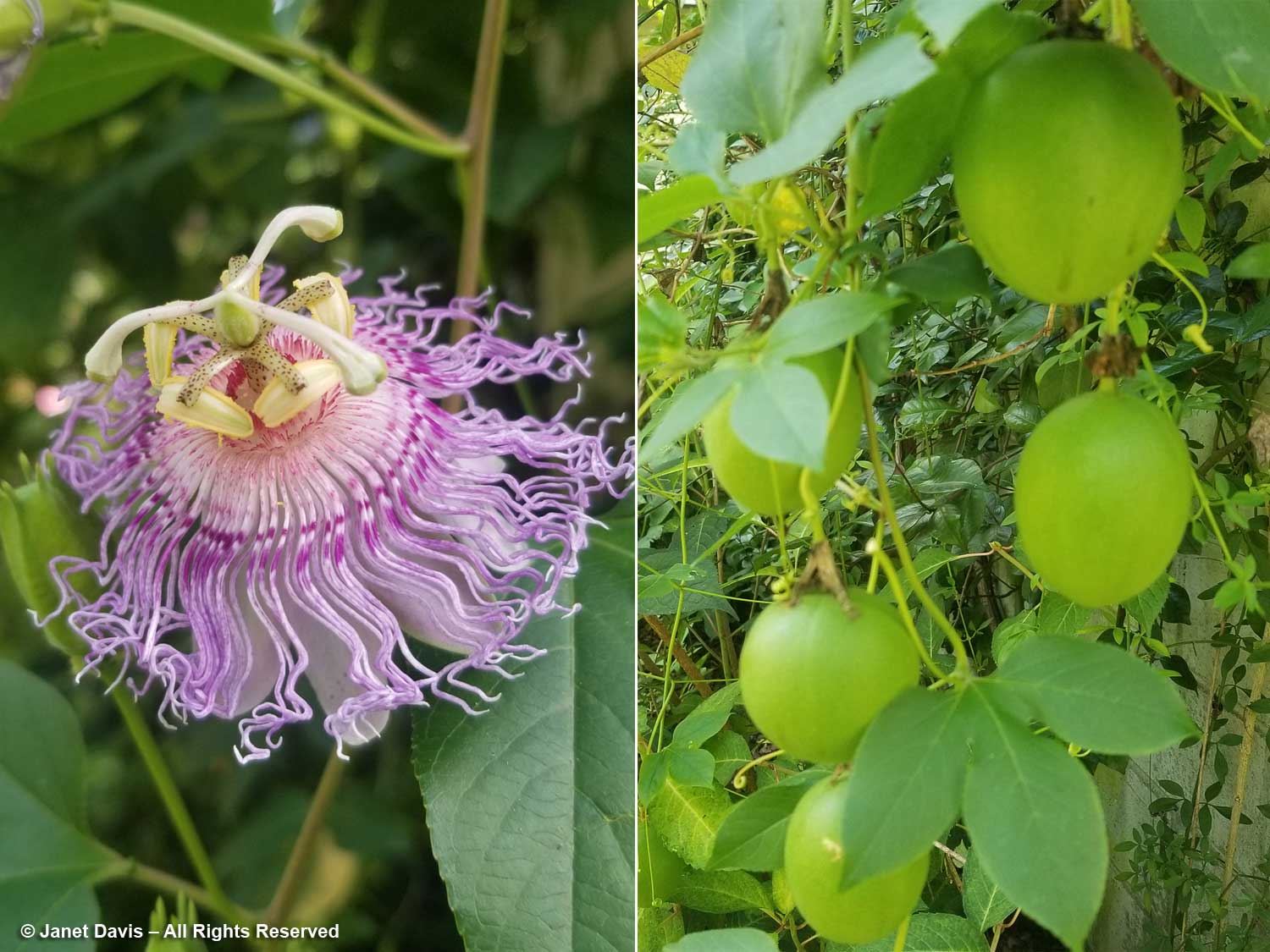
Trees in the garden were reflected in a pond…
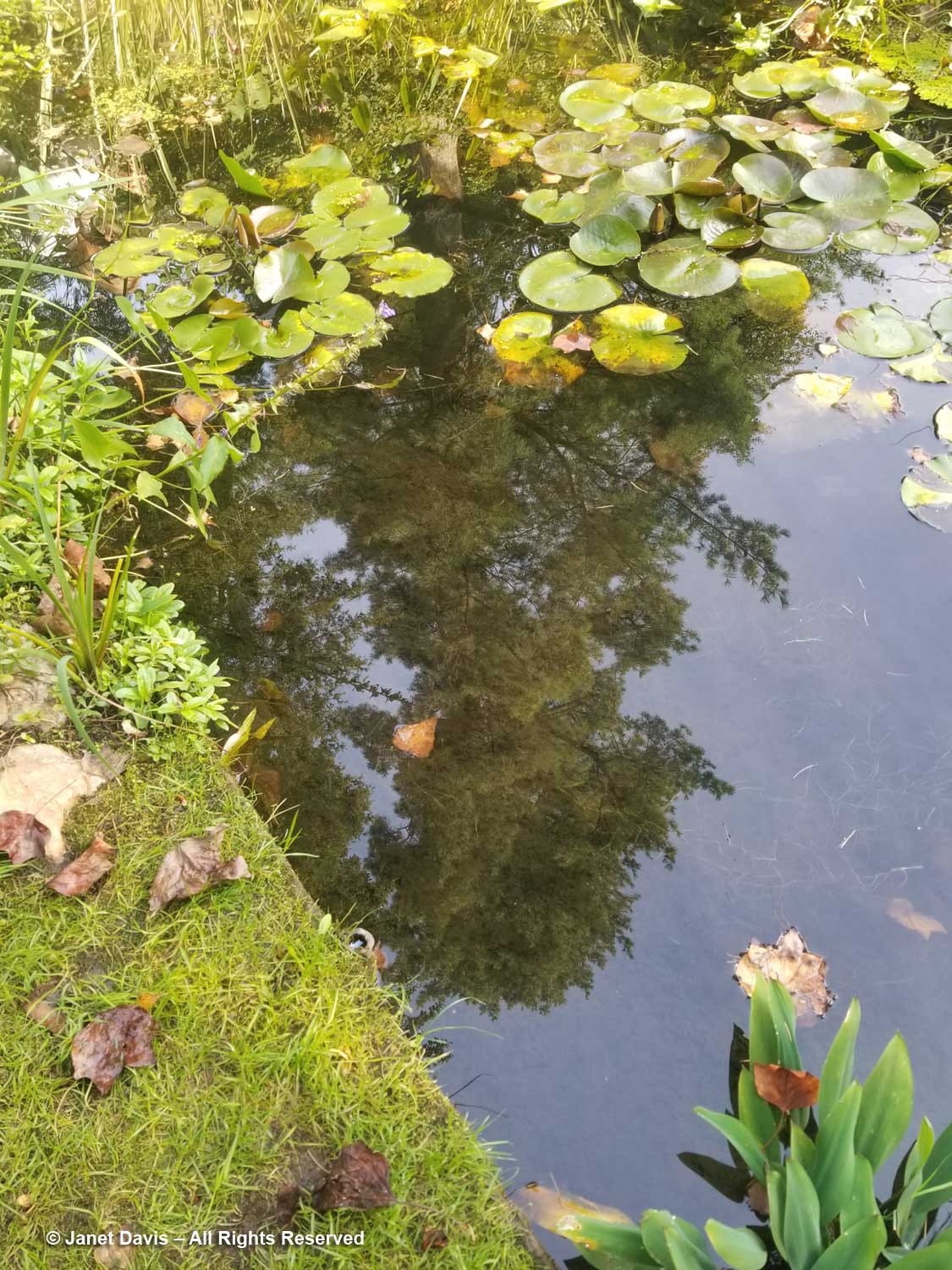
…. and in the damp soil at its edge was a carnivrous pitcher plant (Sarracenia leucophylla).
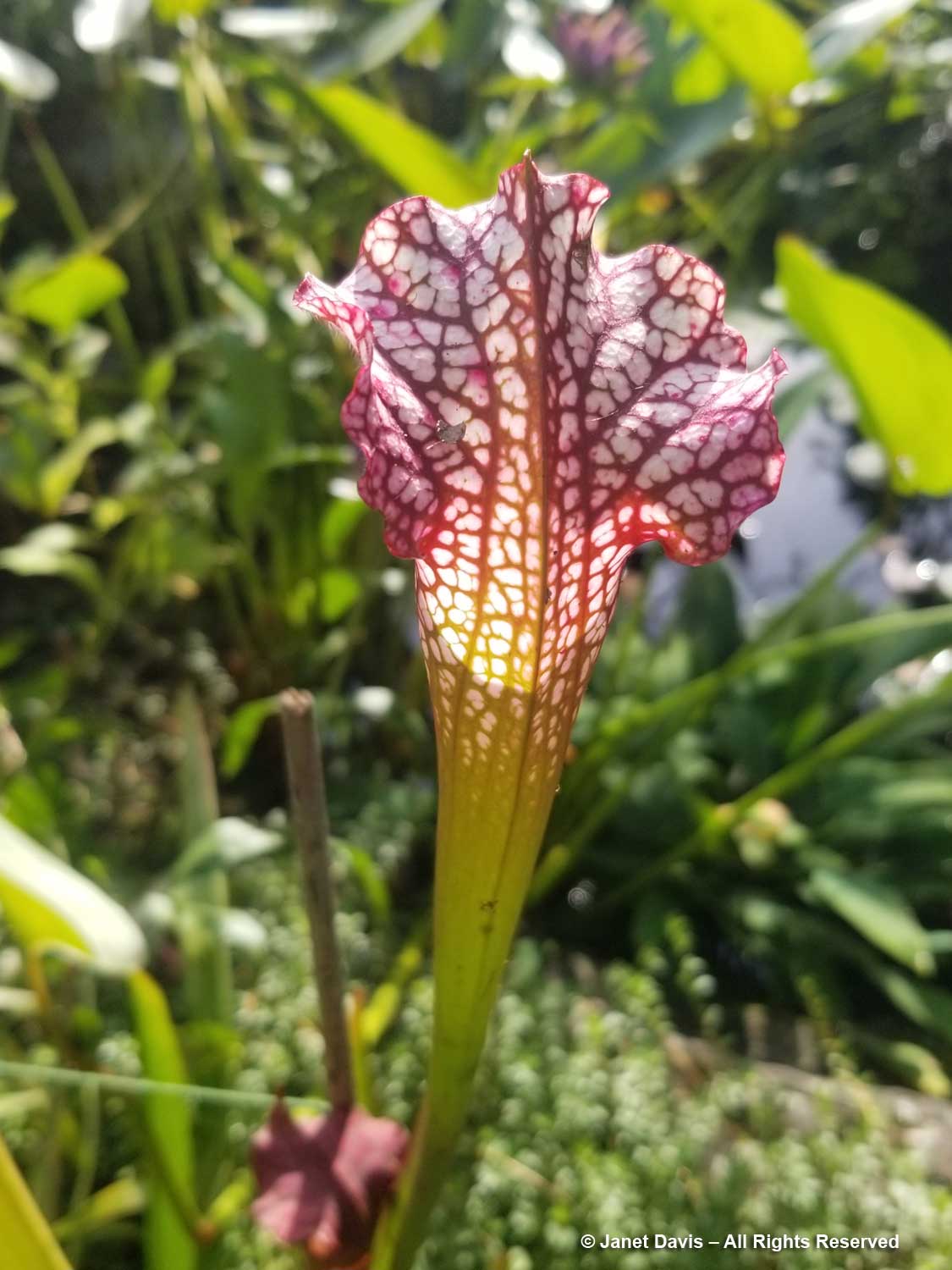
Pots surrounded a bench in a shady niche where rhododendrons and other spring beauties thrive.
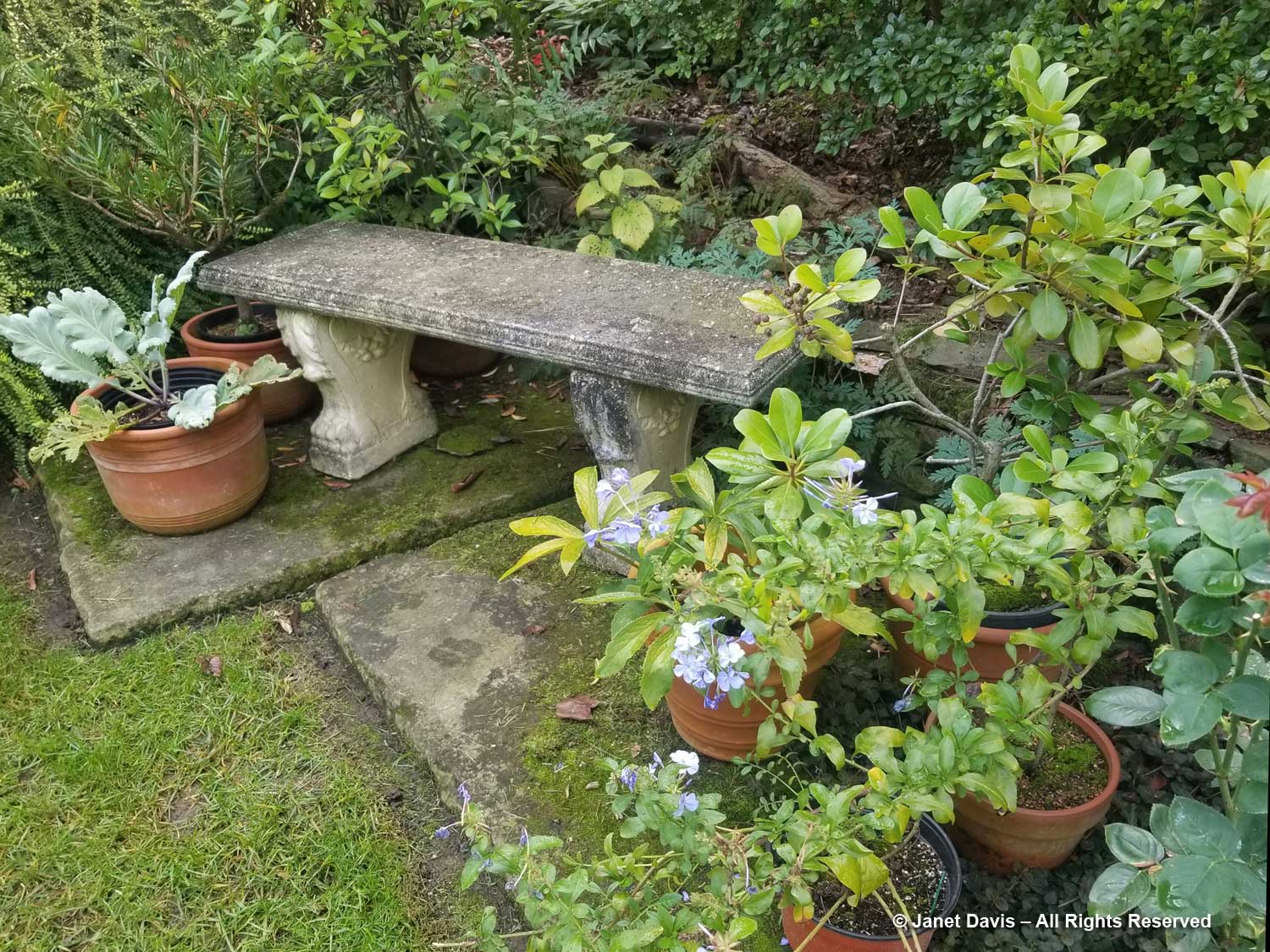
We were being called to the bus when I saw the vegetable garden, so I only had time to snap a quick shot, but tomatoes were still ripening, the biggest protected from hungry critters.
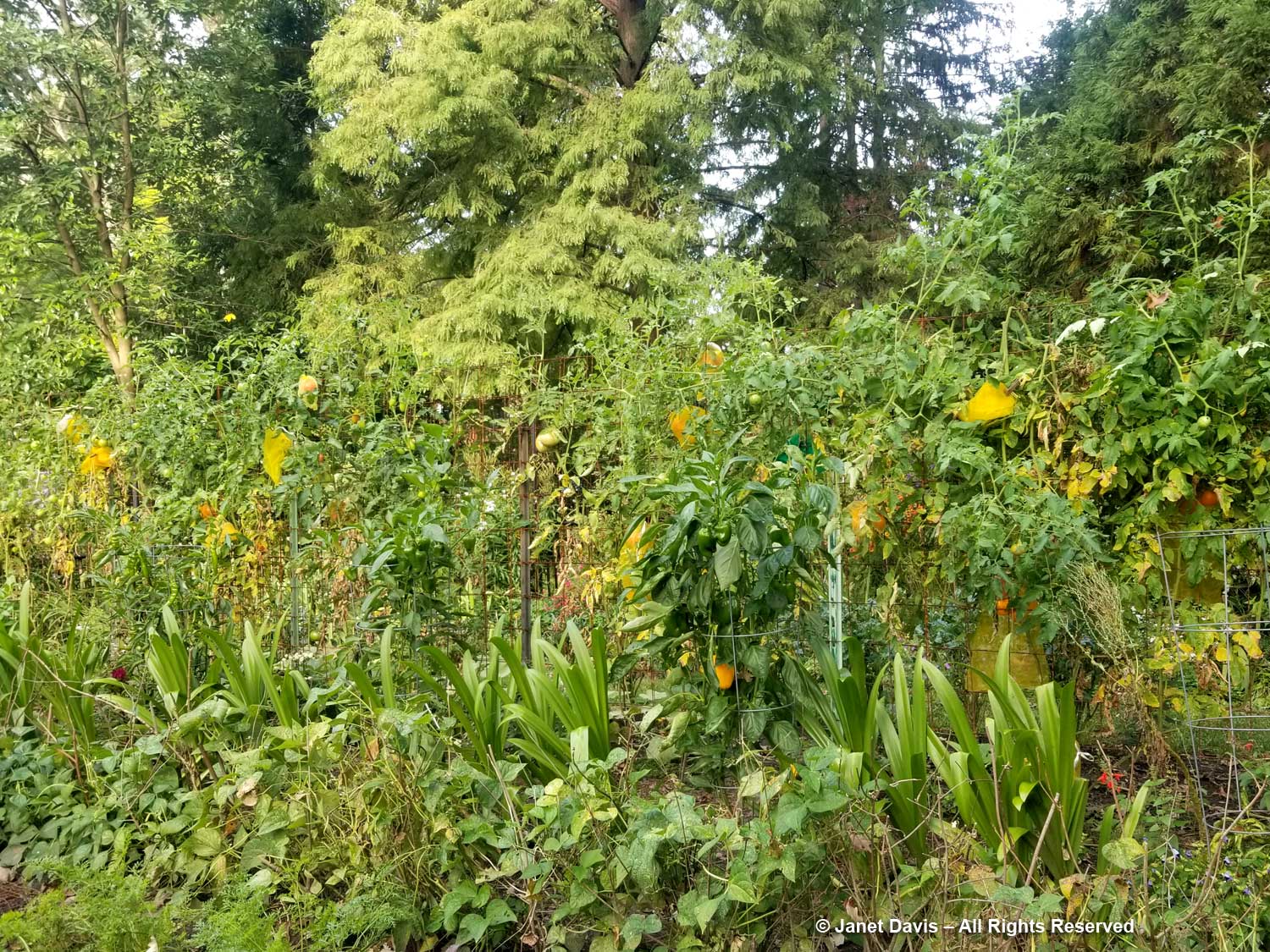
I was impressed with the moss on this structure – which I think might be the original 19th century pump house.
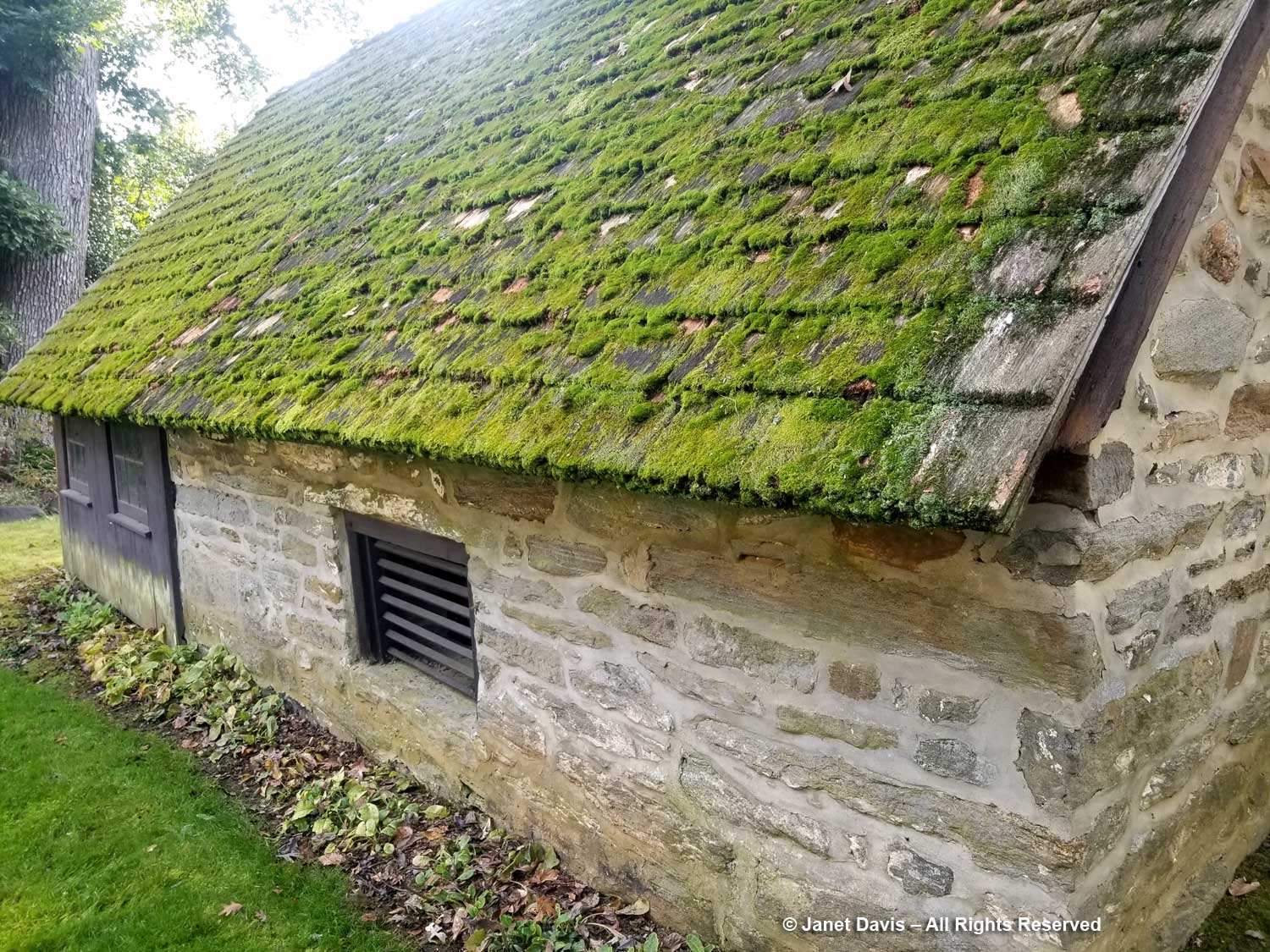
And what garden blogger doesn’t enjoy a brief opportunity to find their inner child?
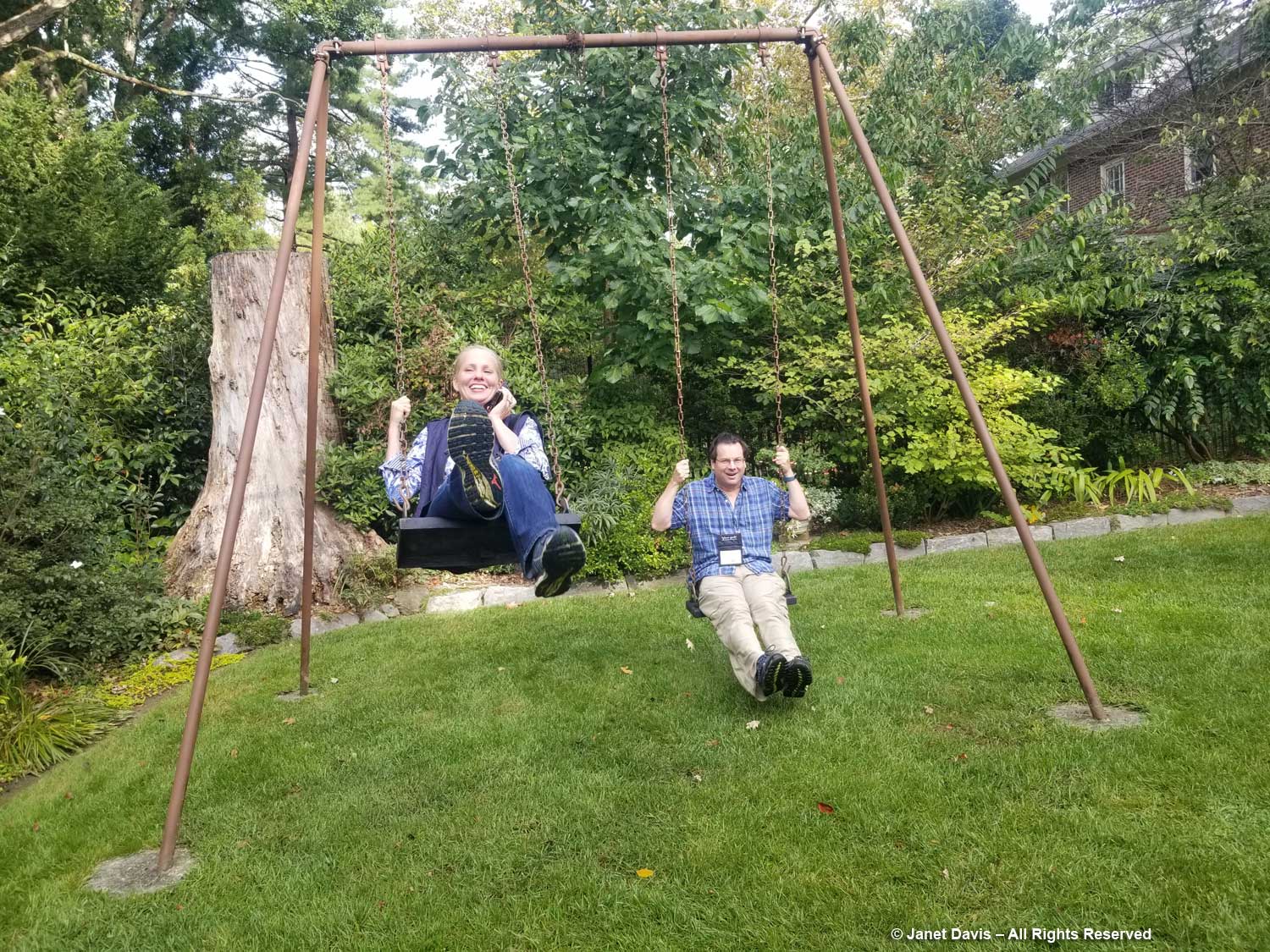
Thank you Charles, for opening your beautiful garden – even if it was much too short a visit.

